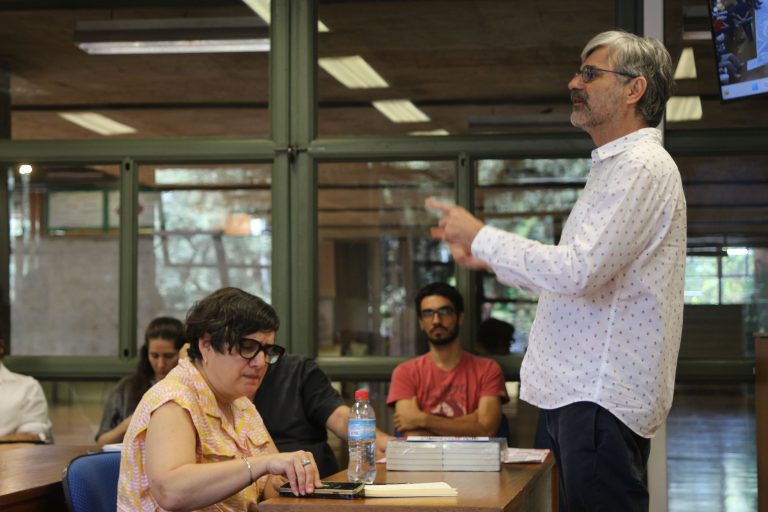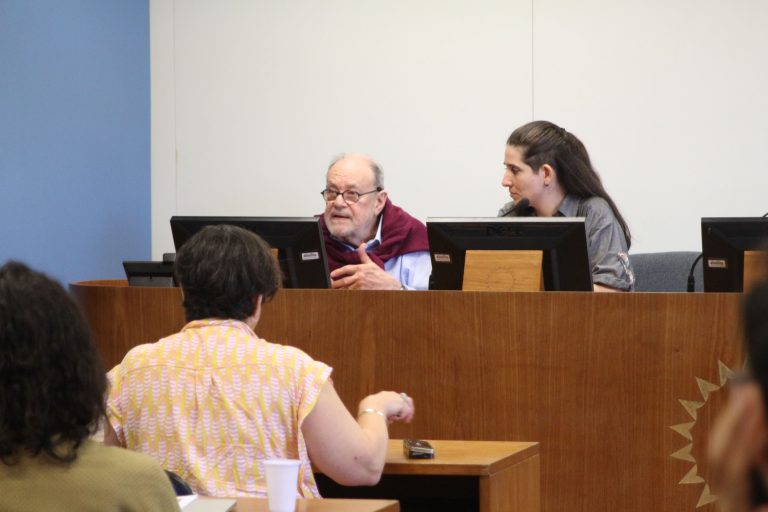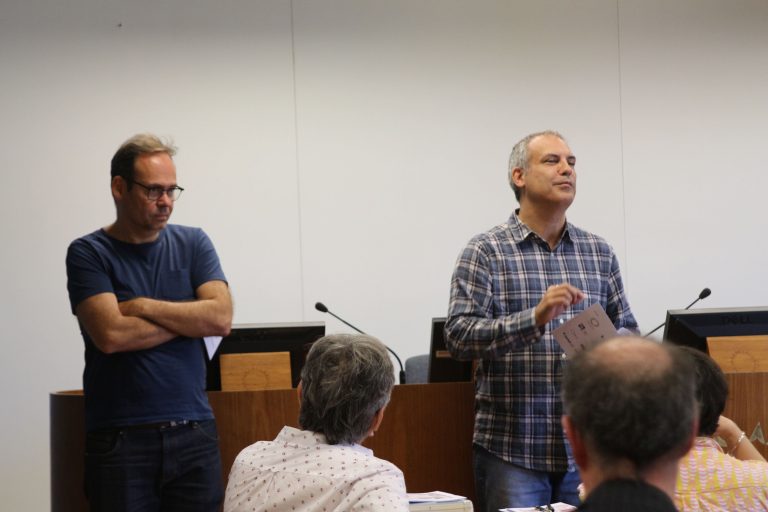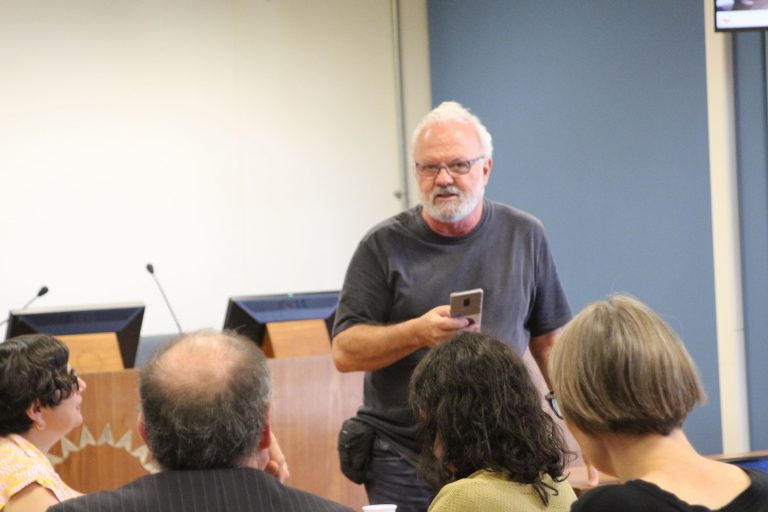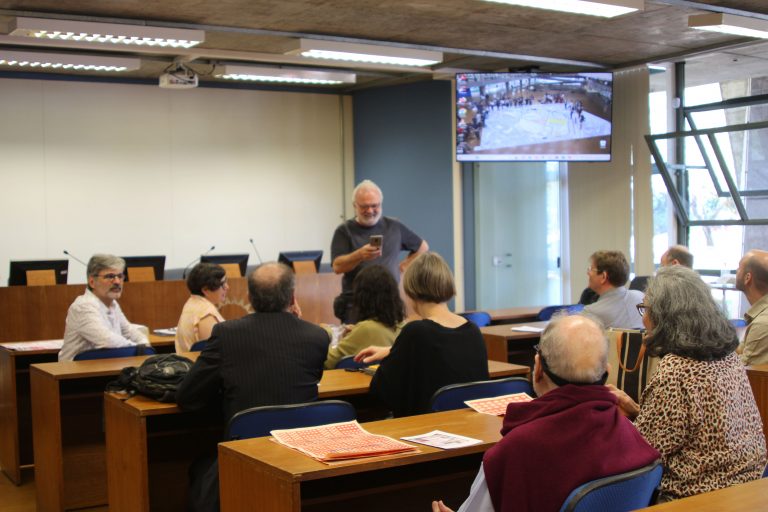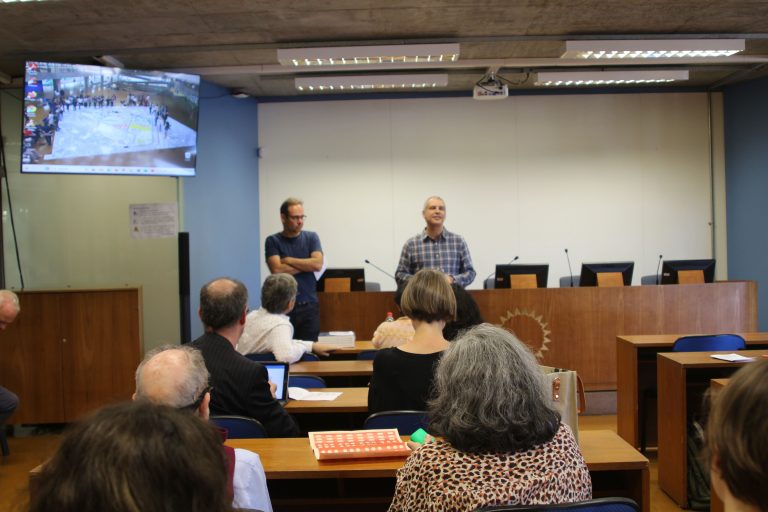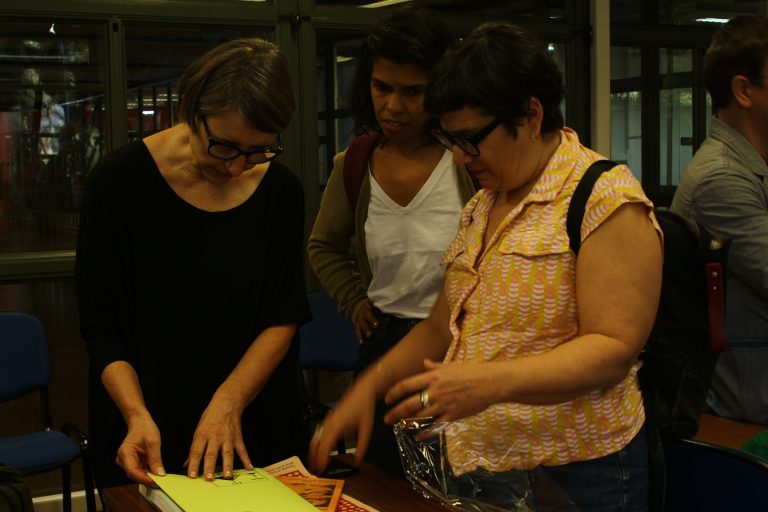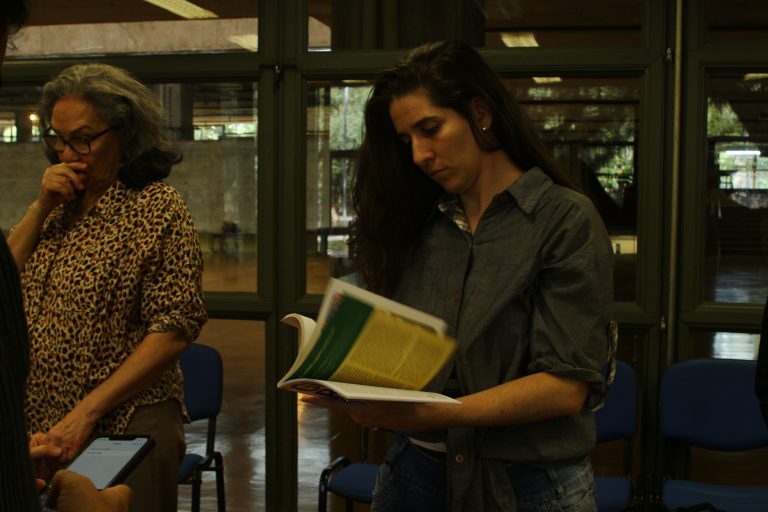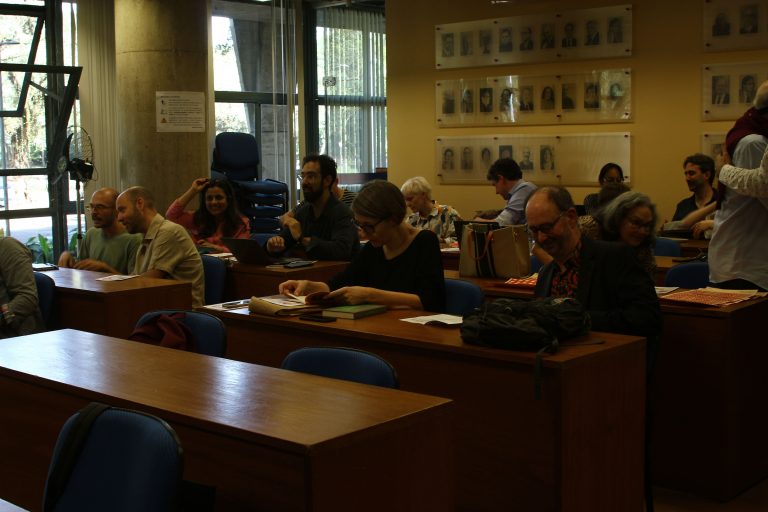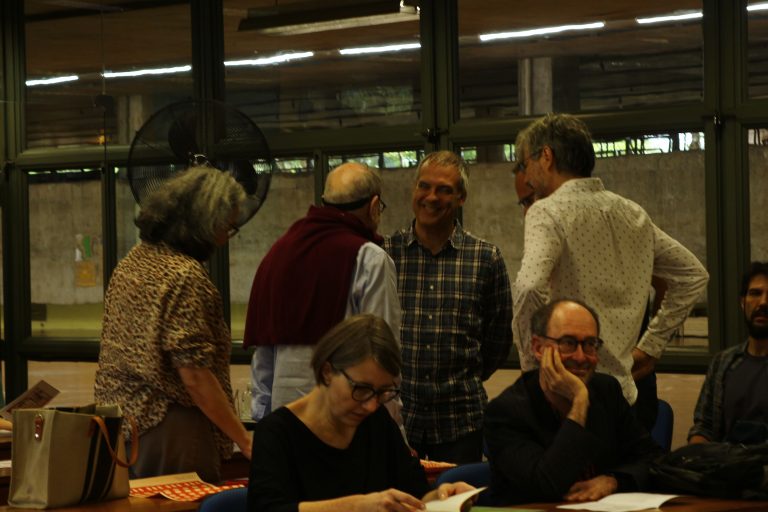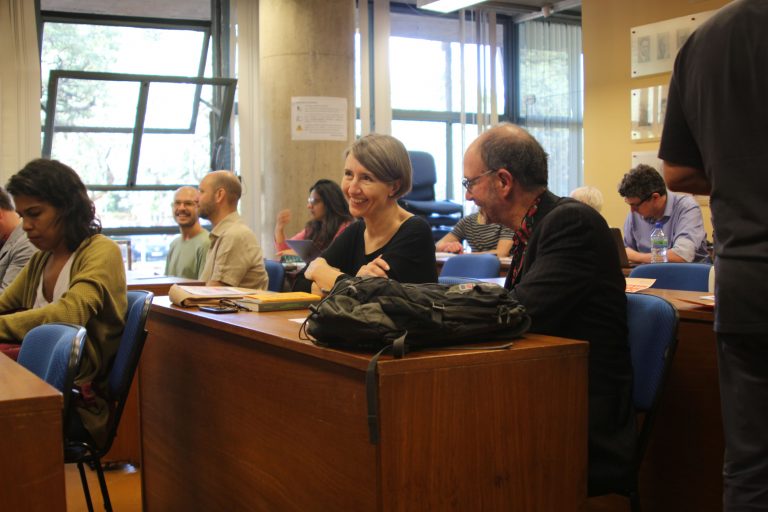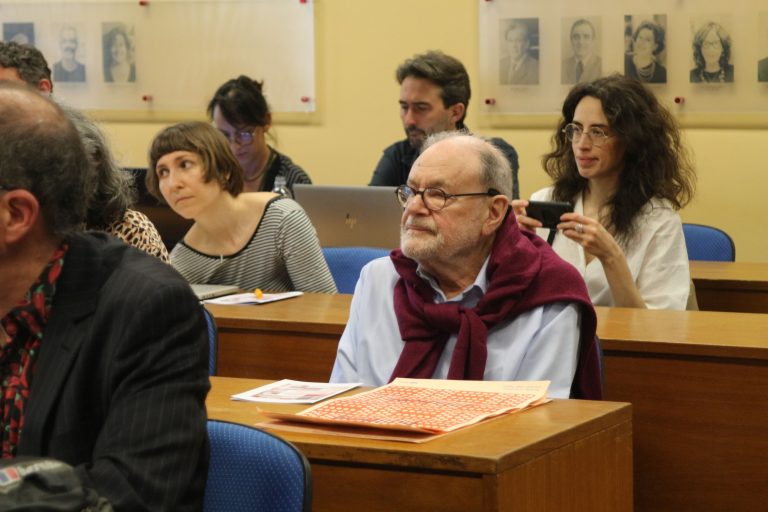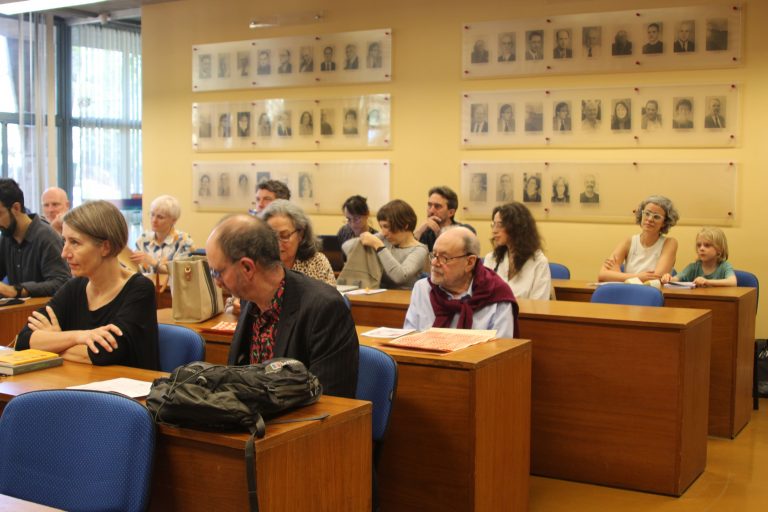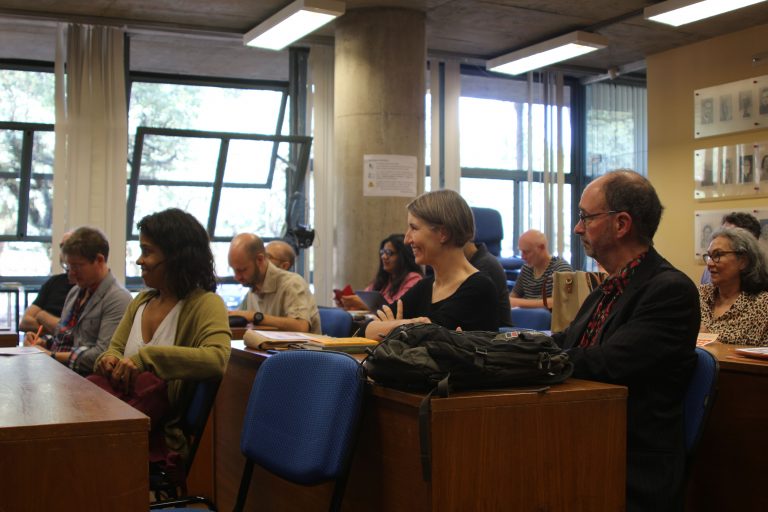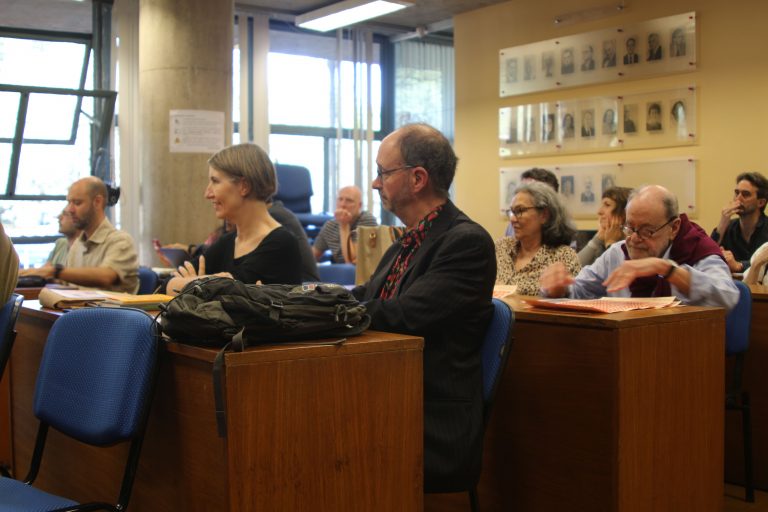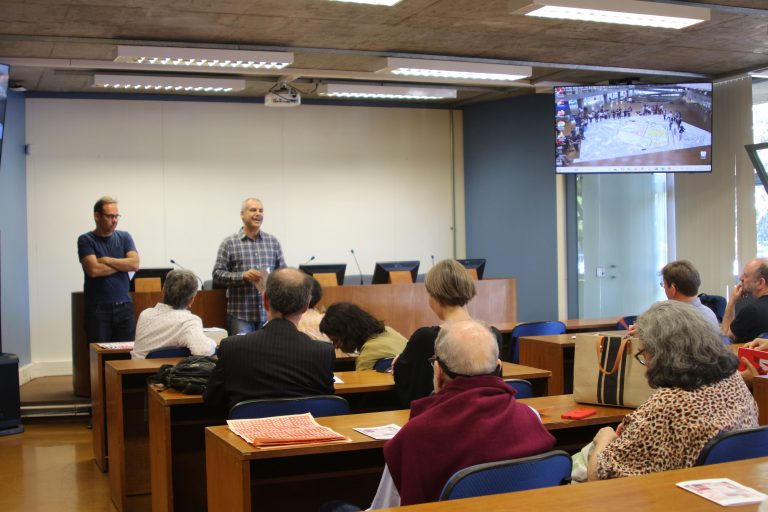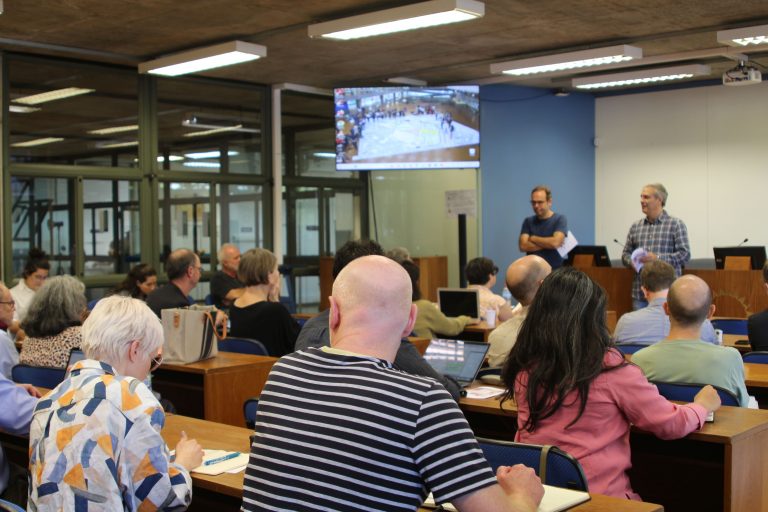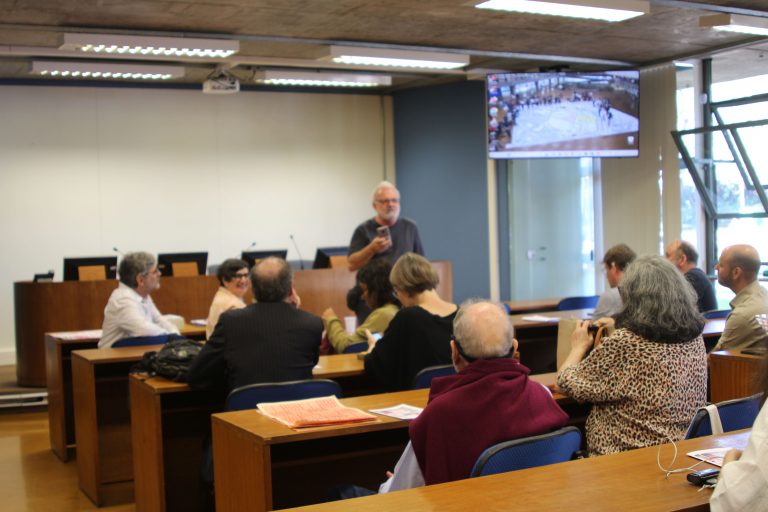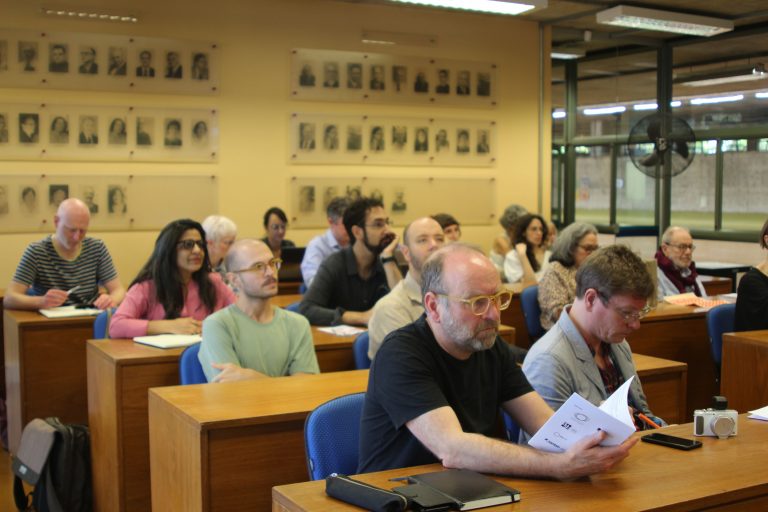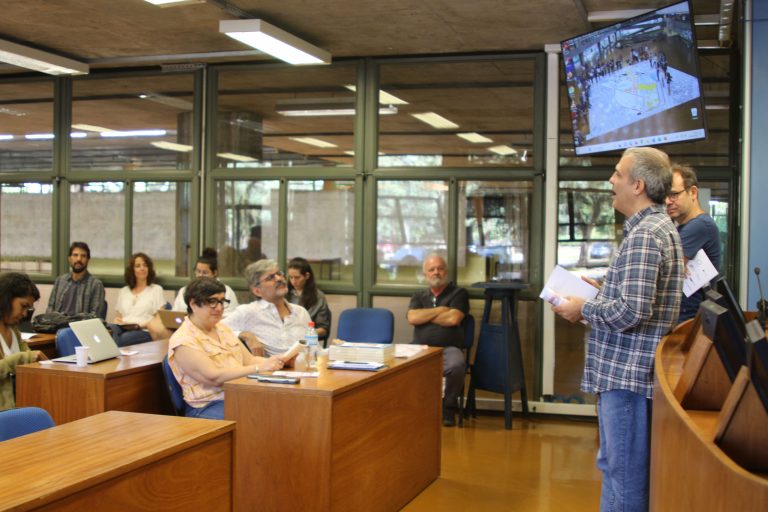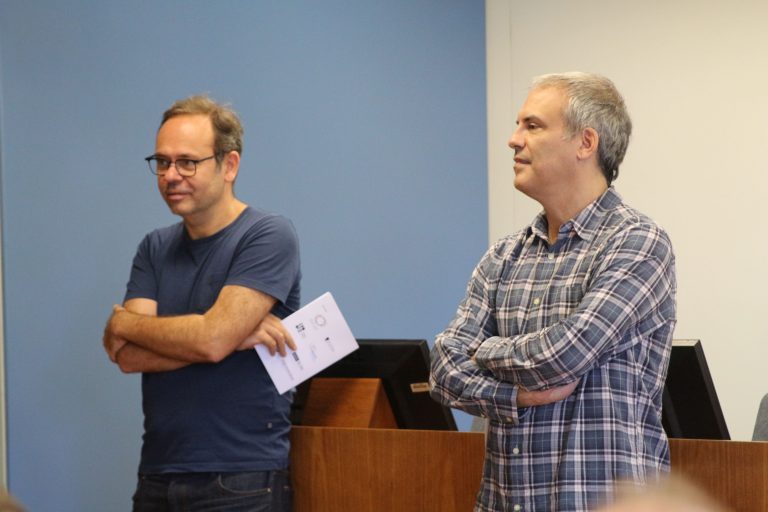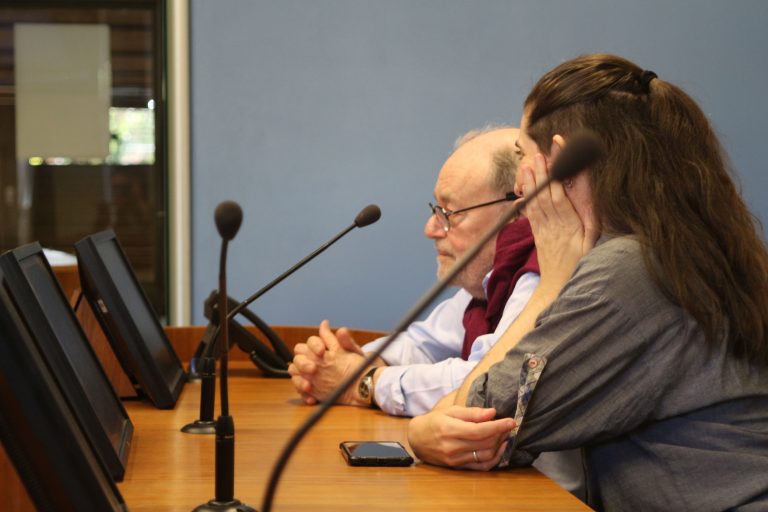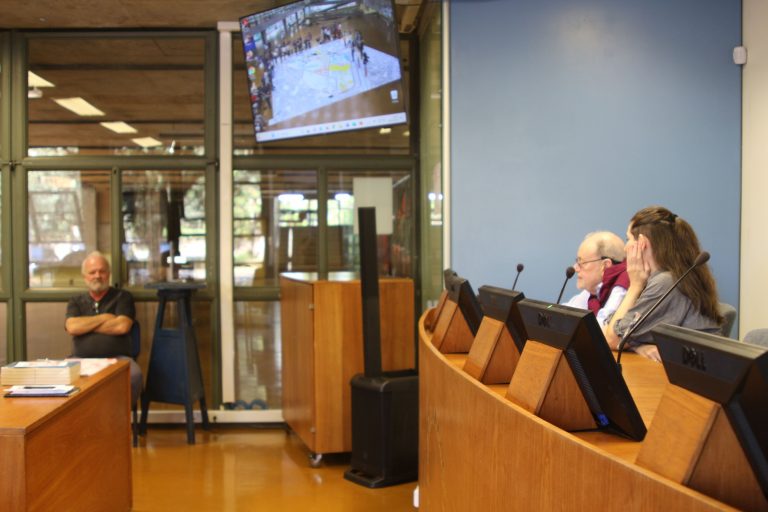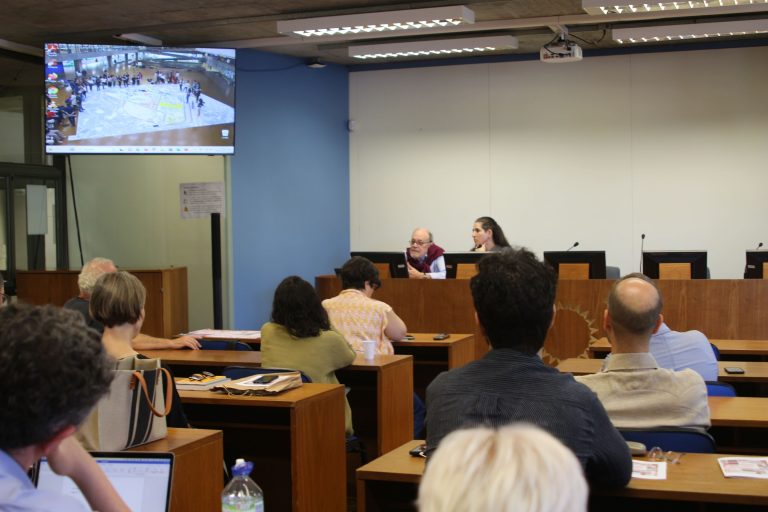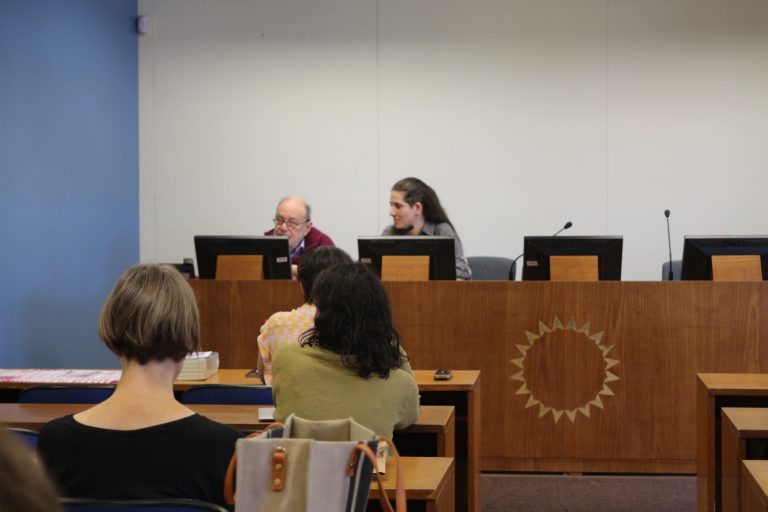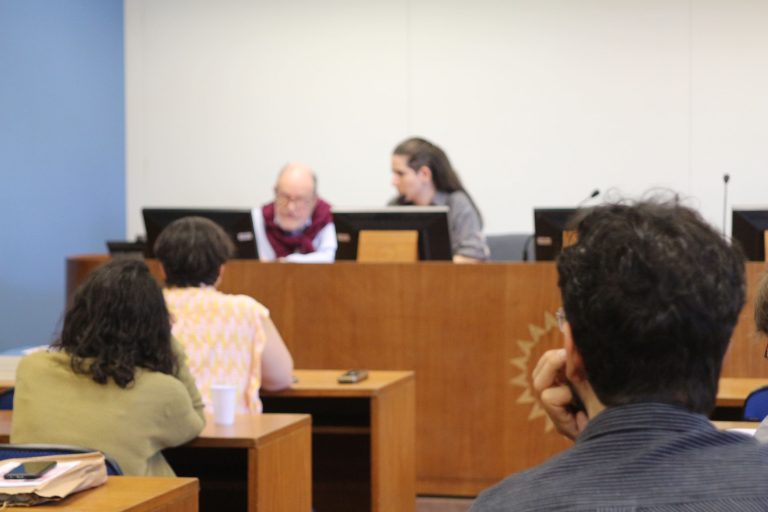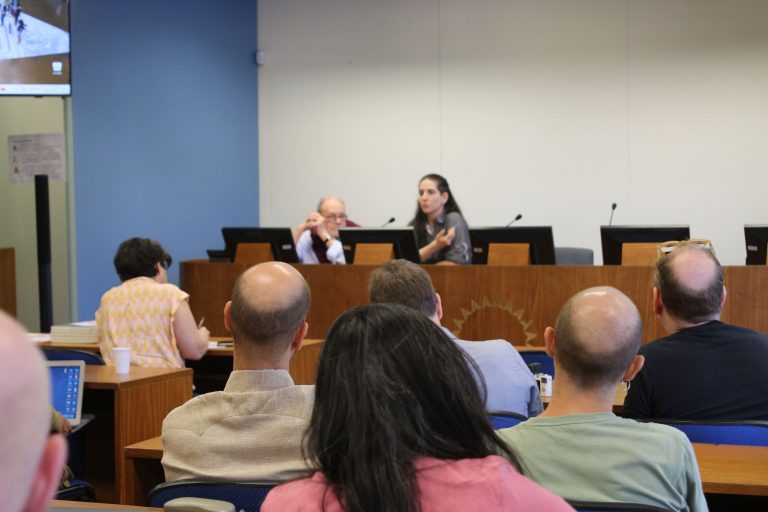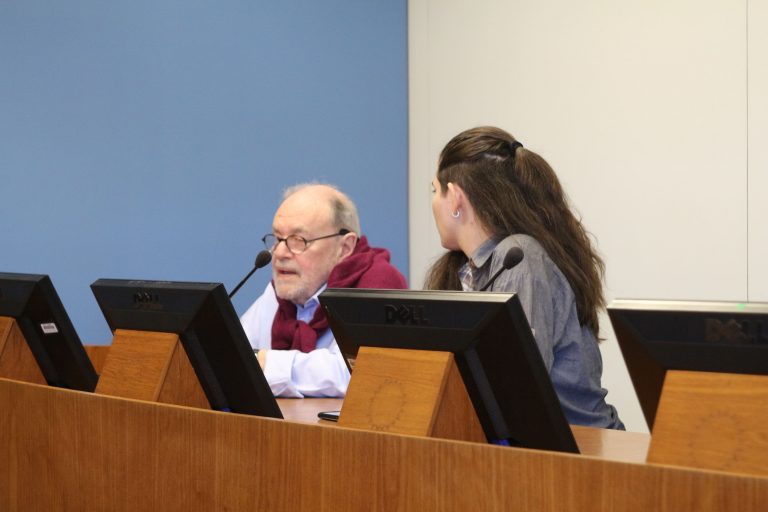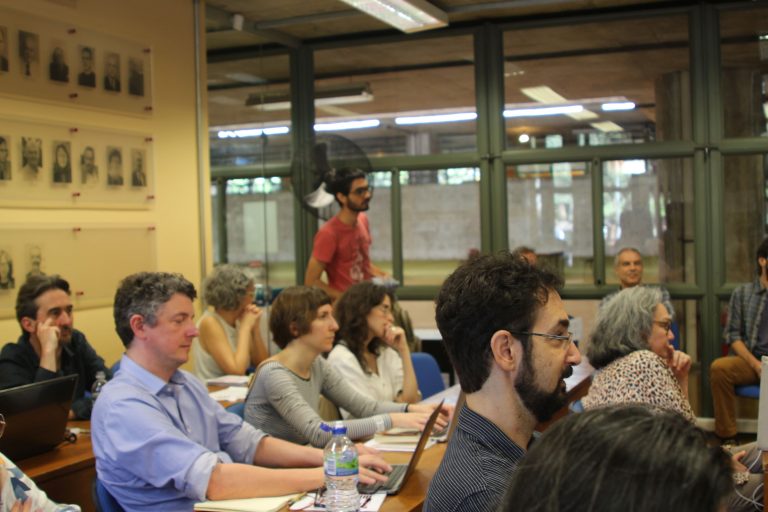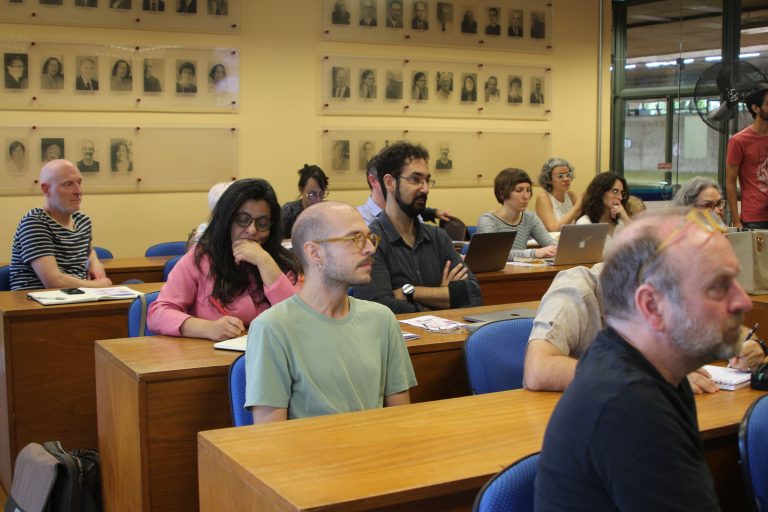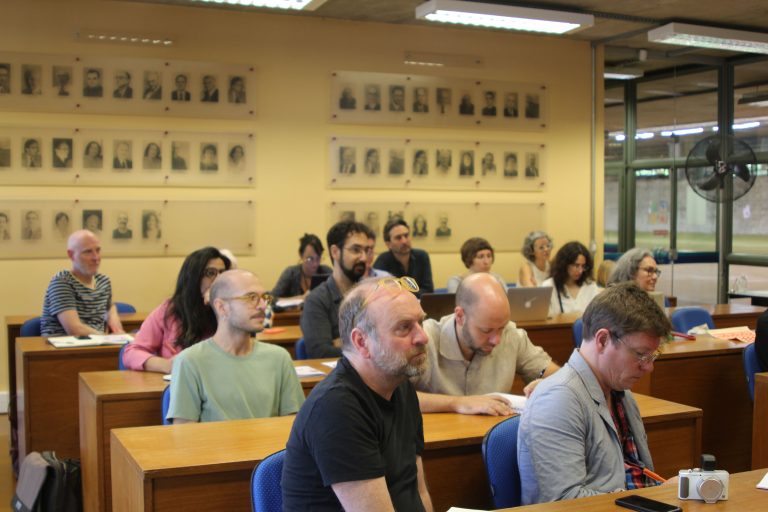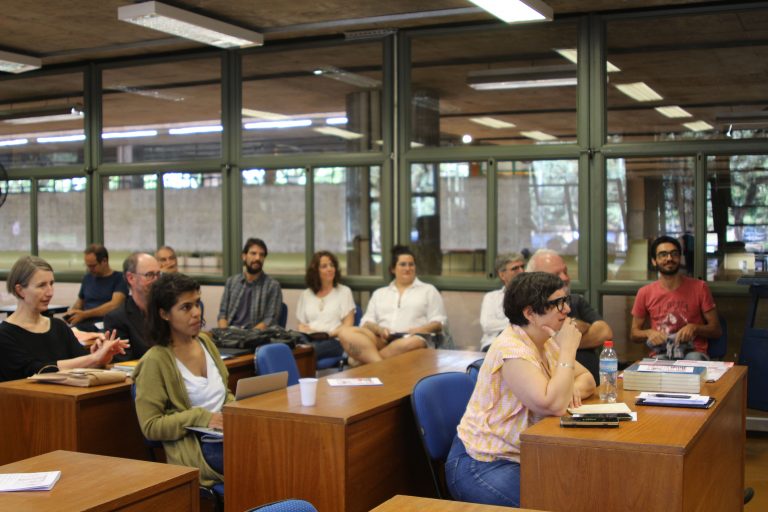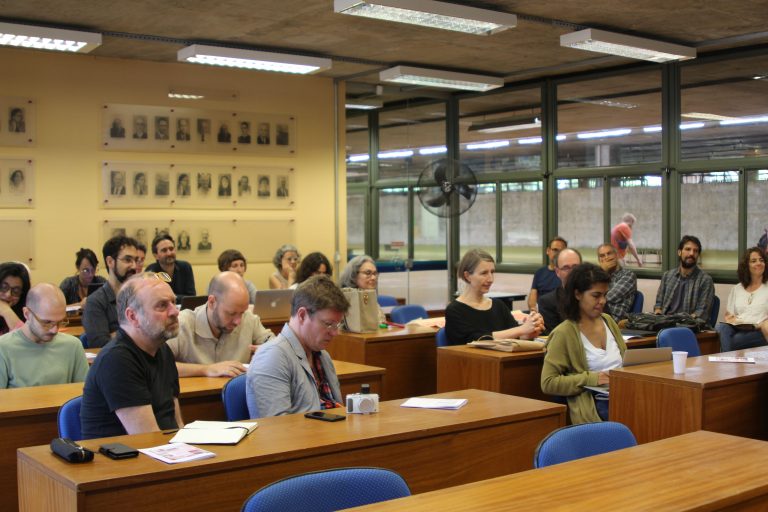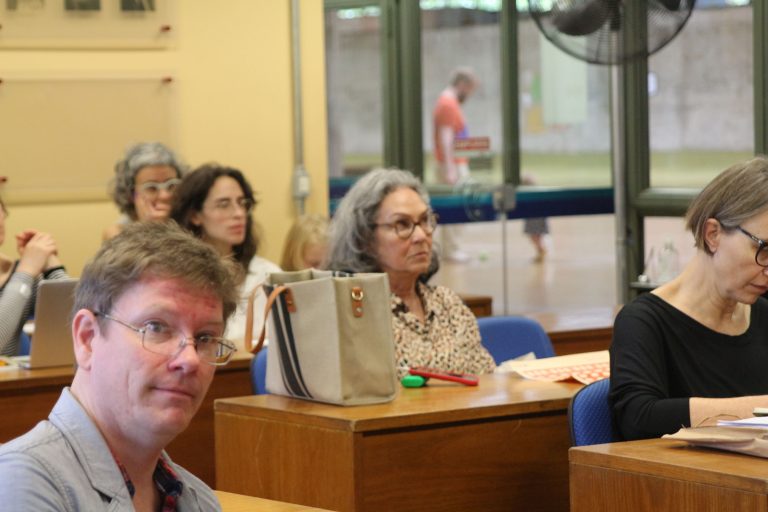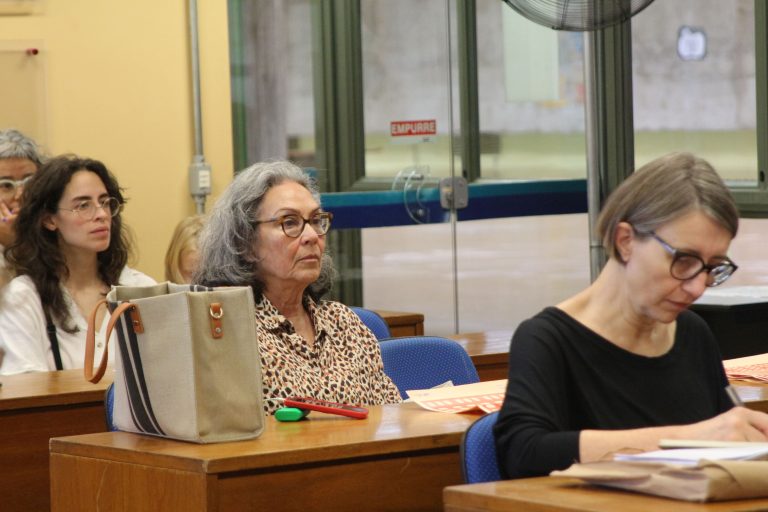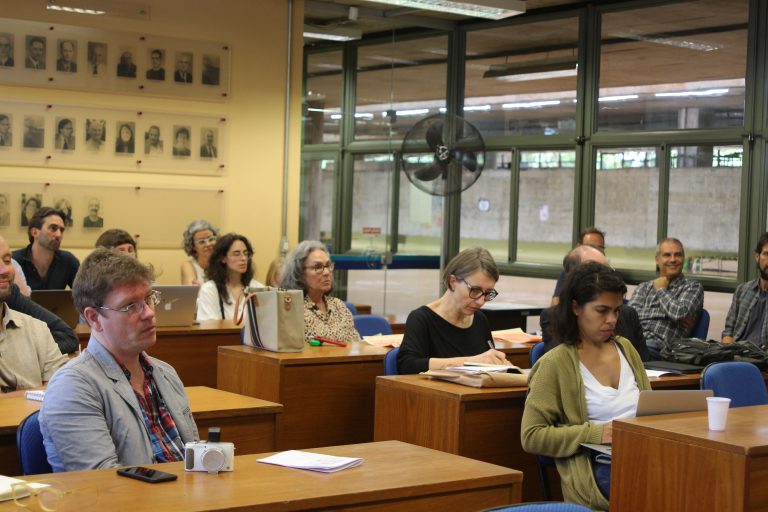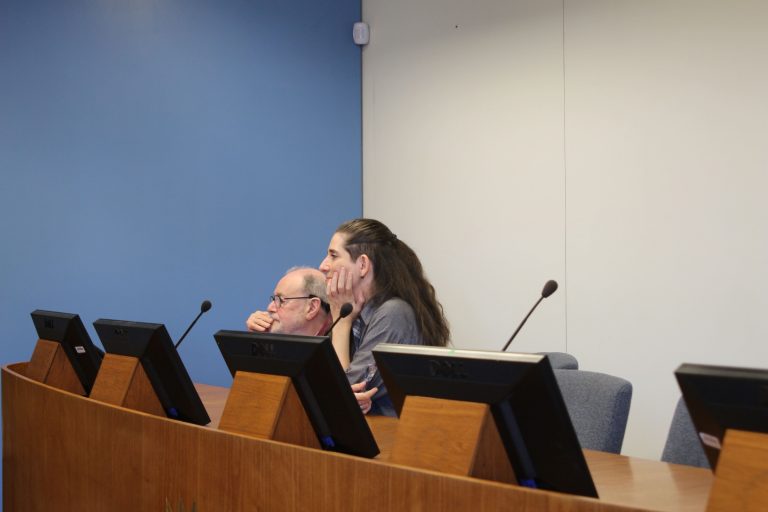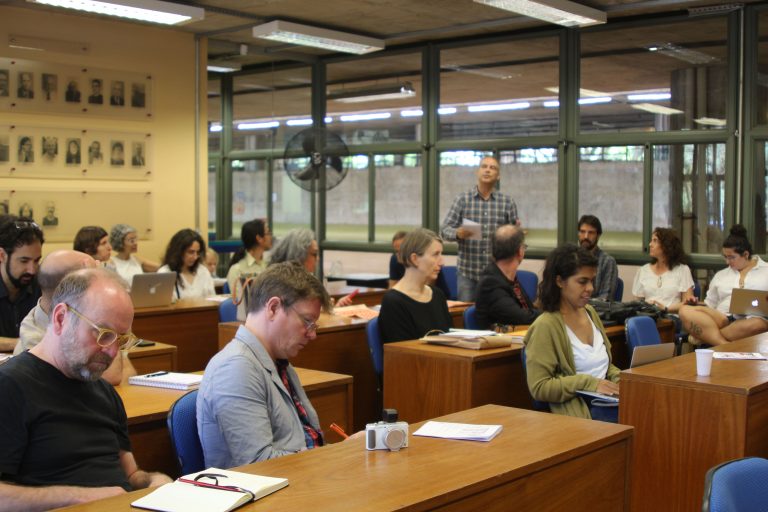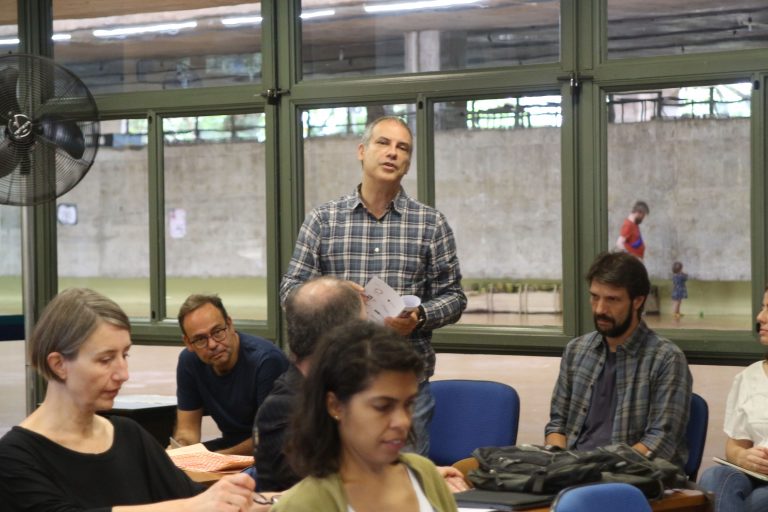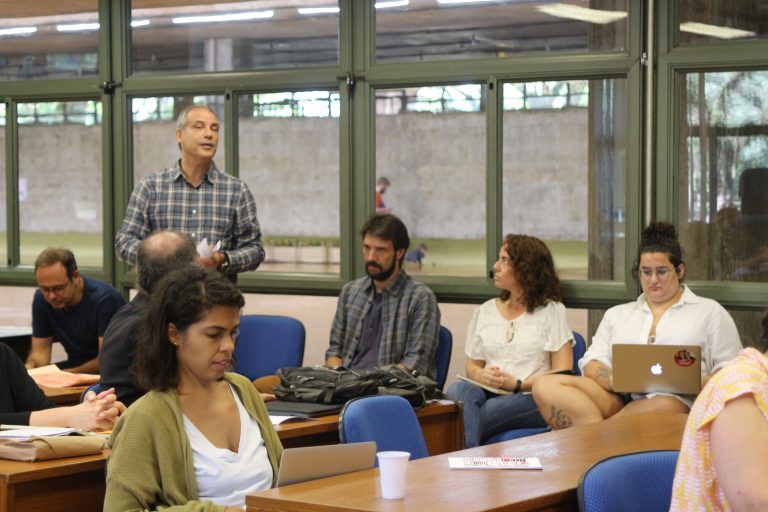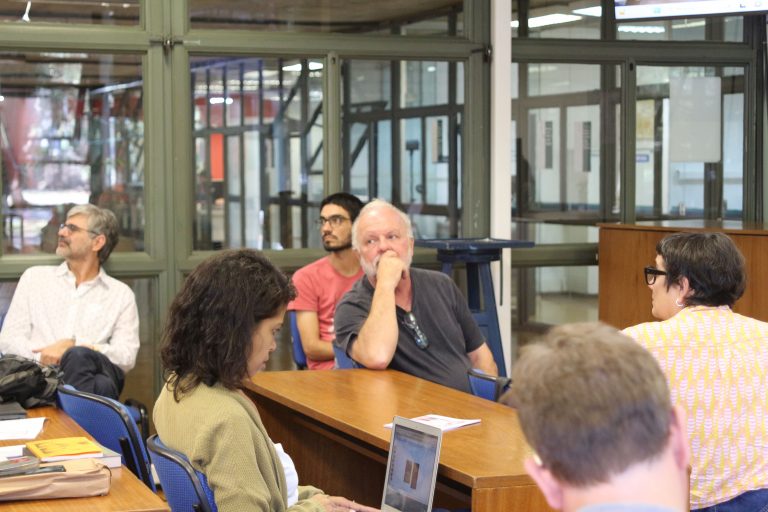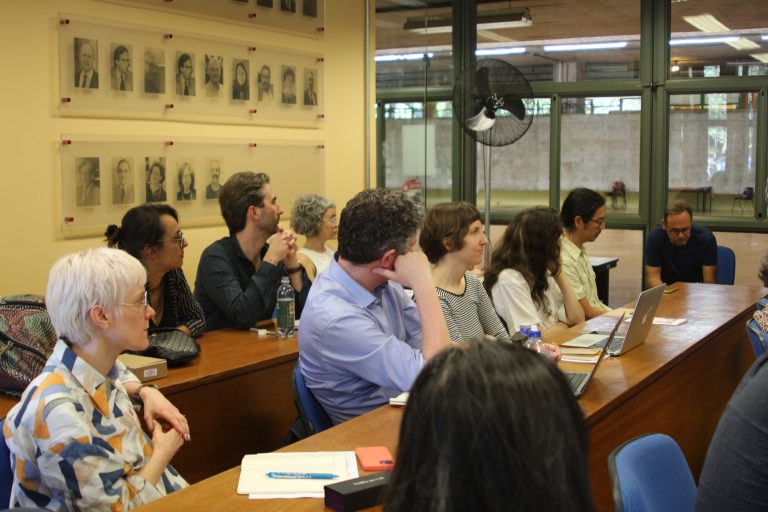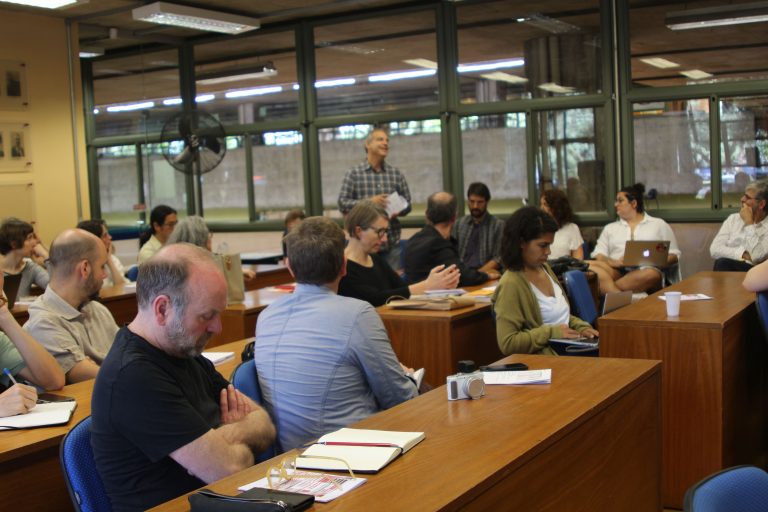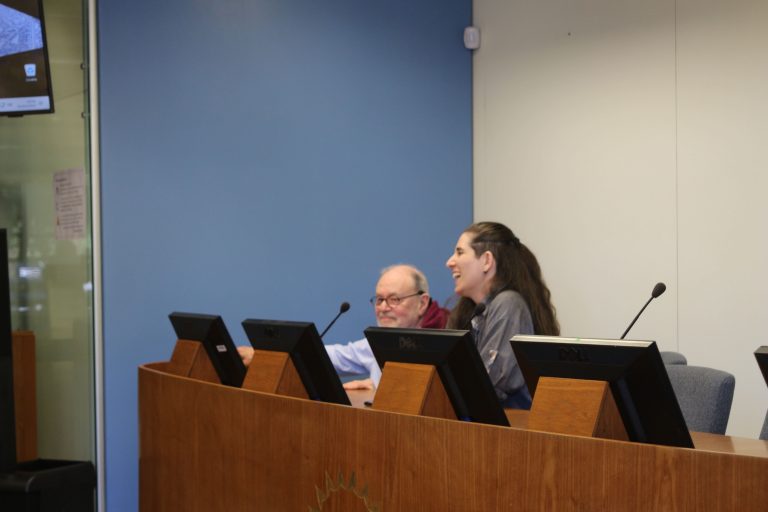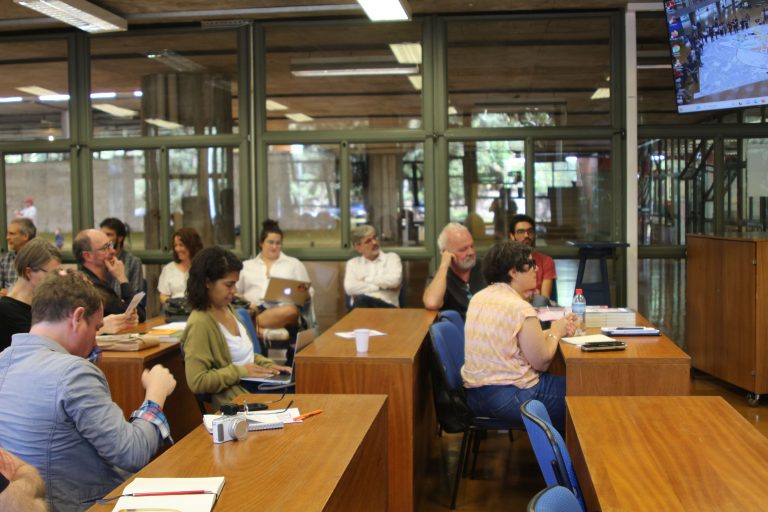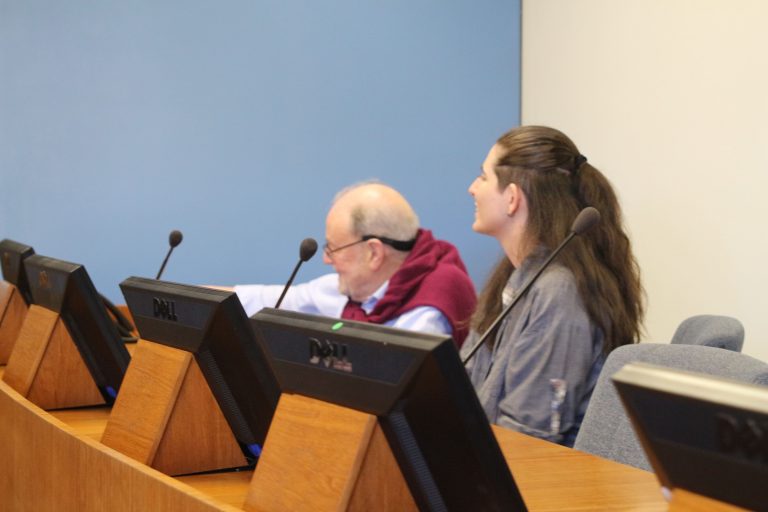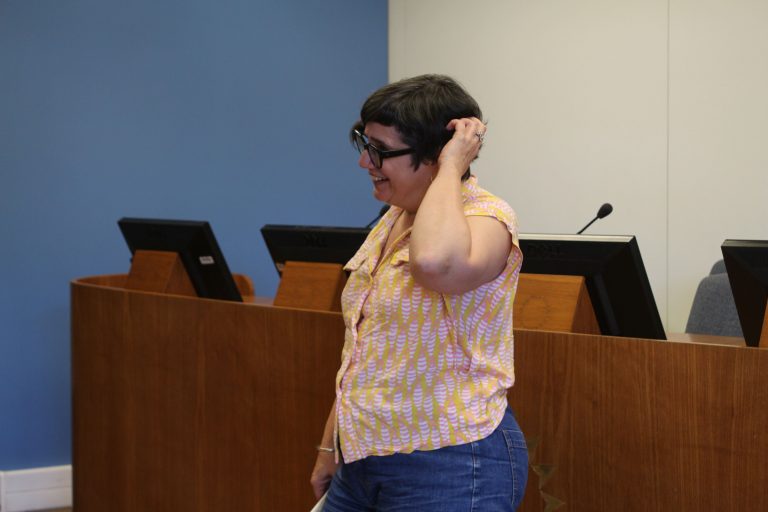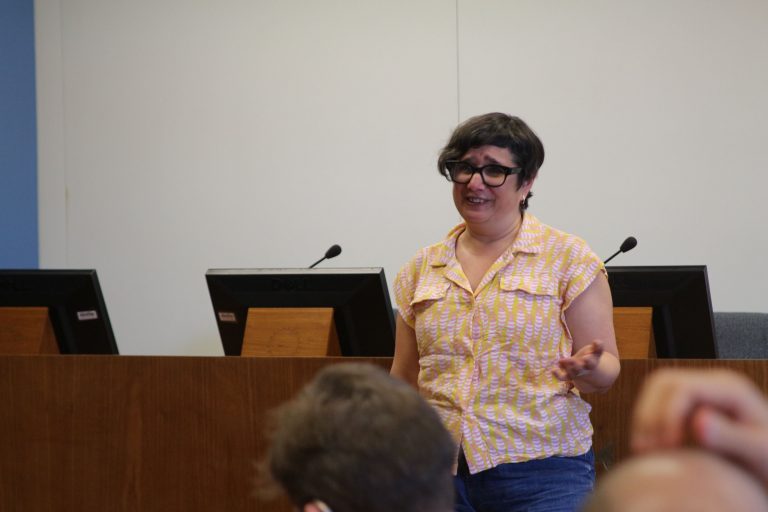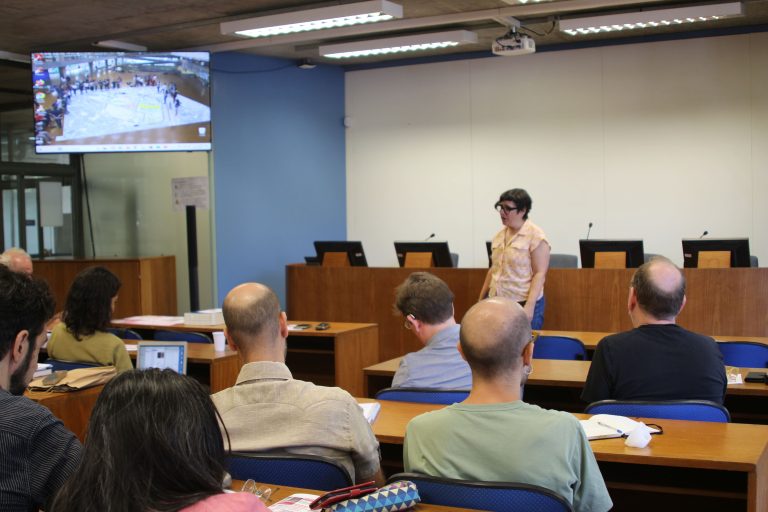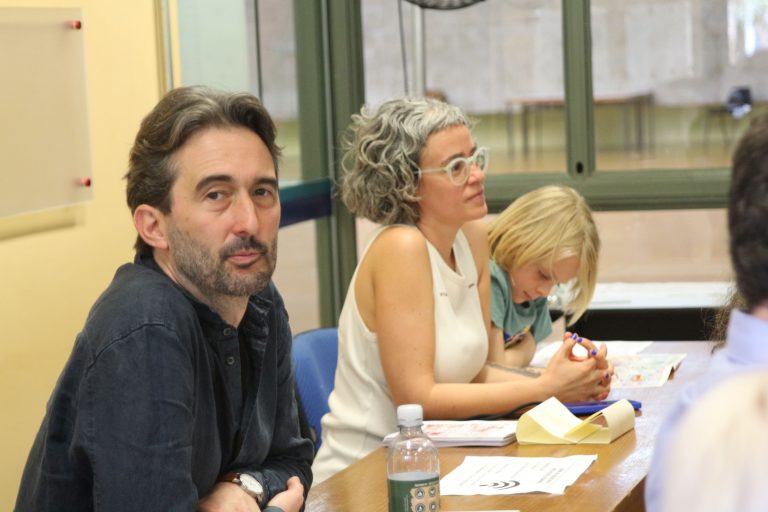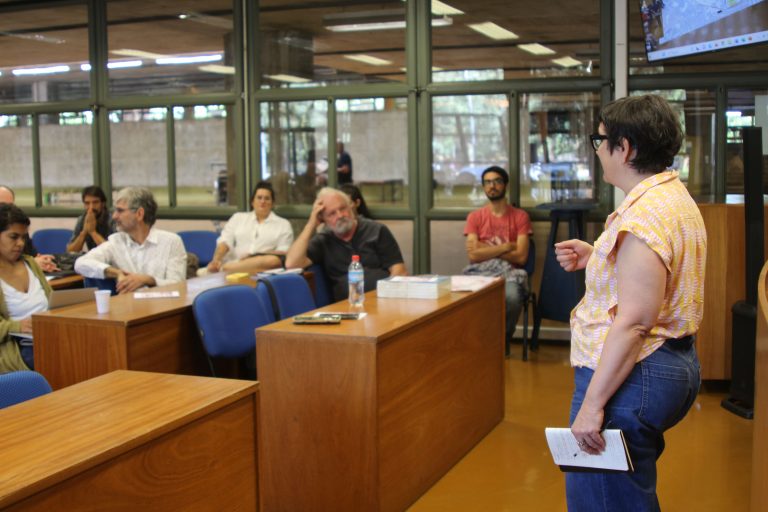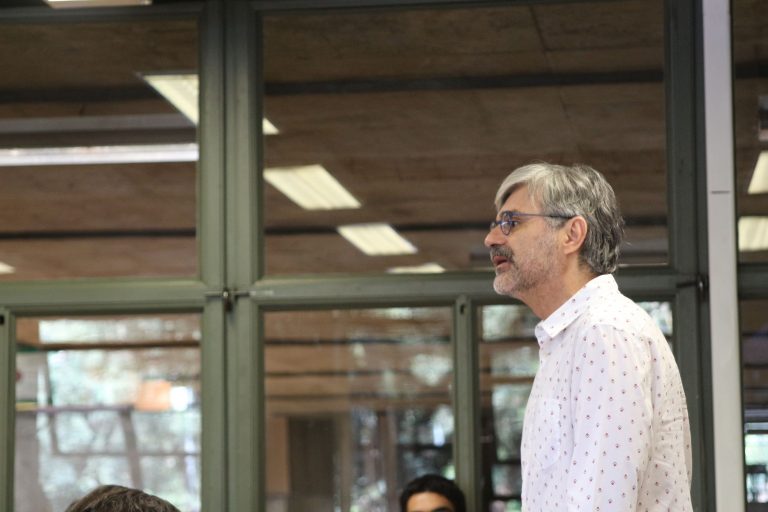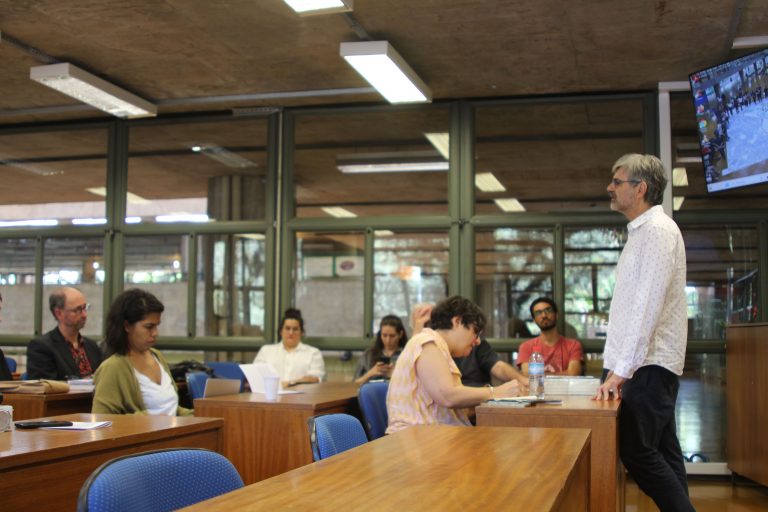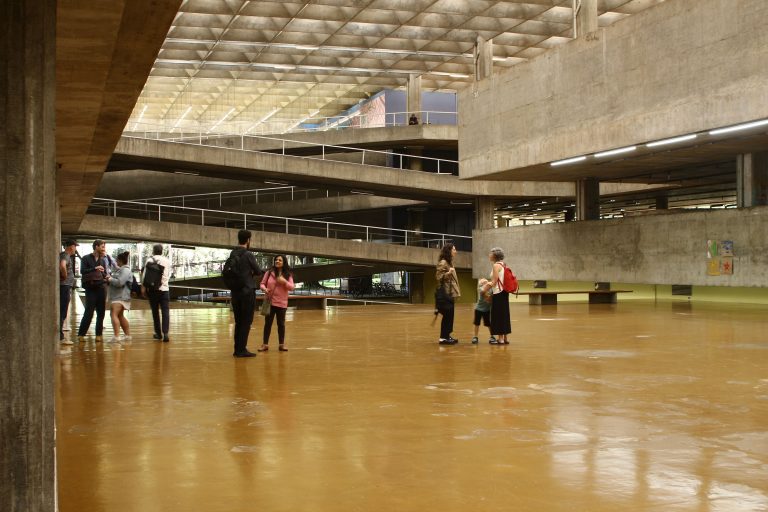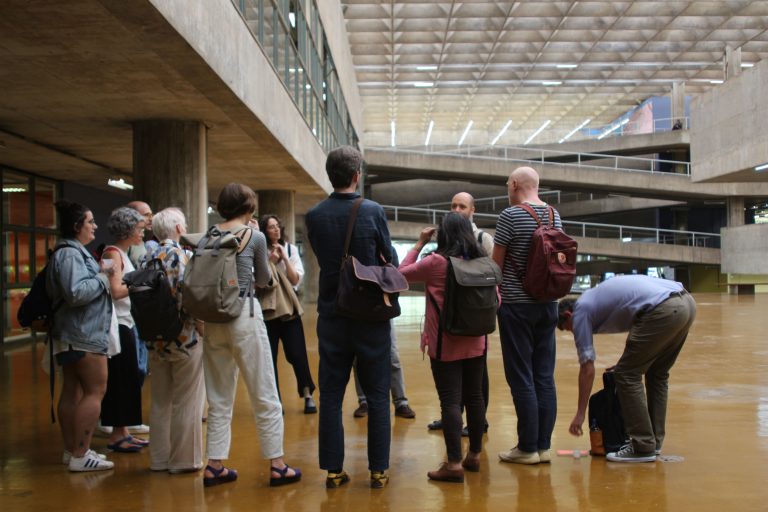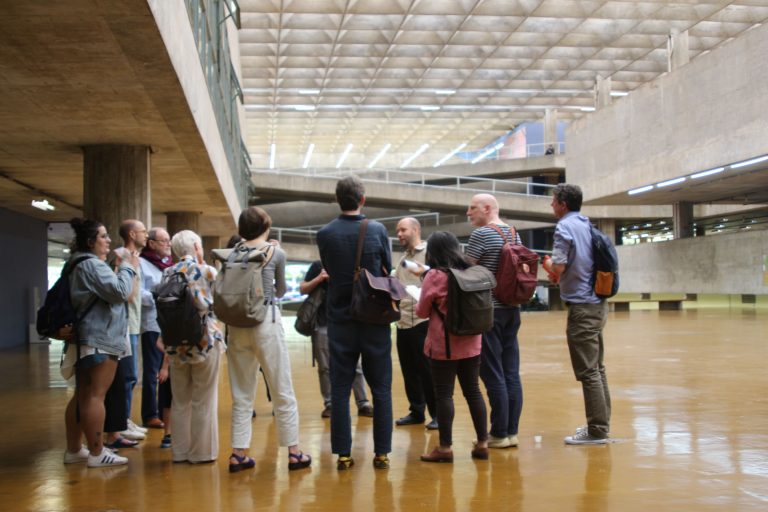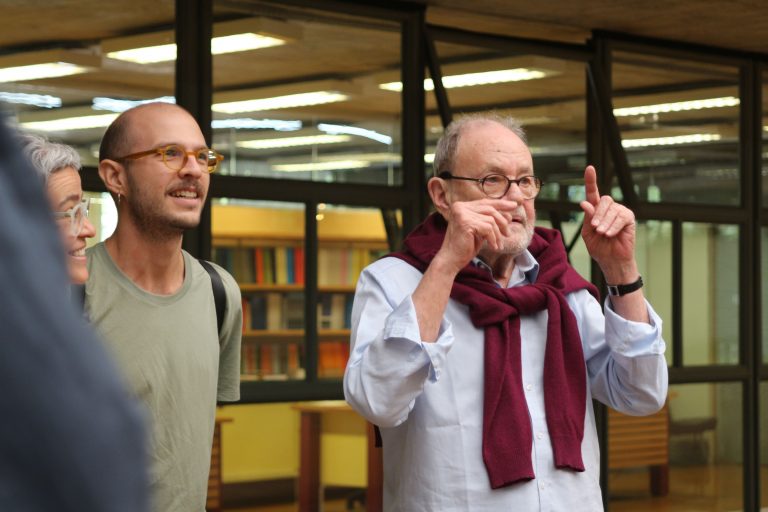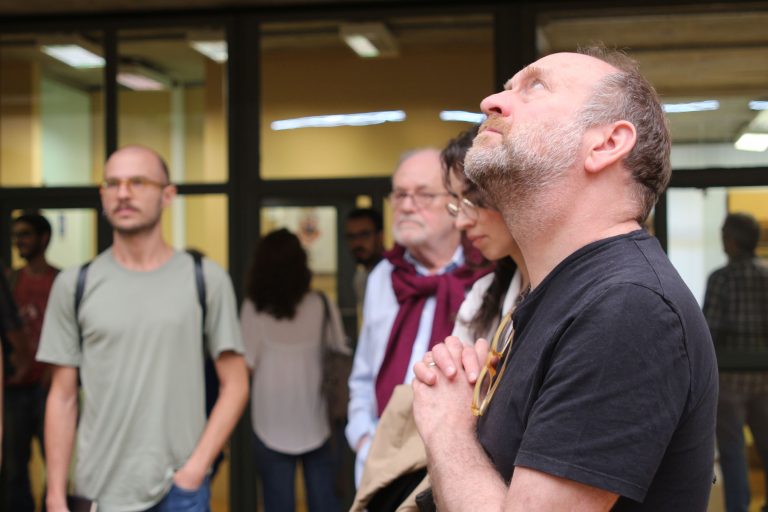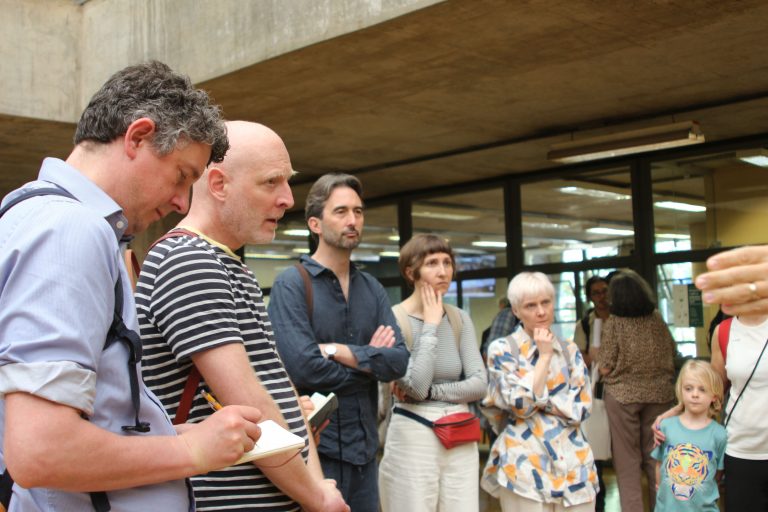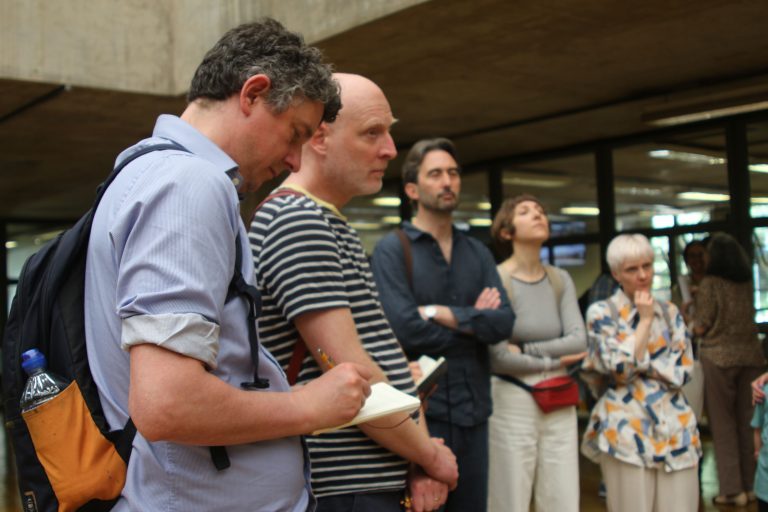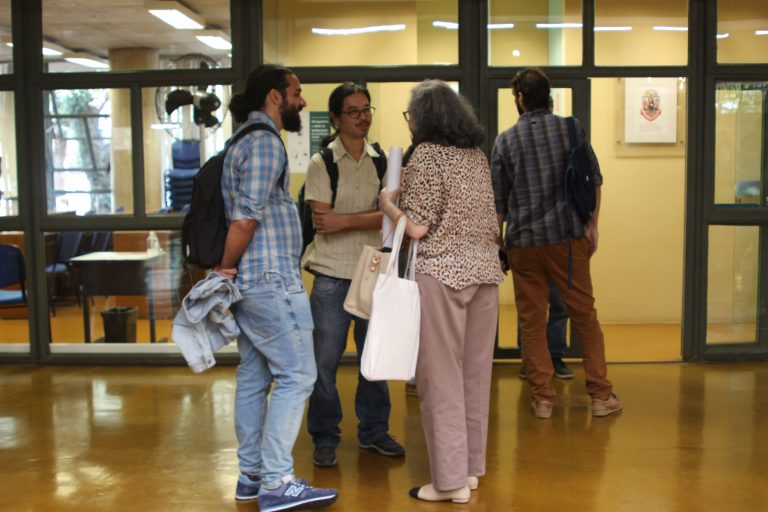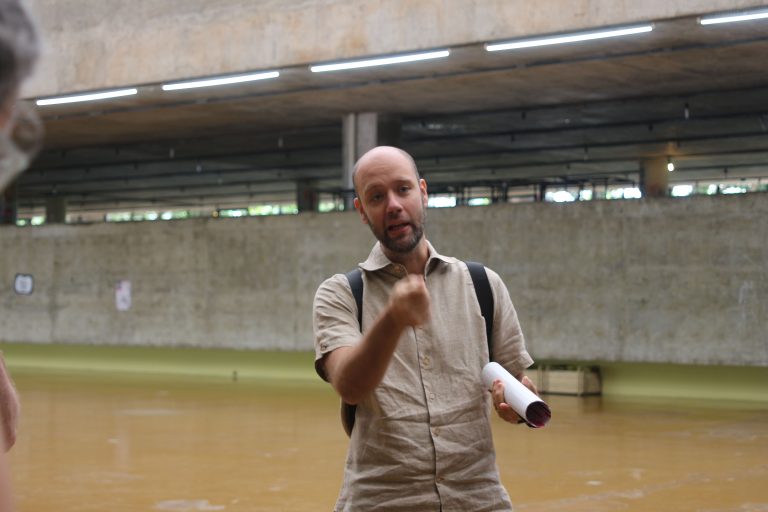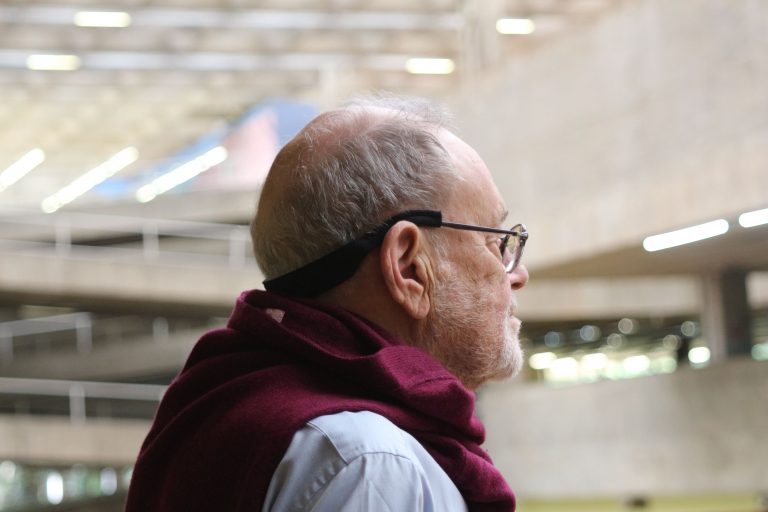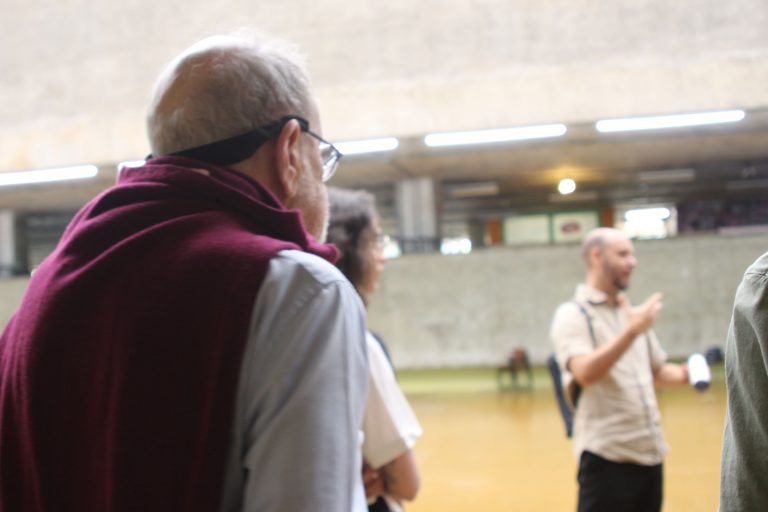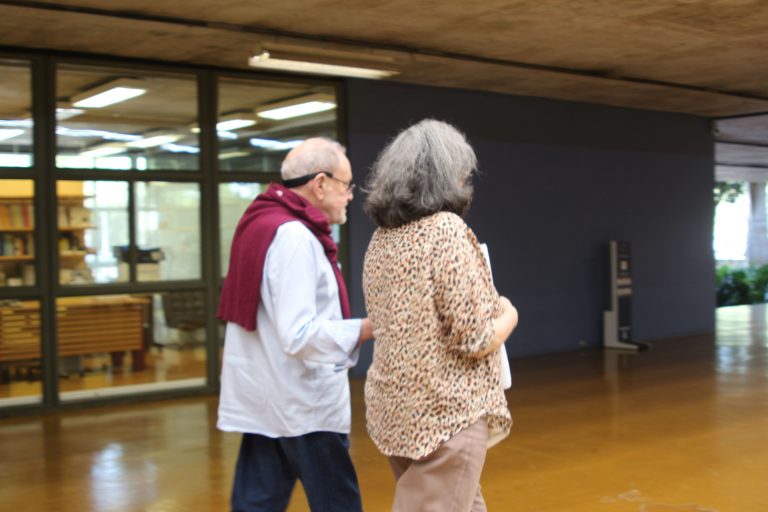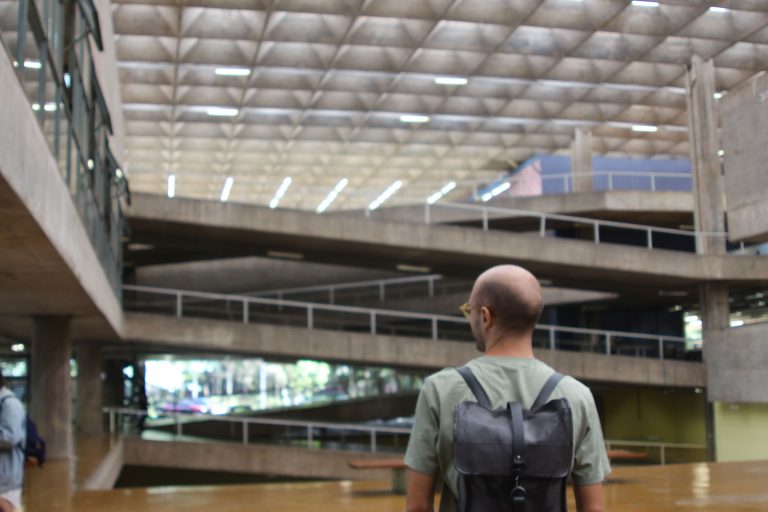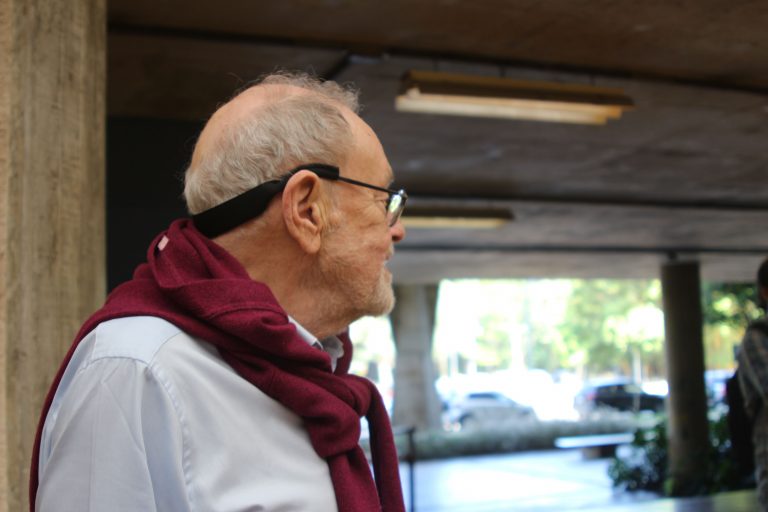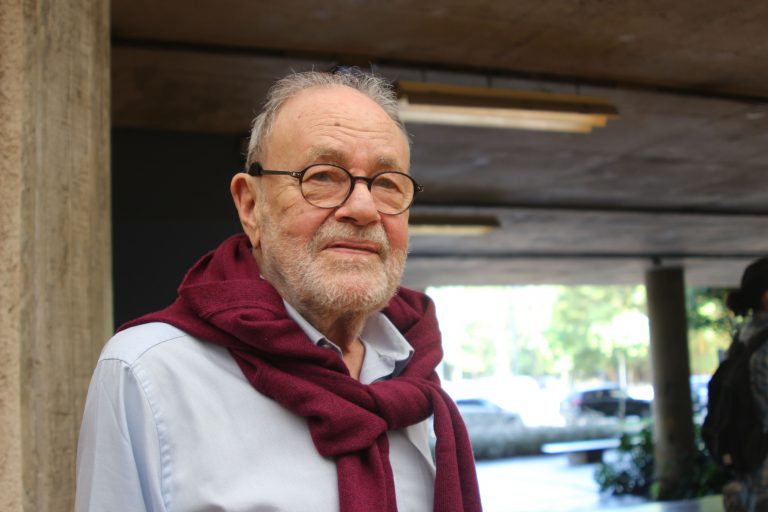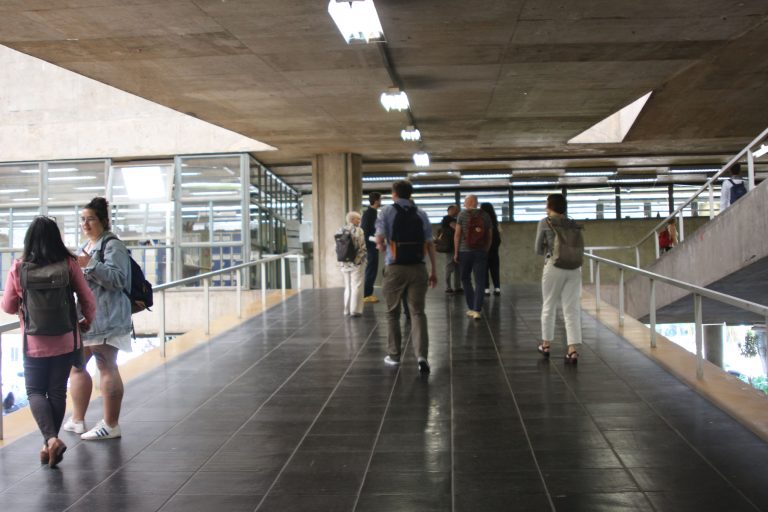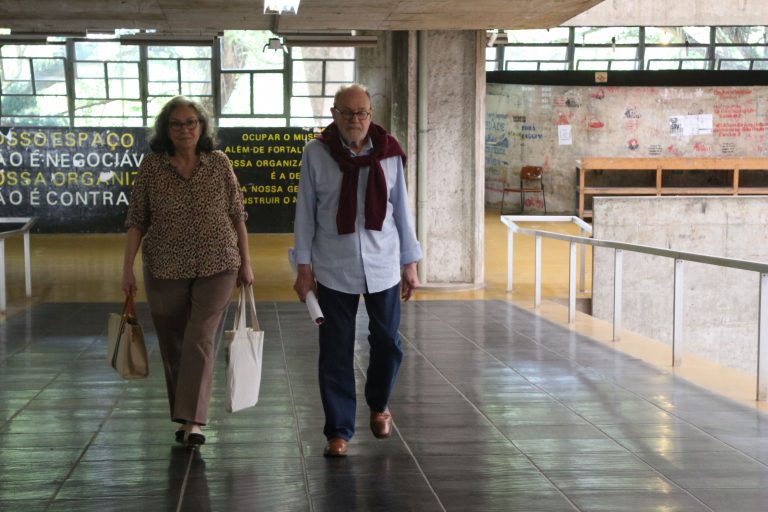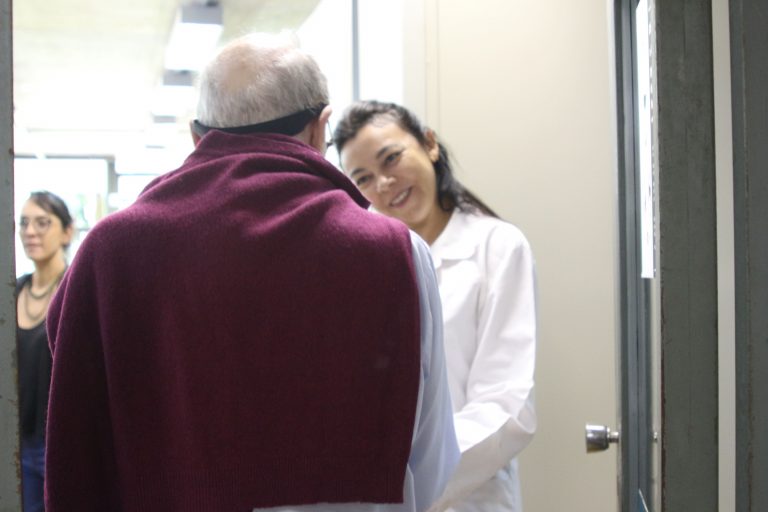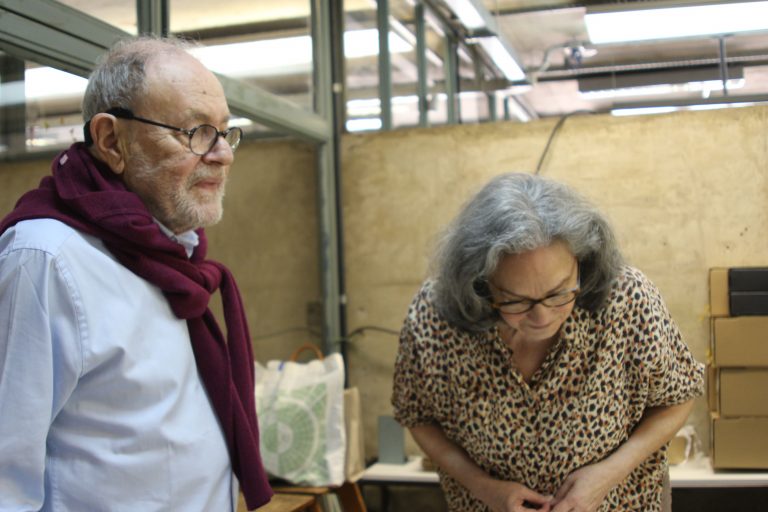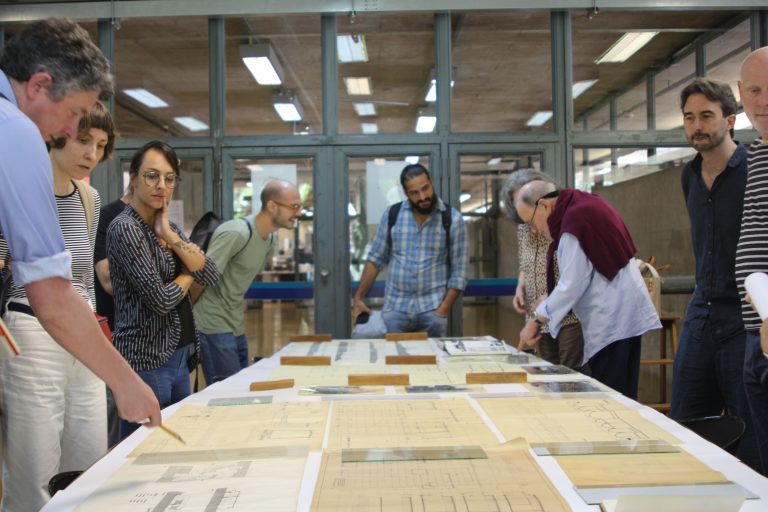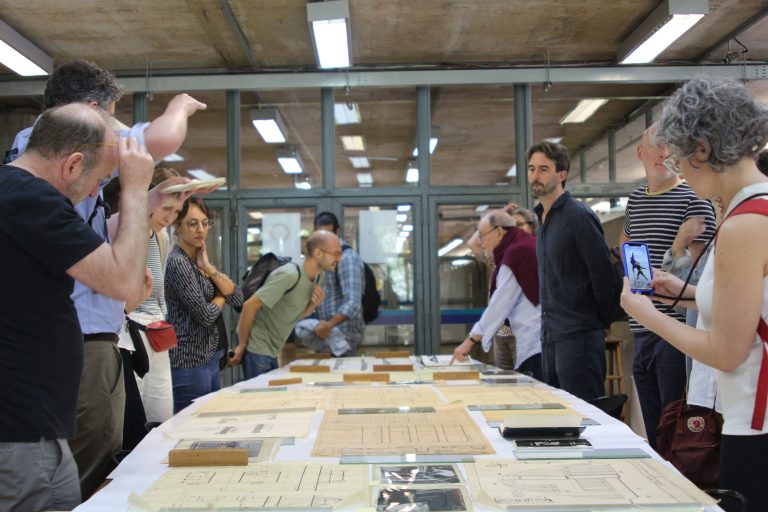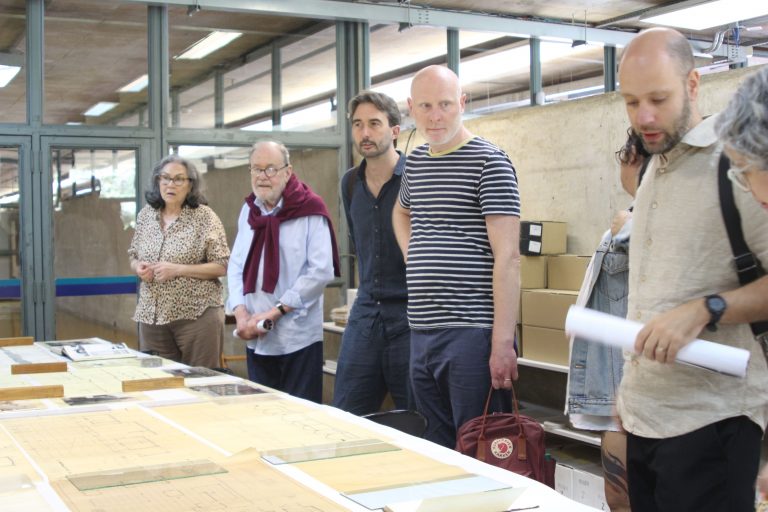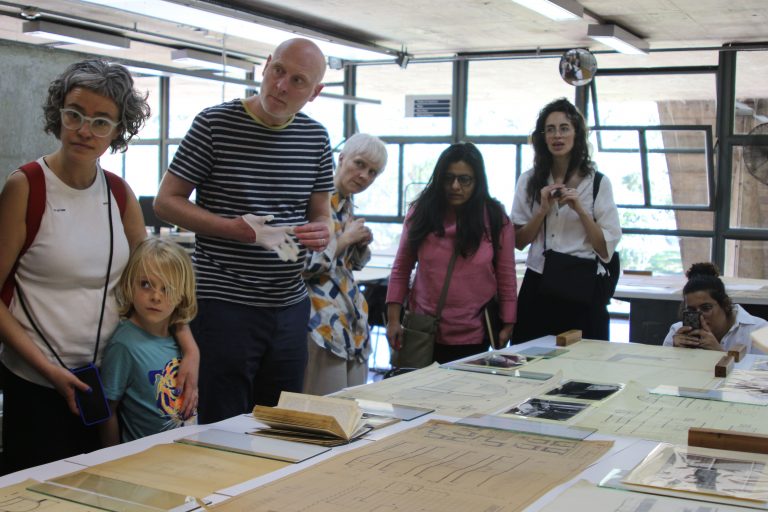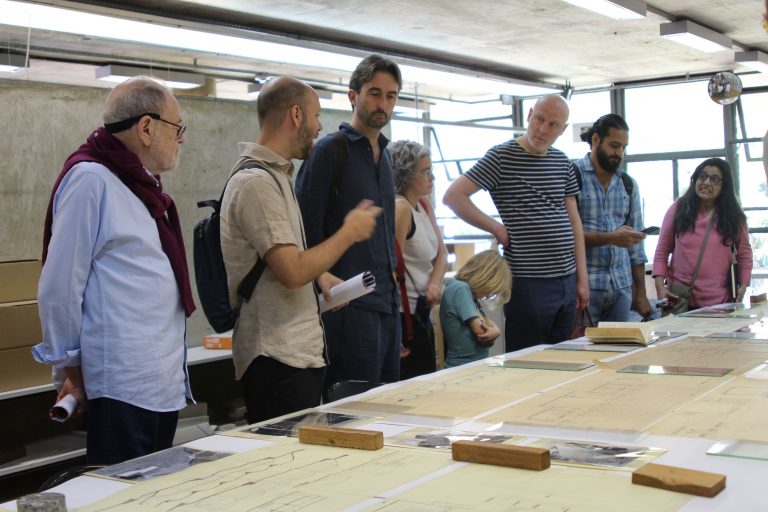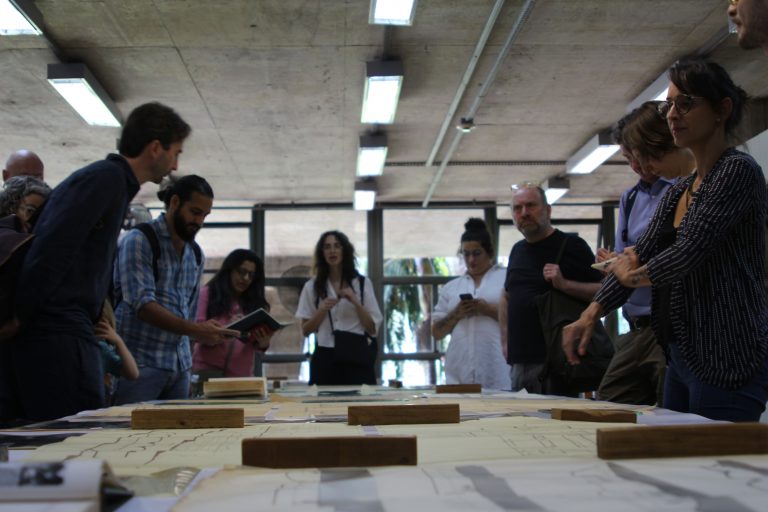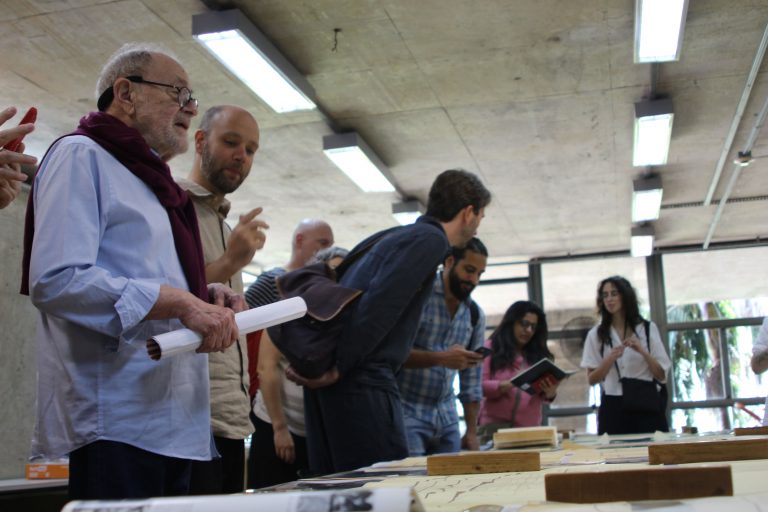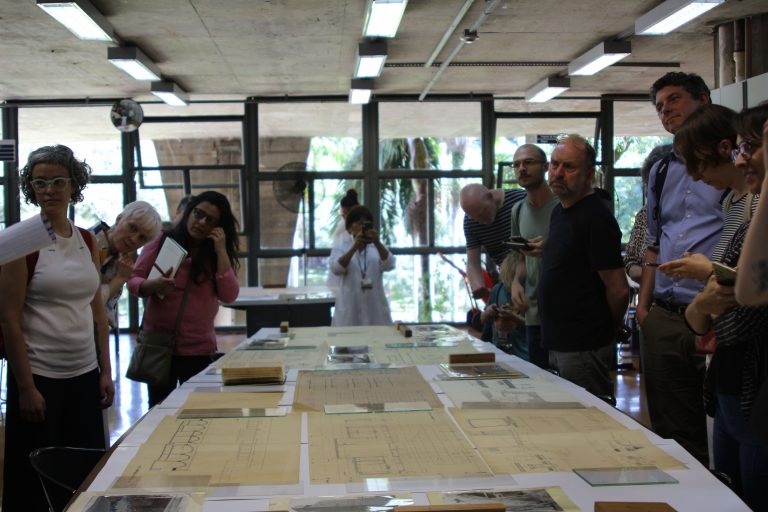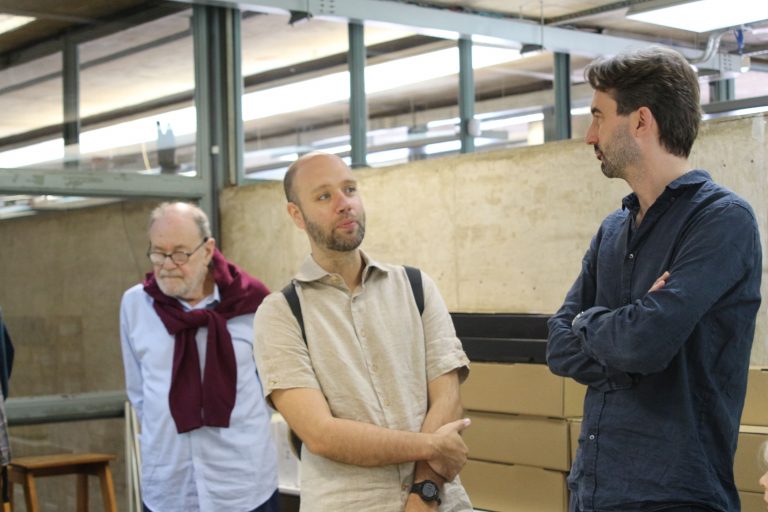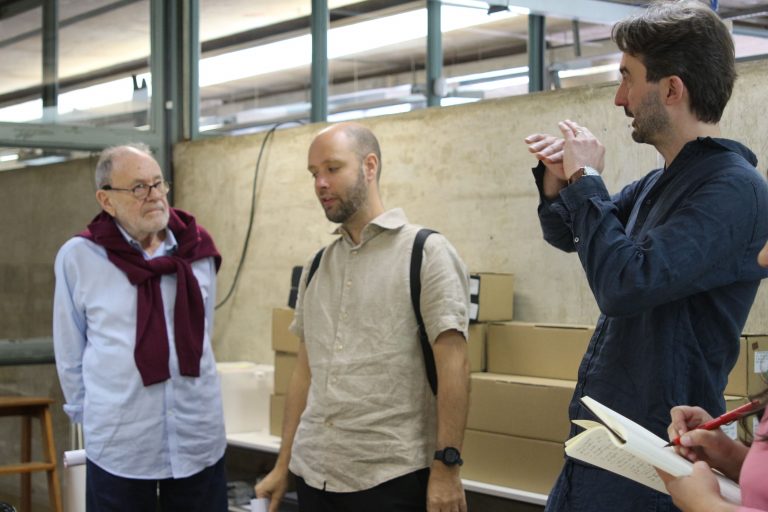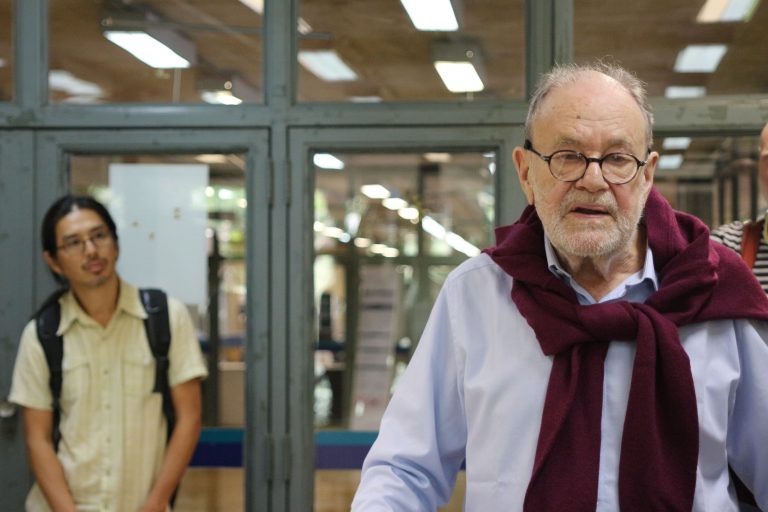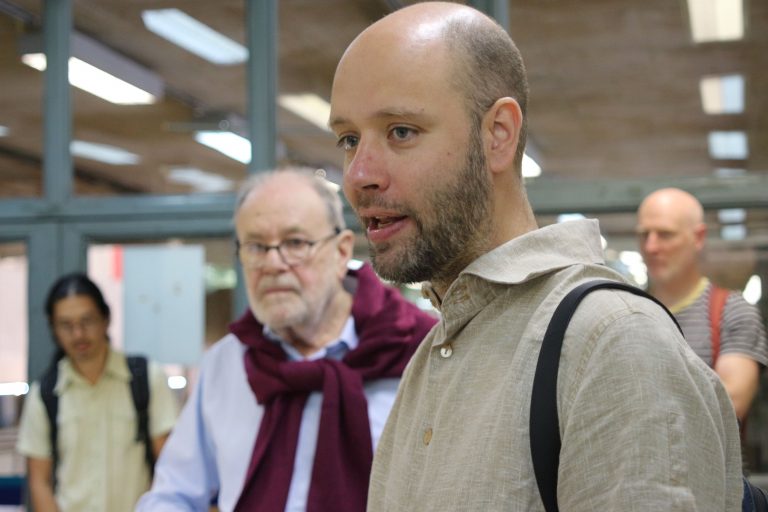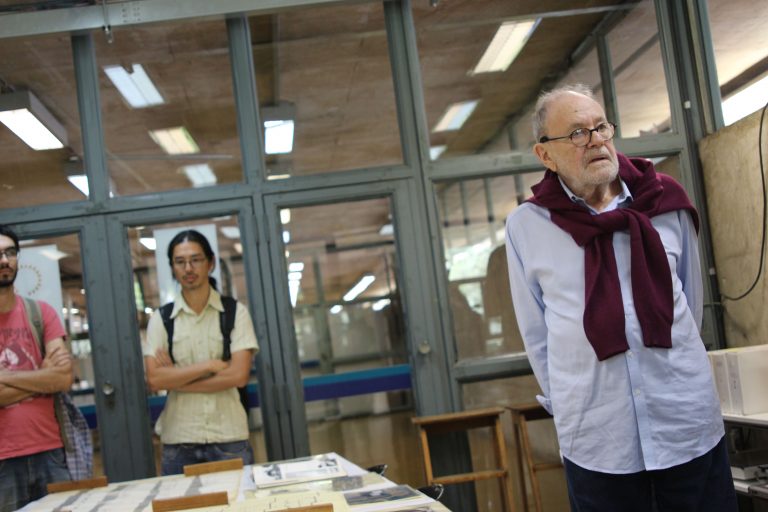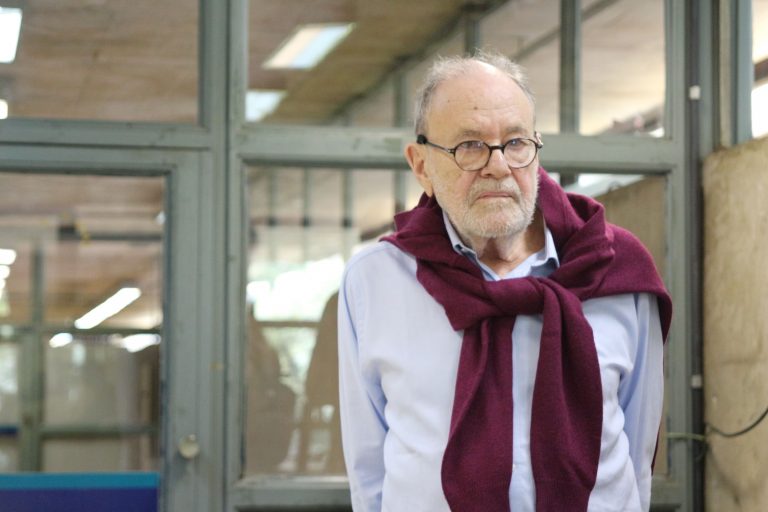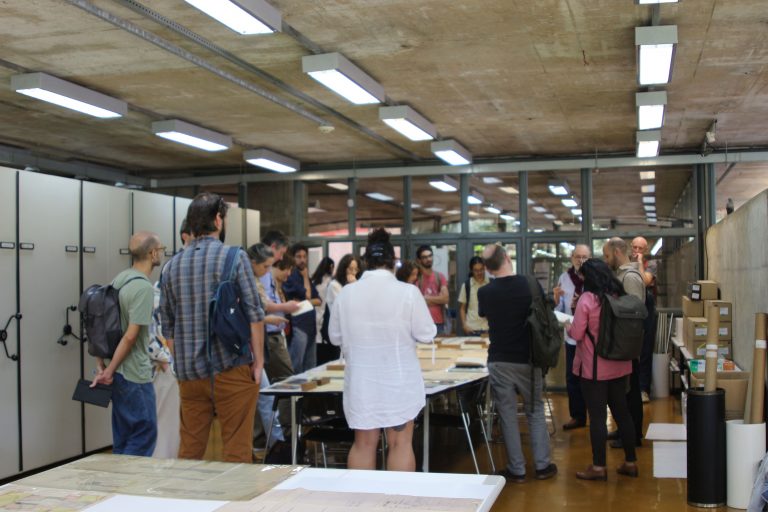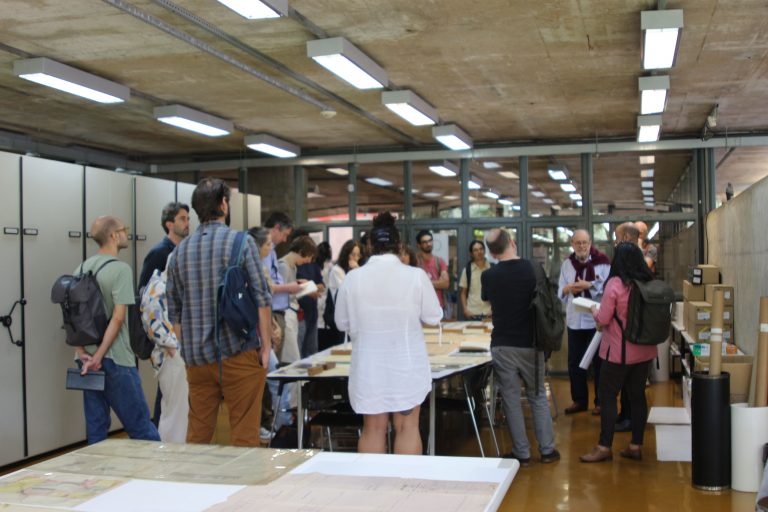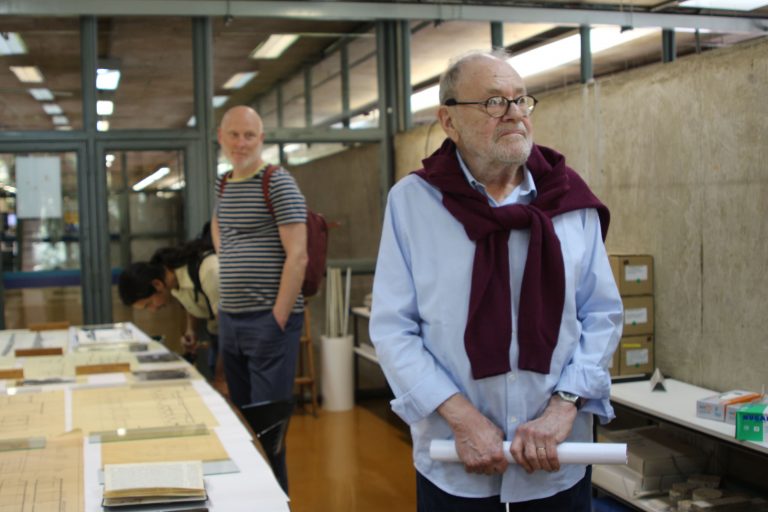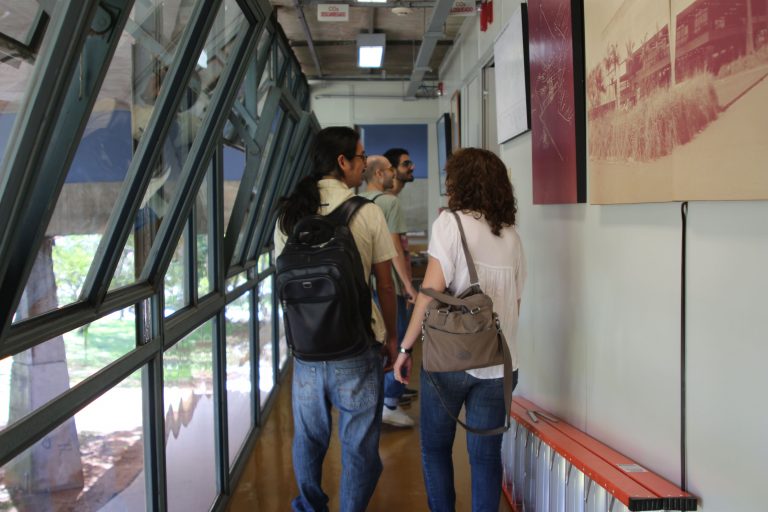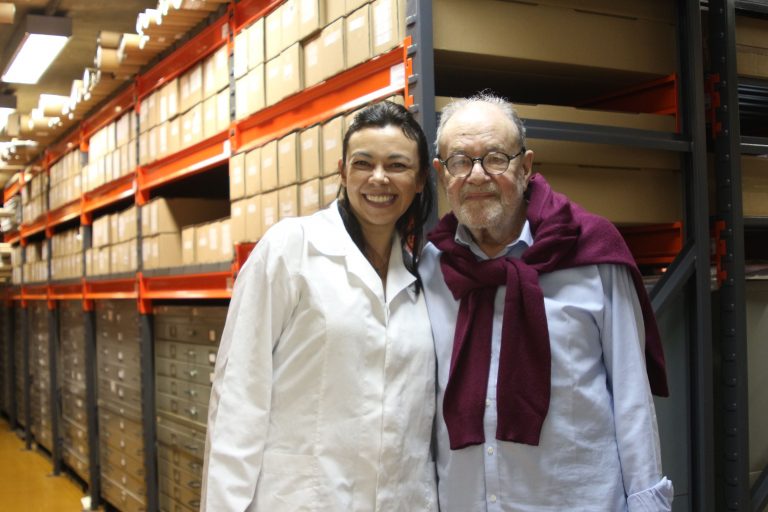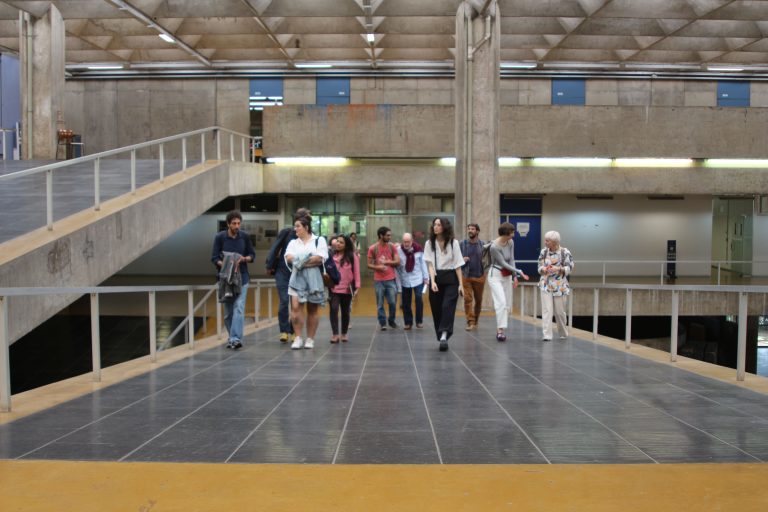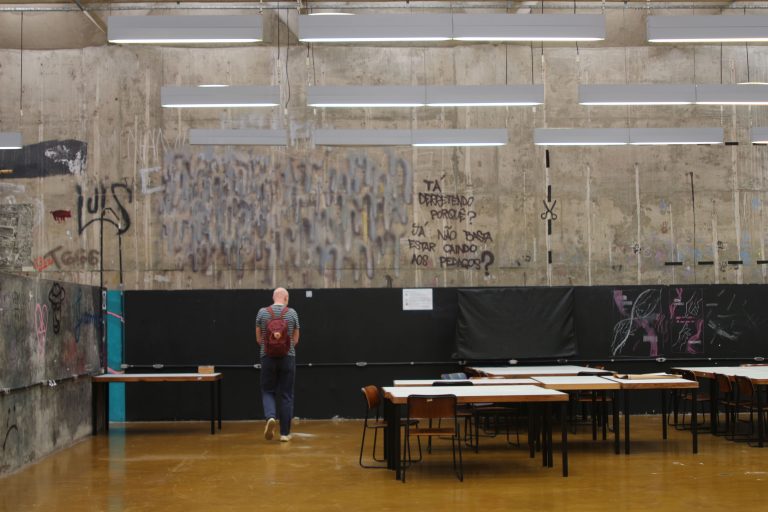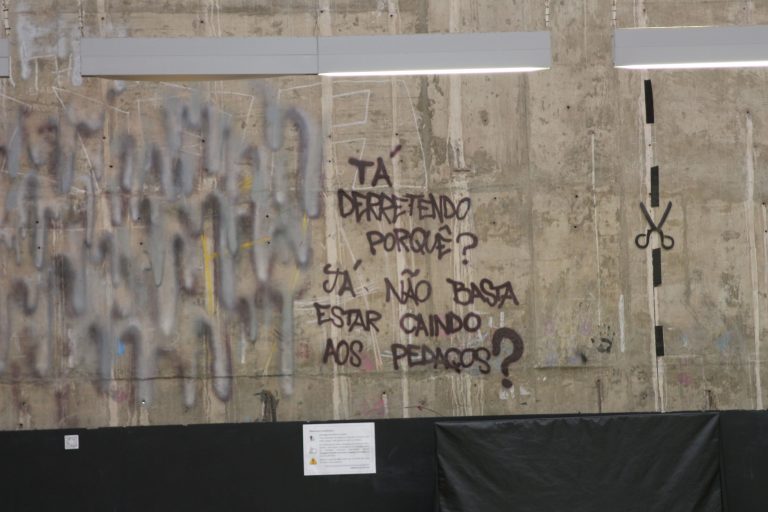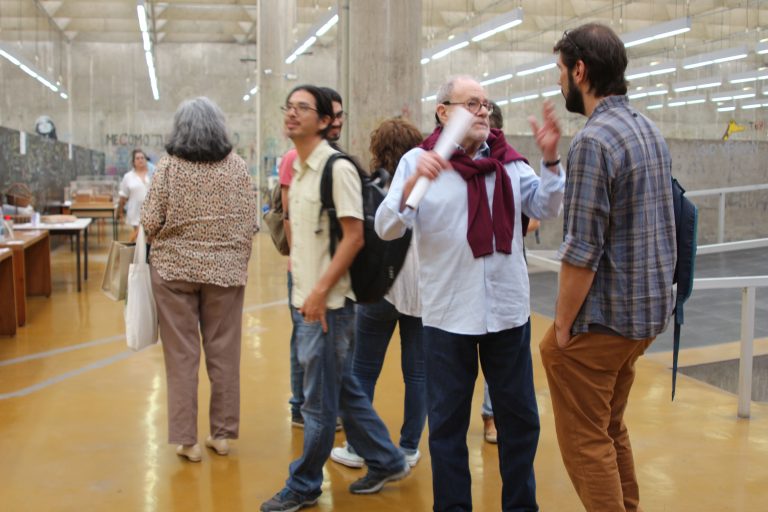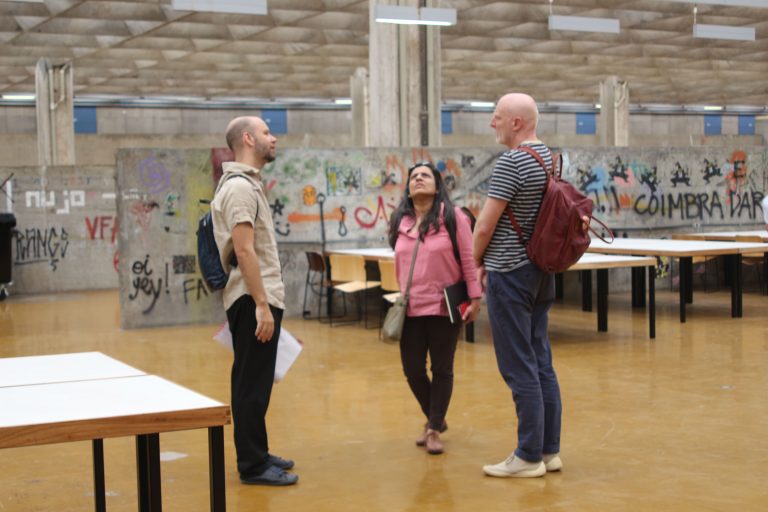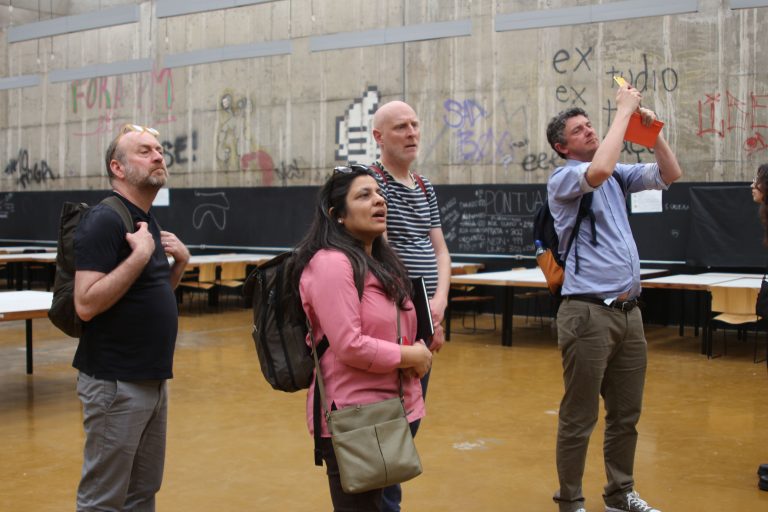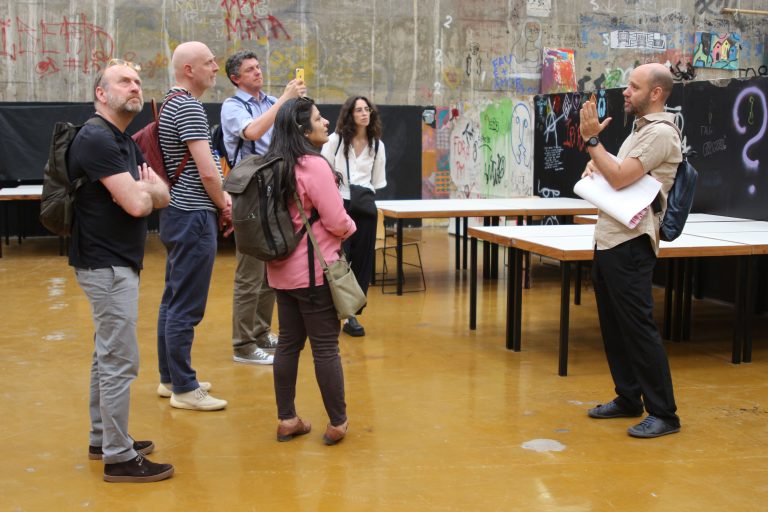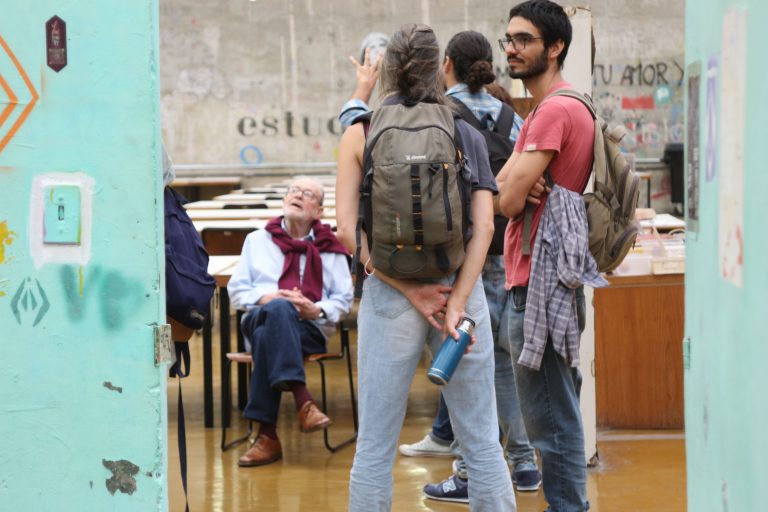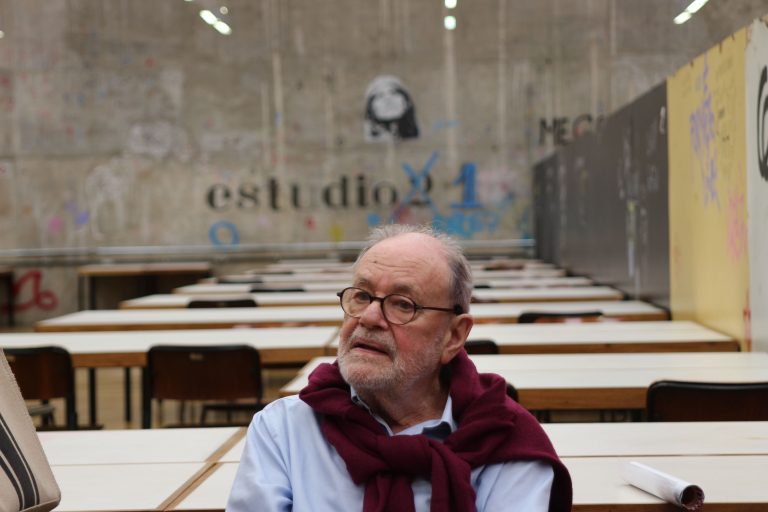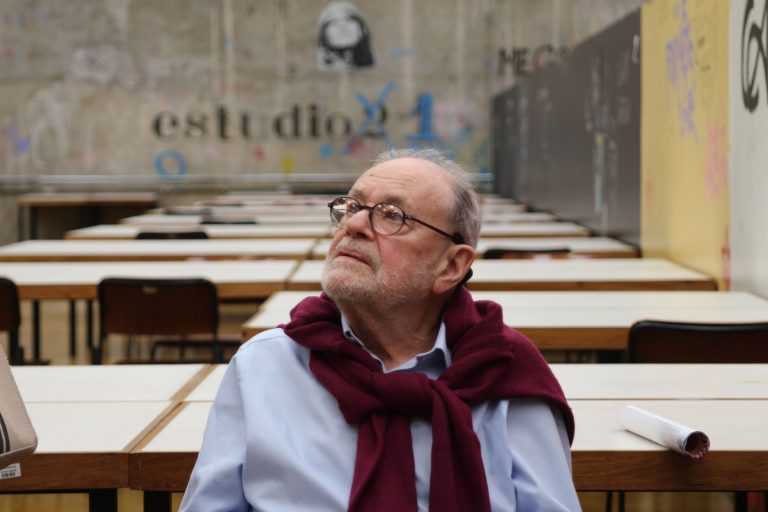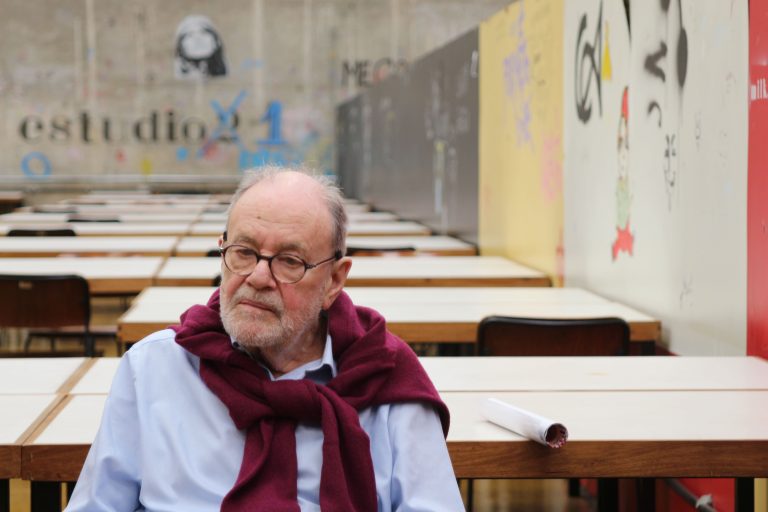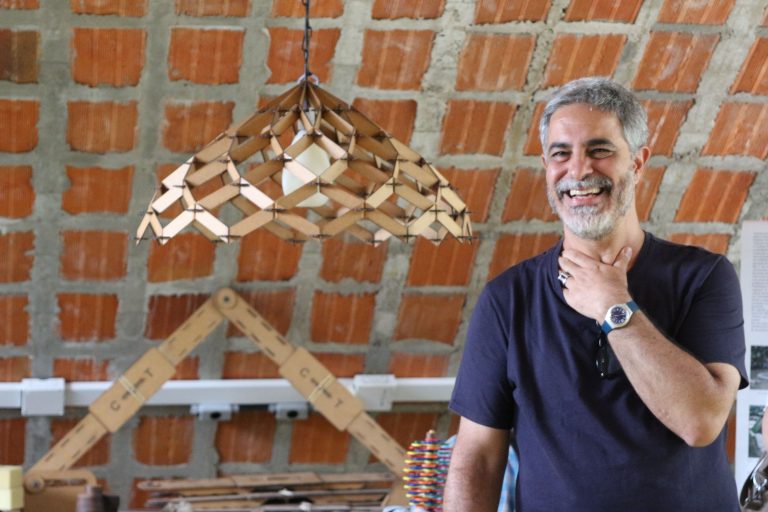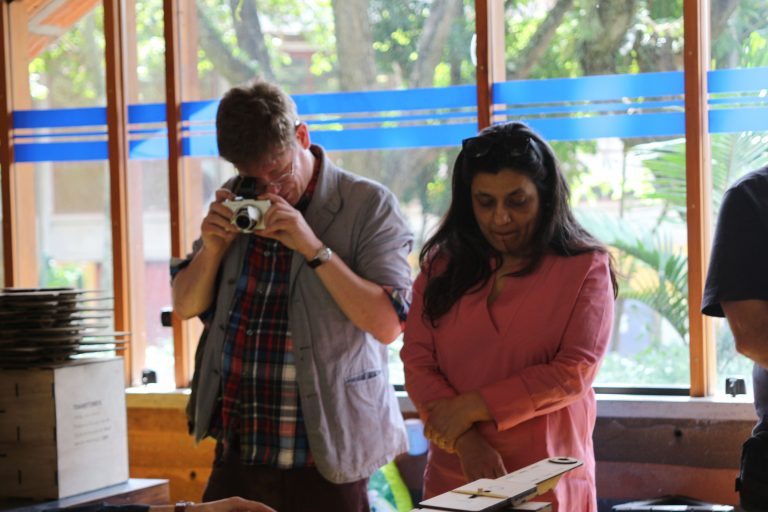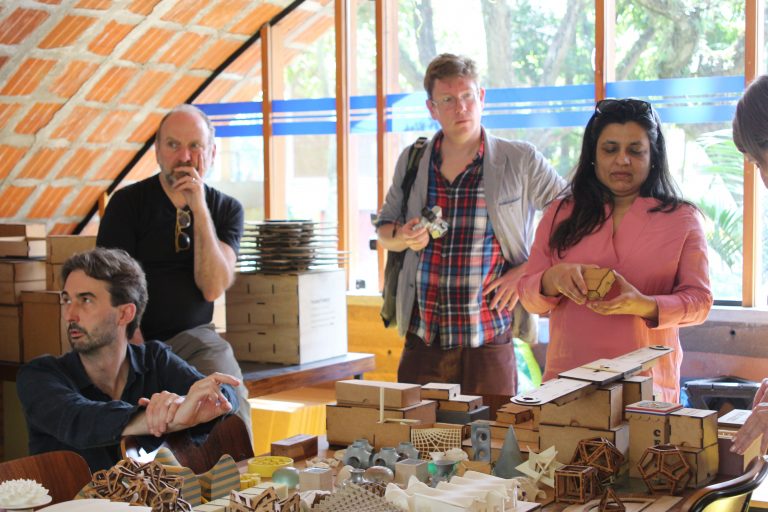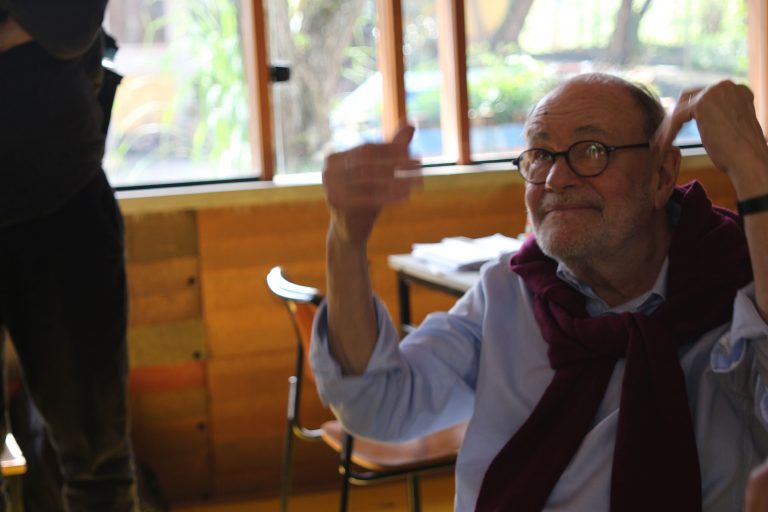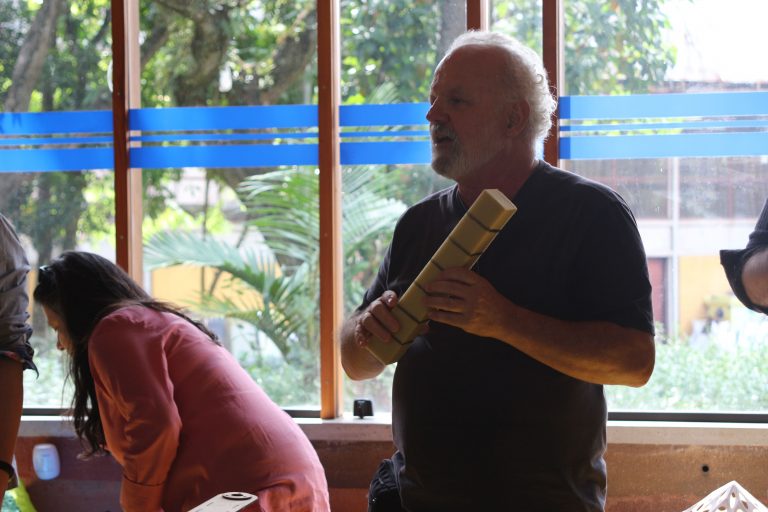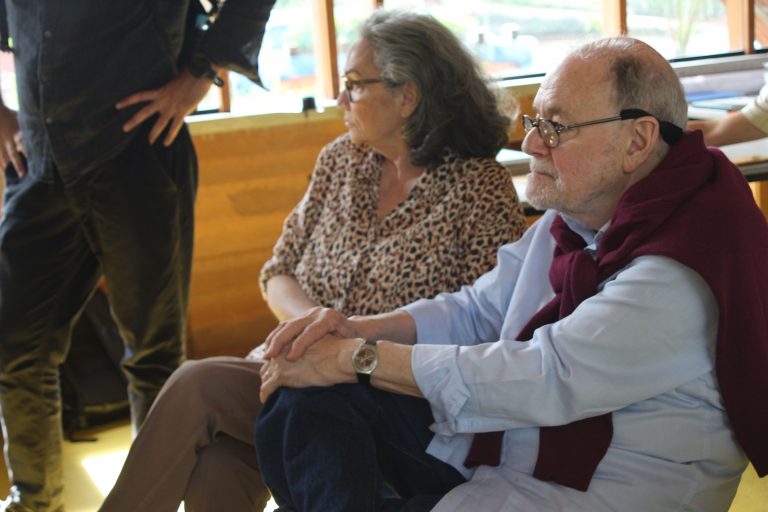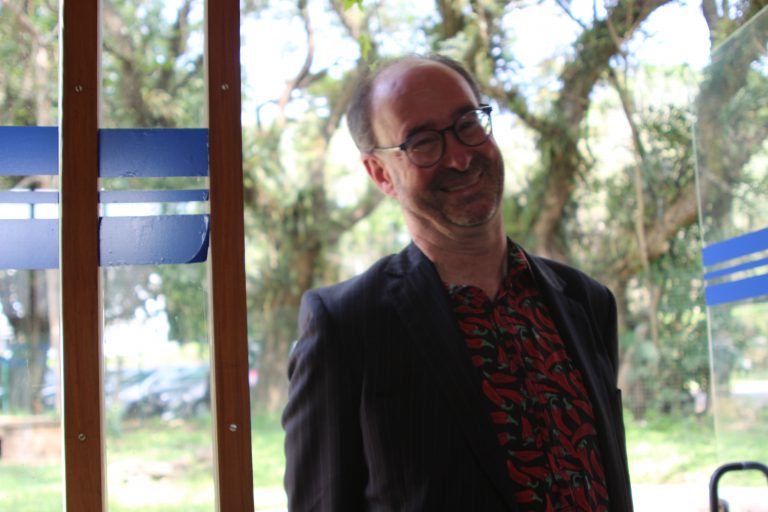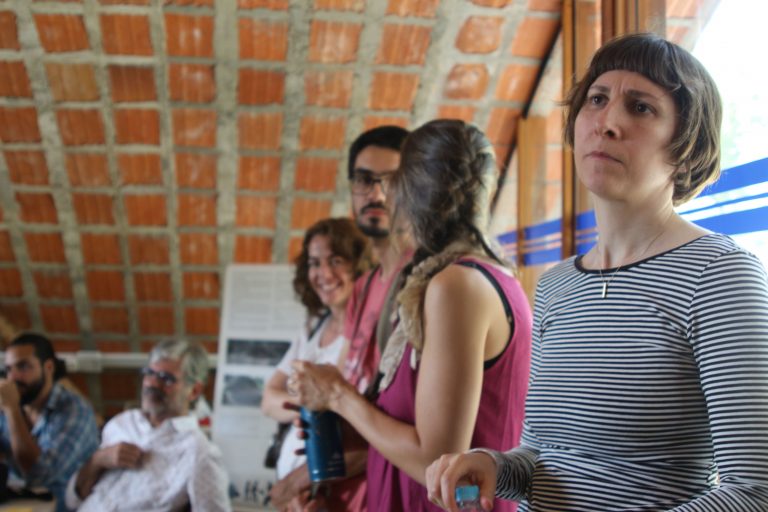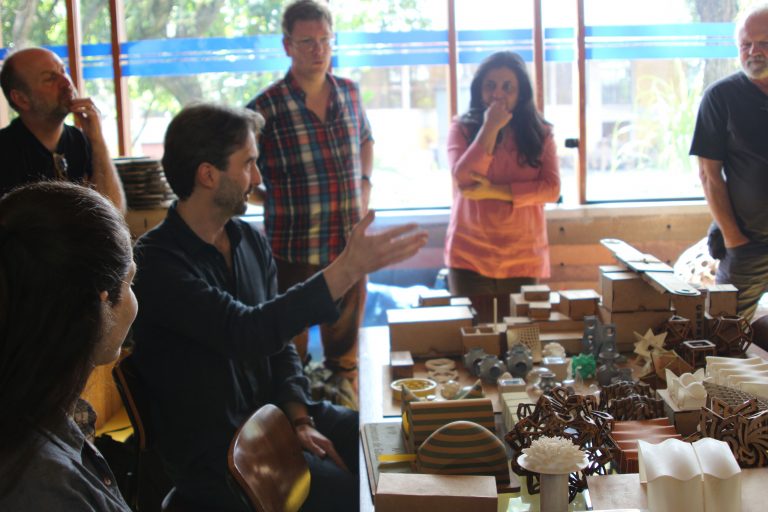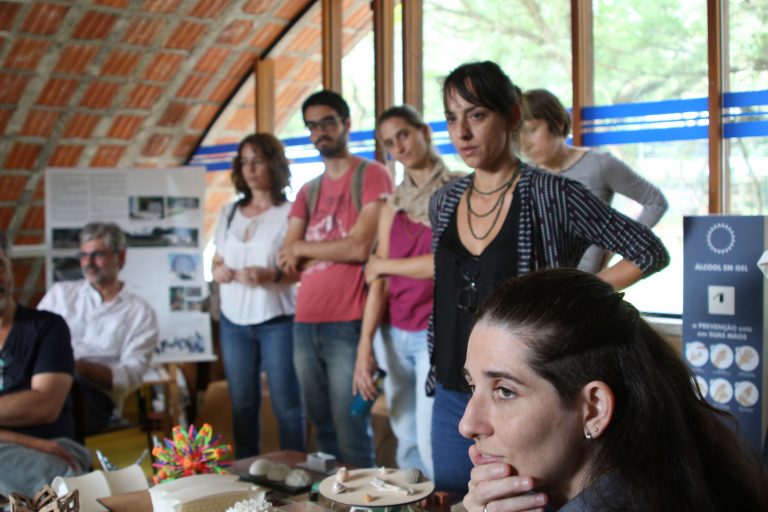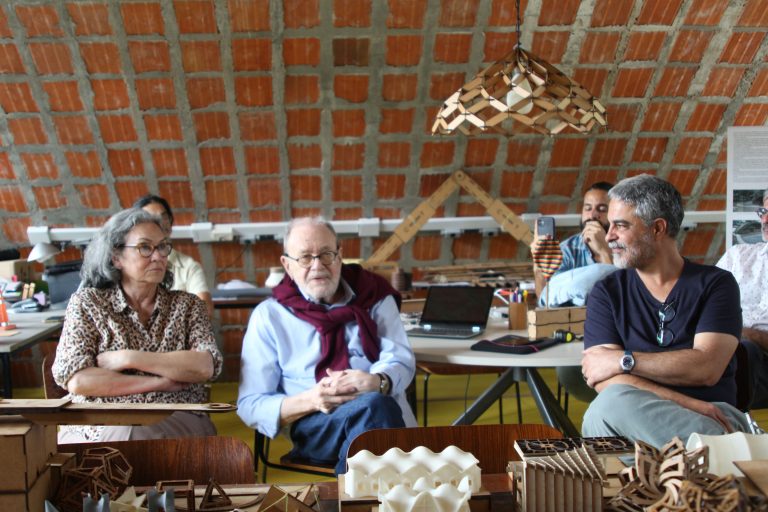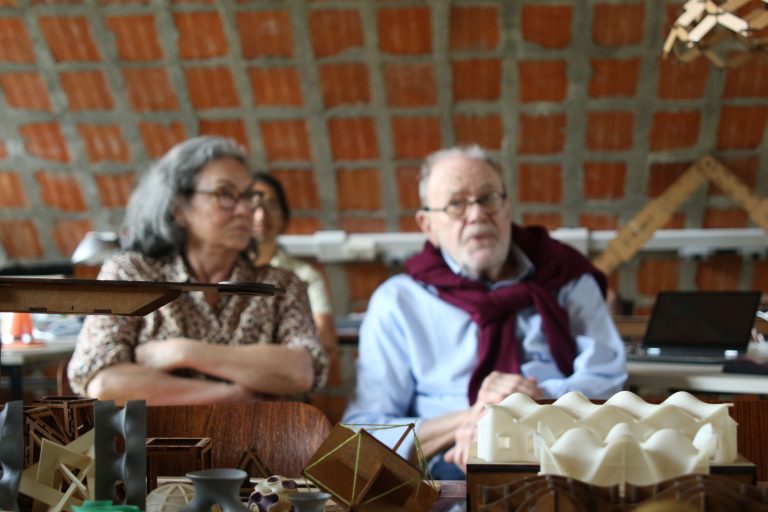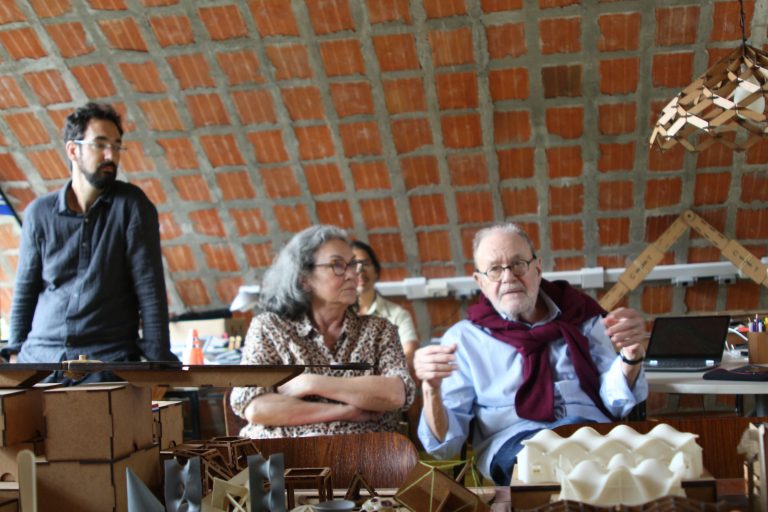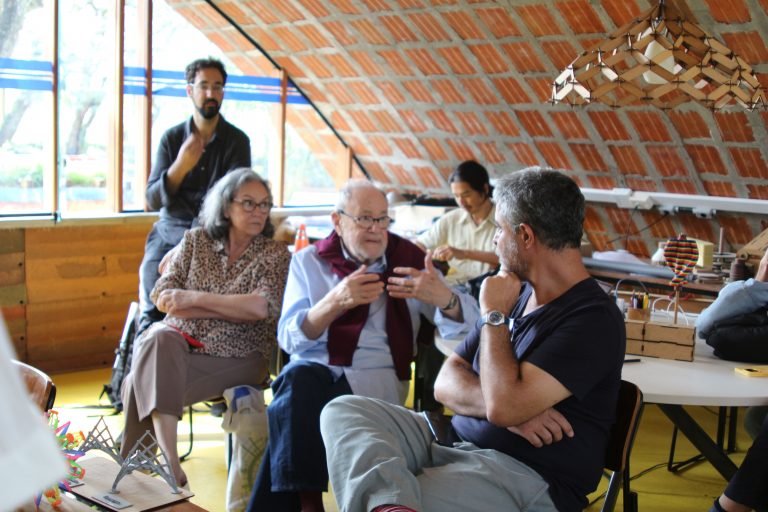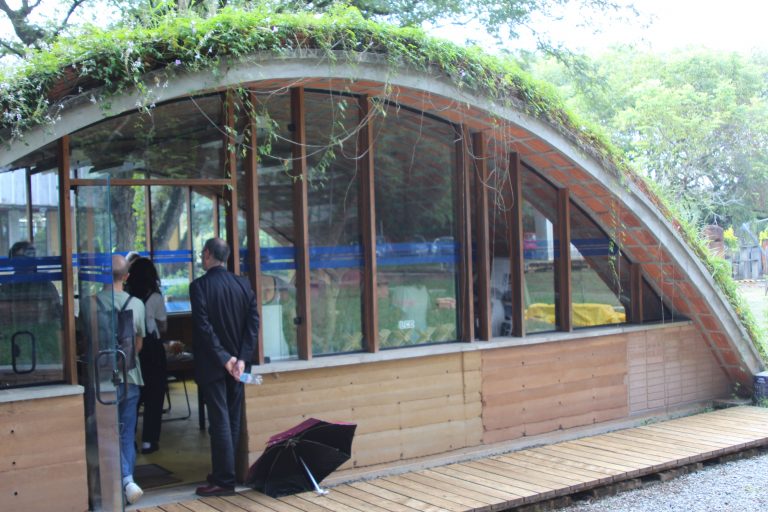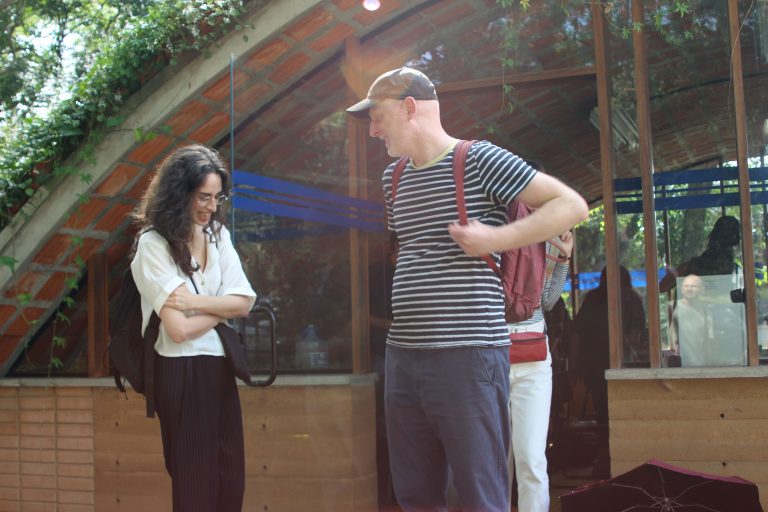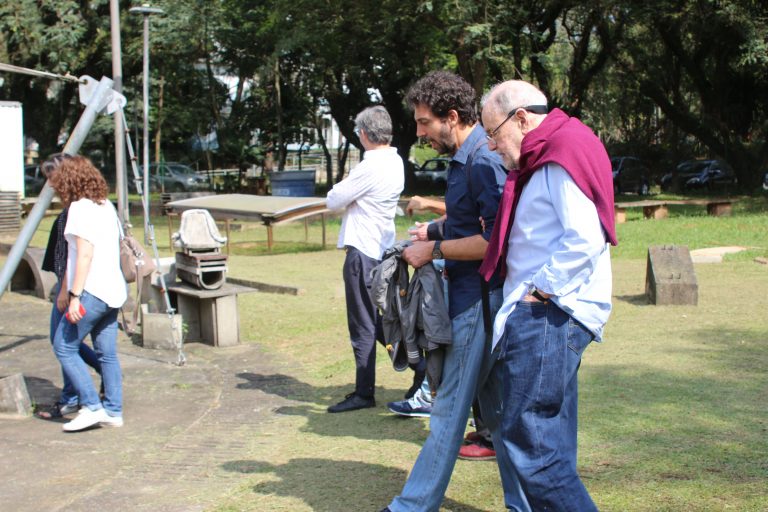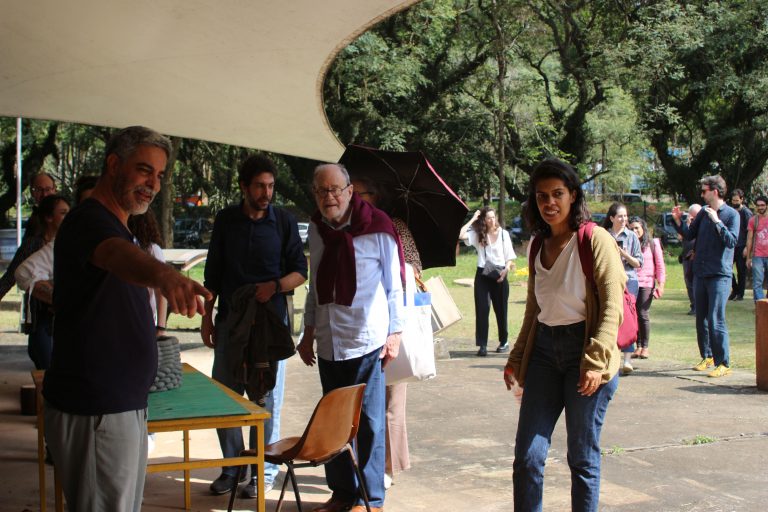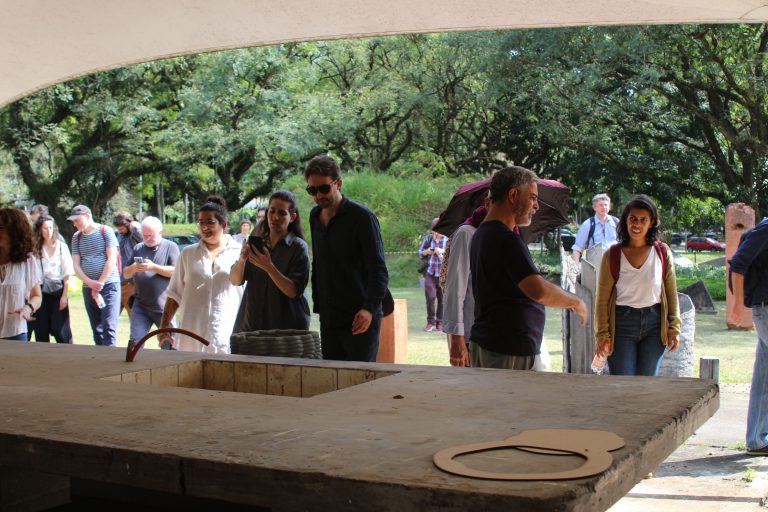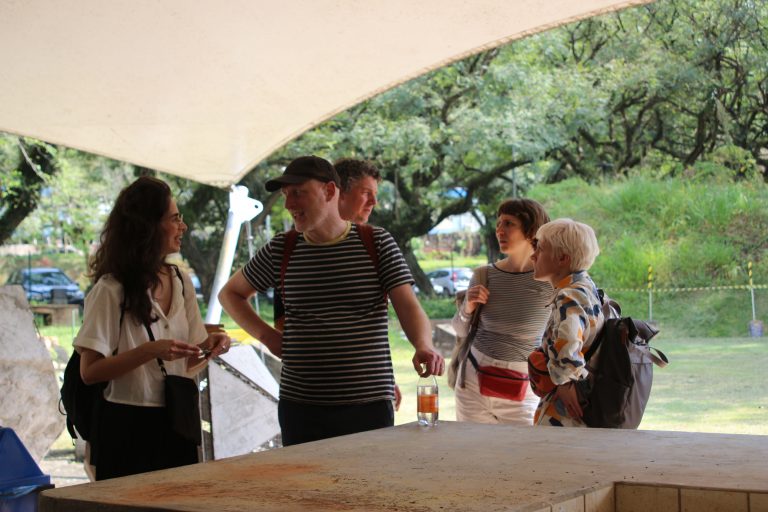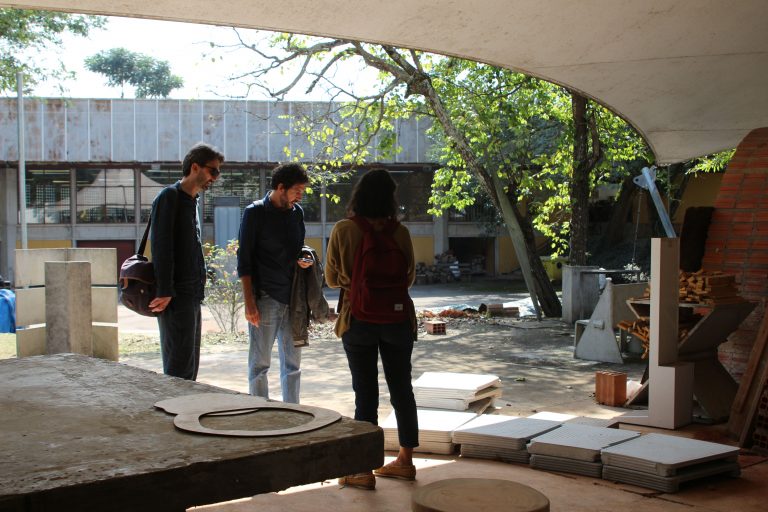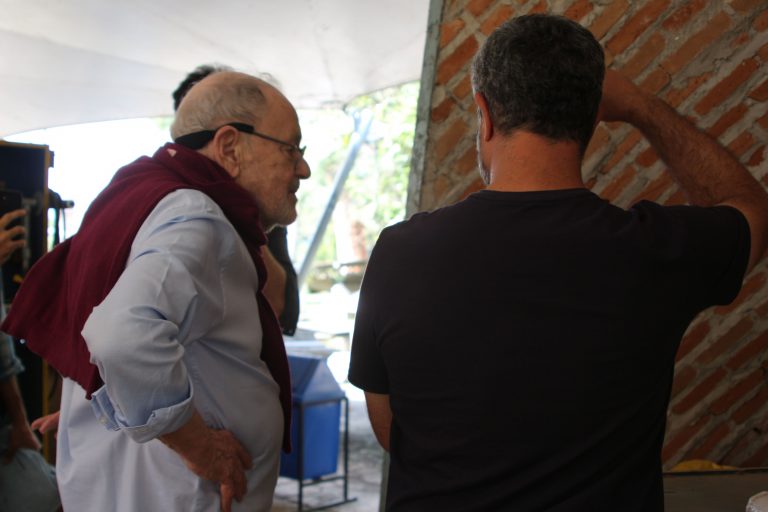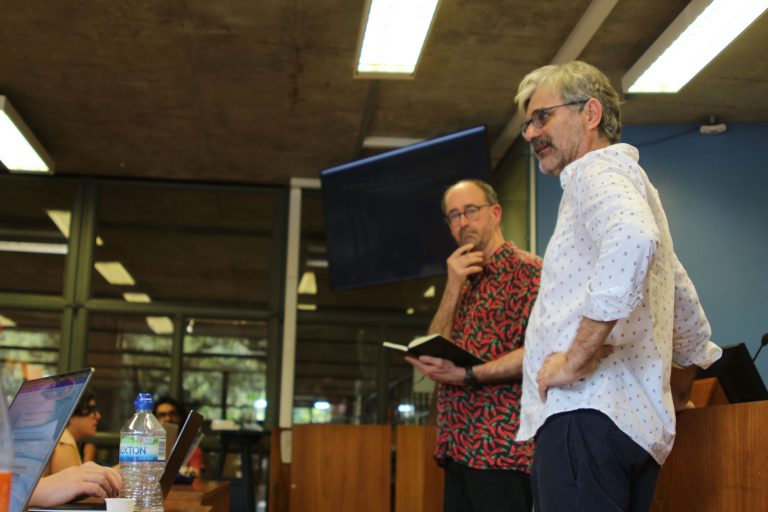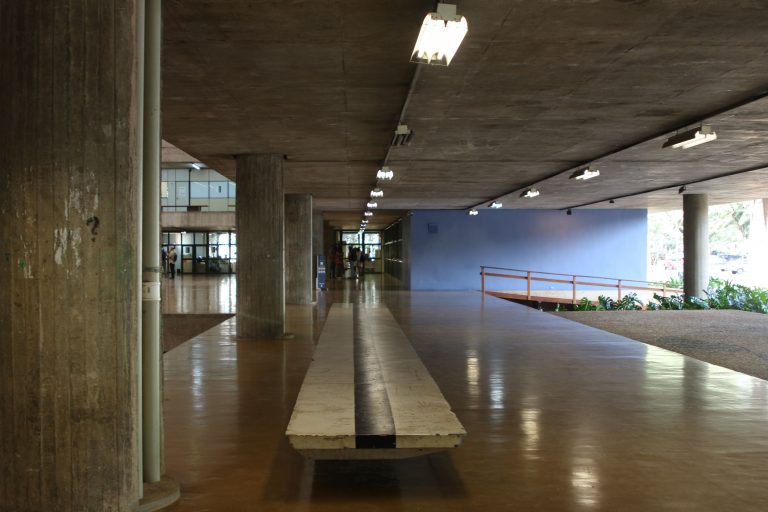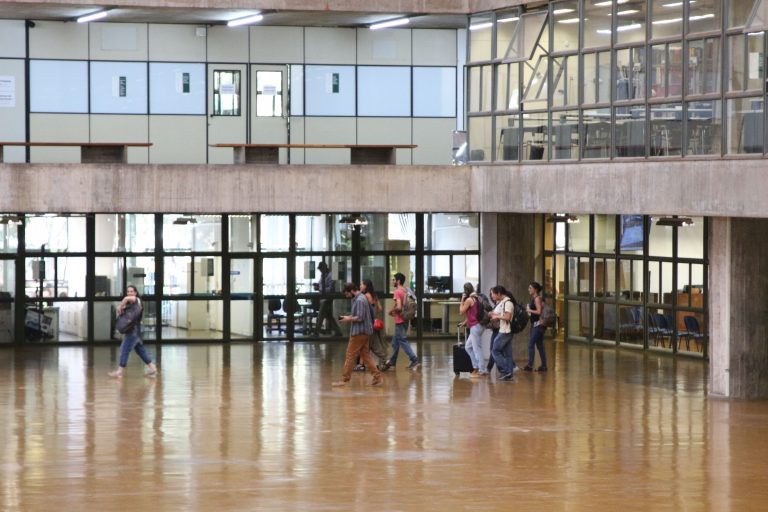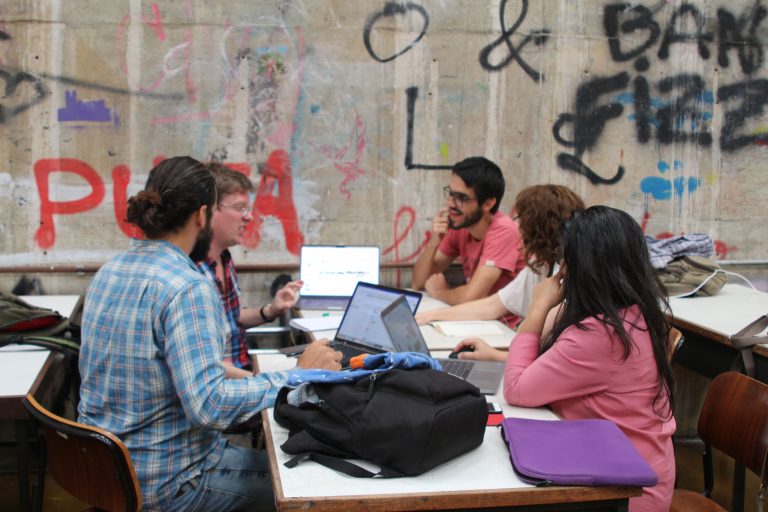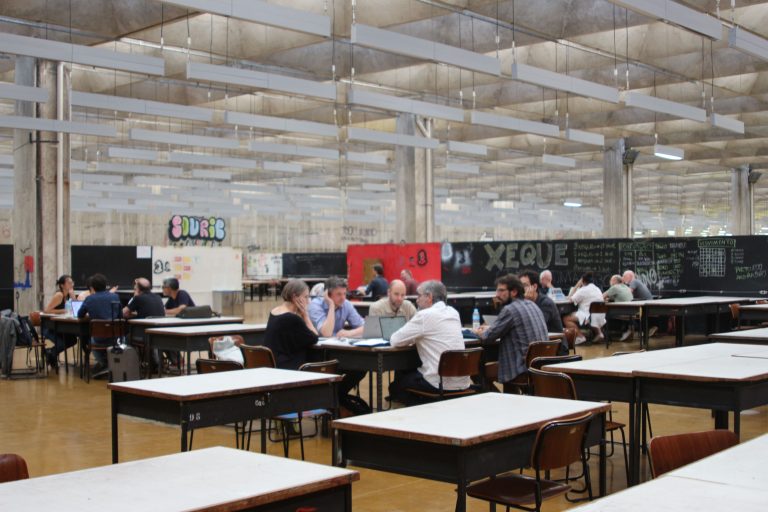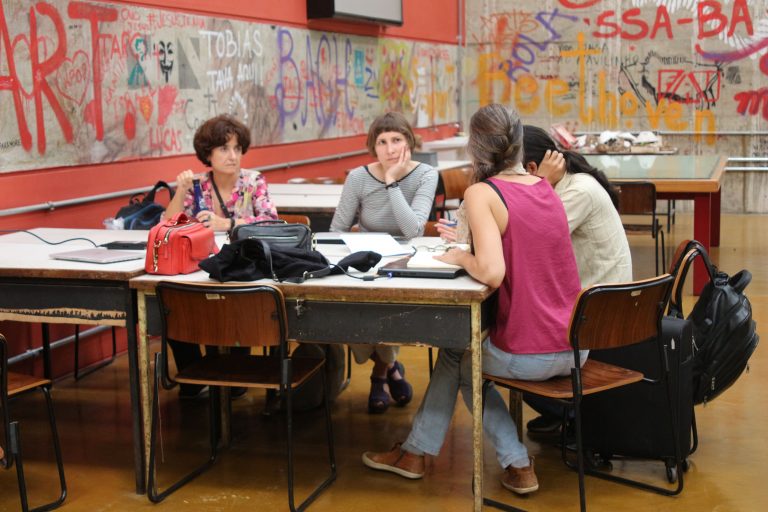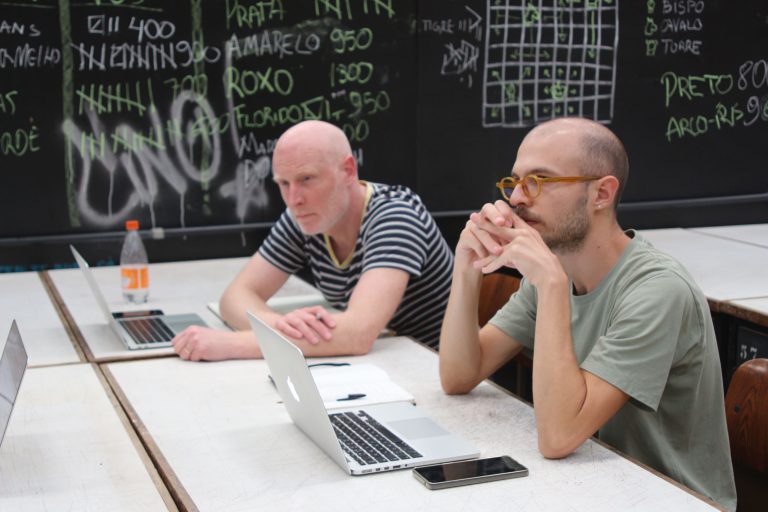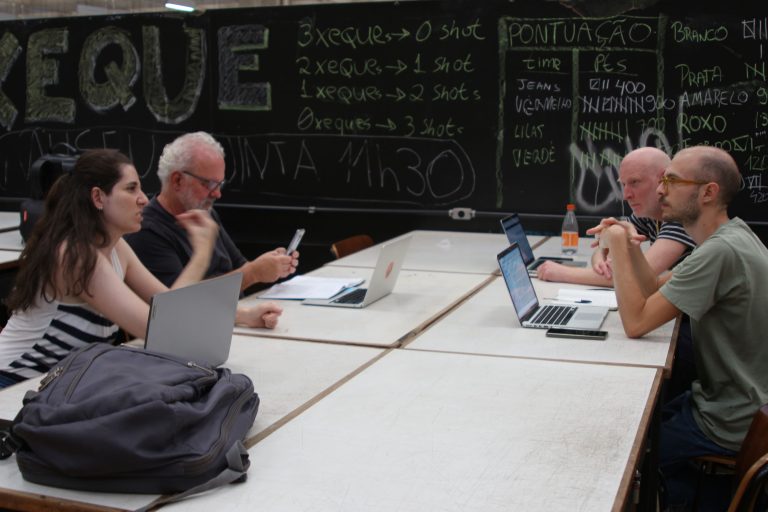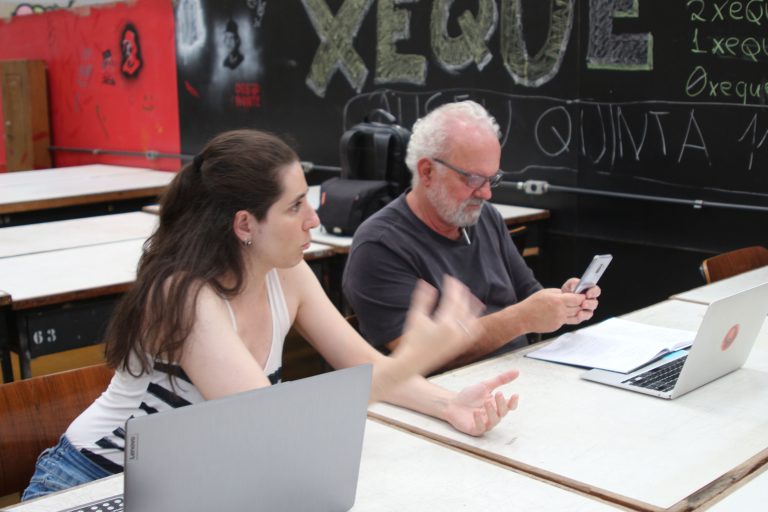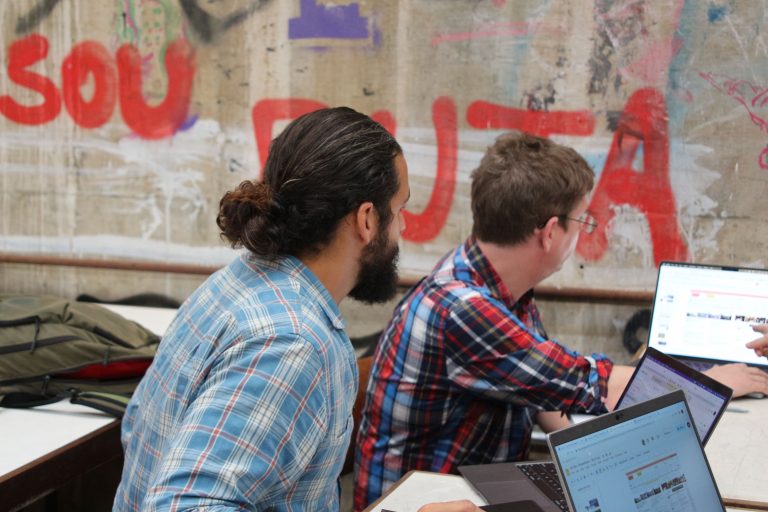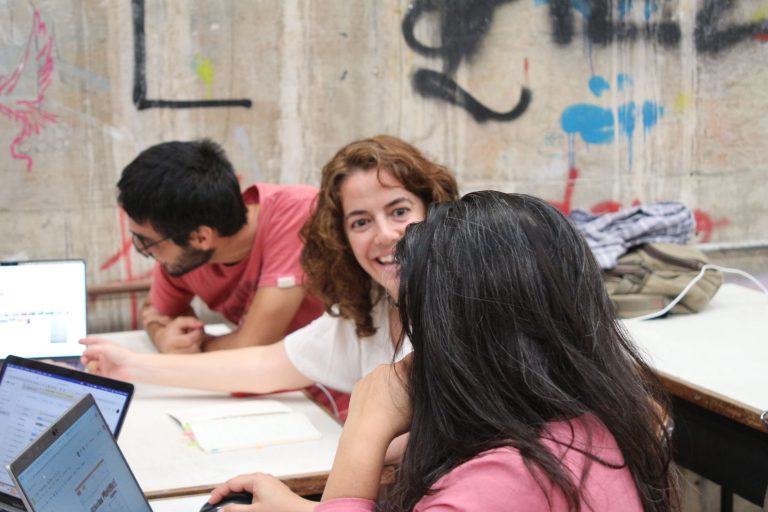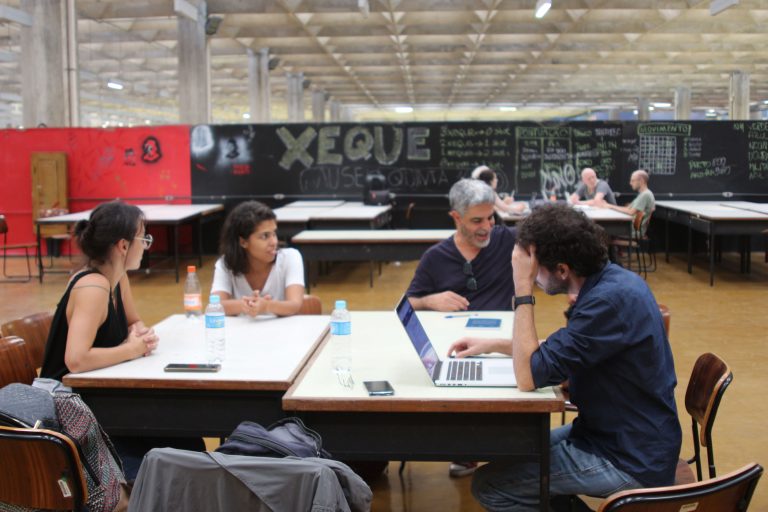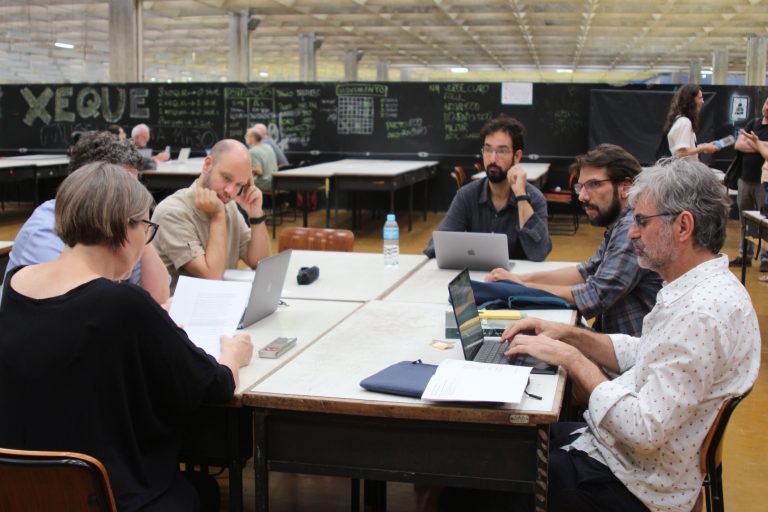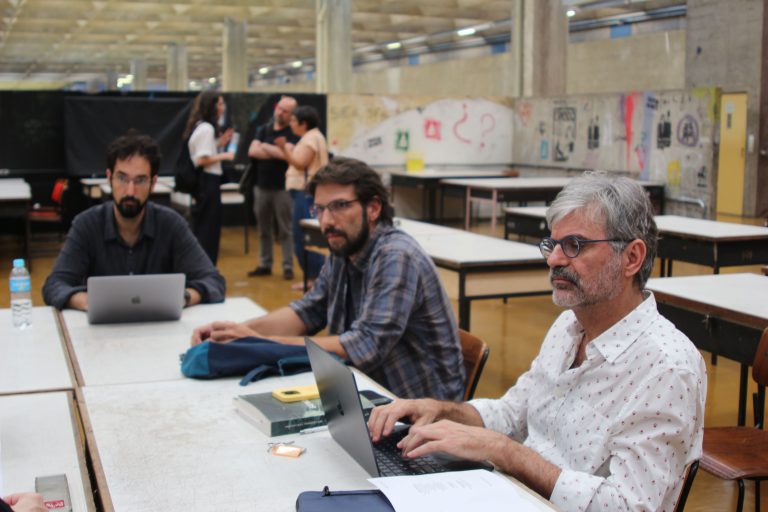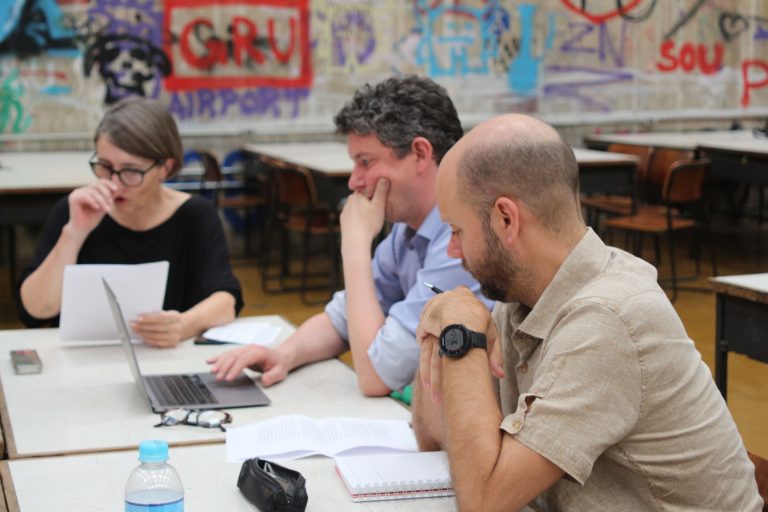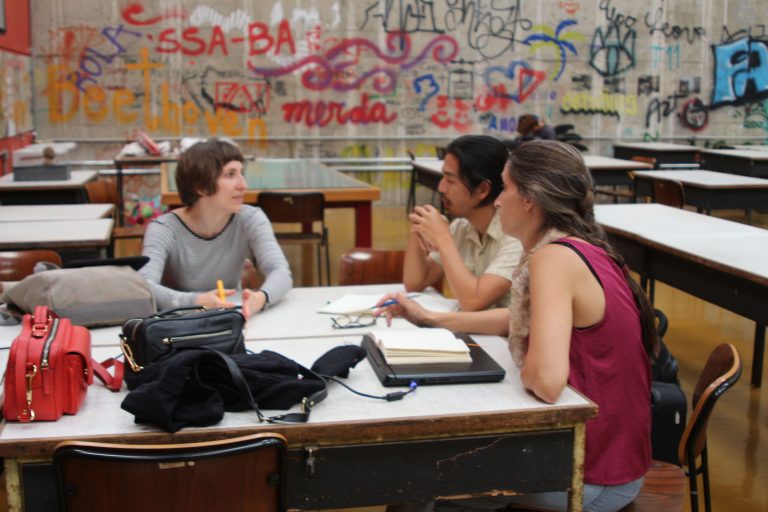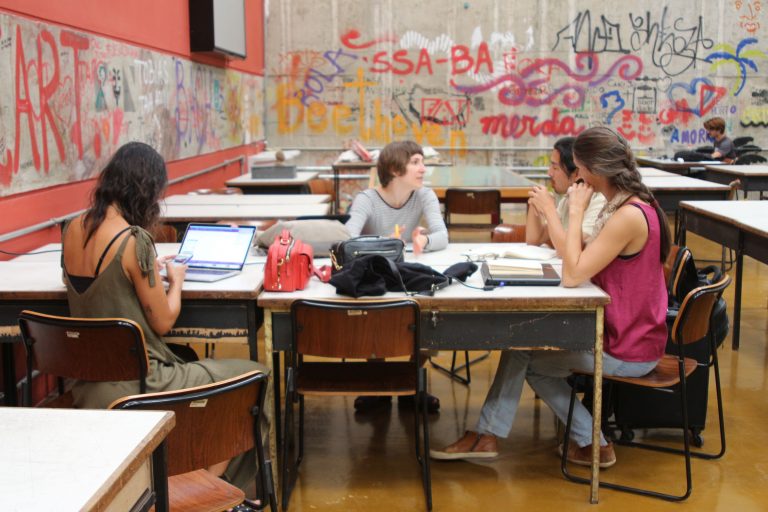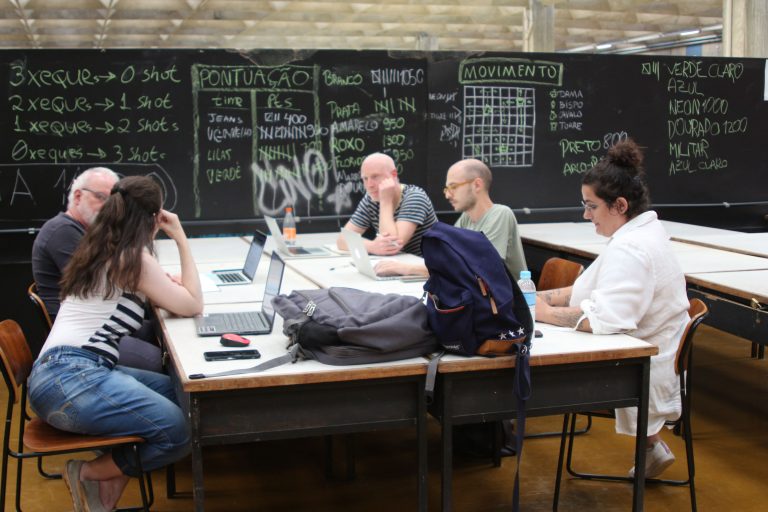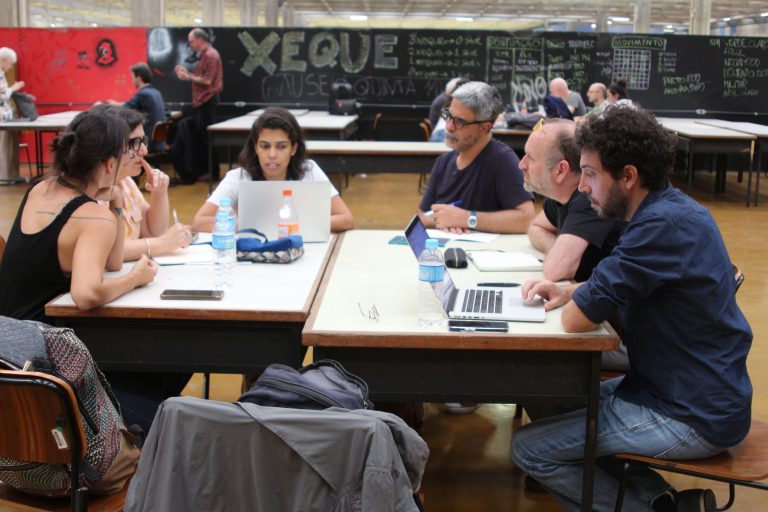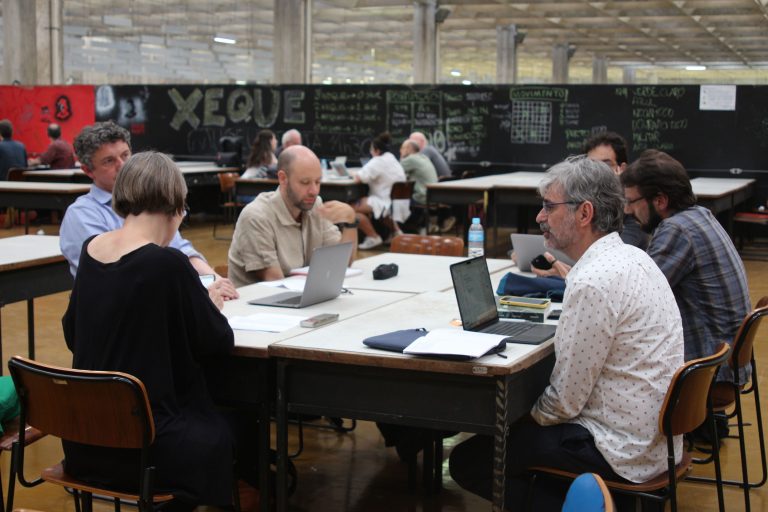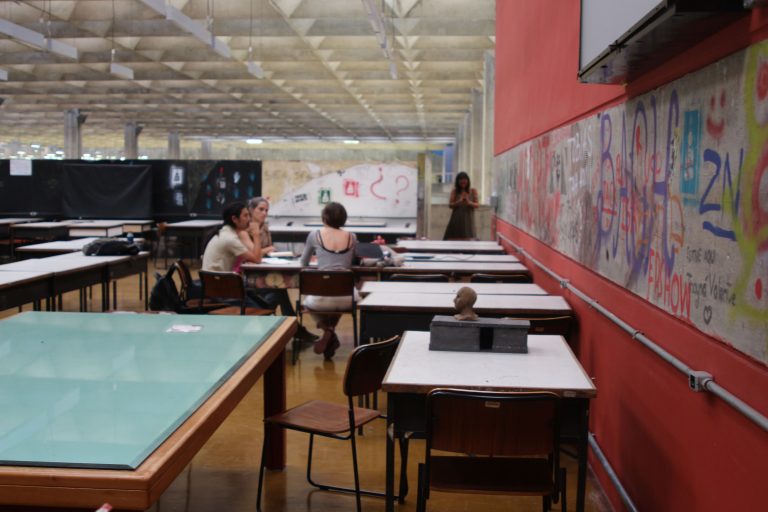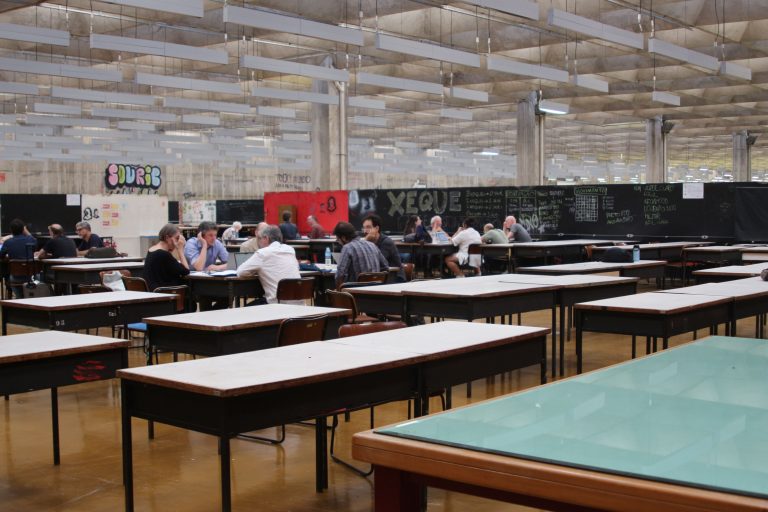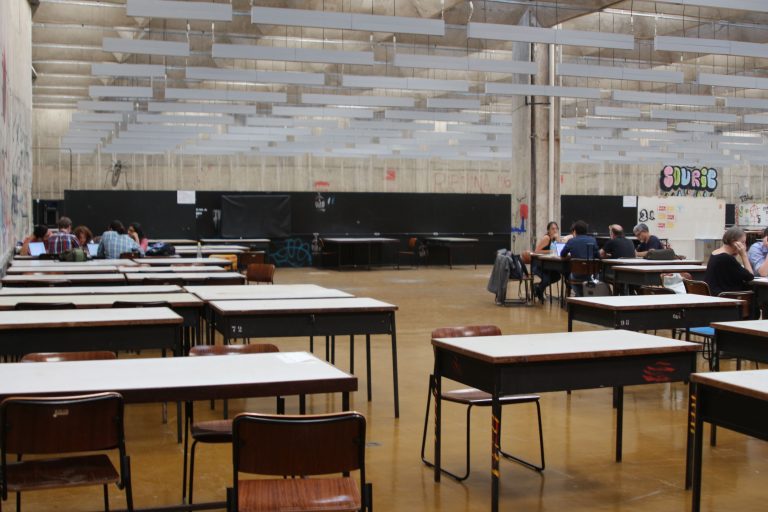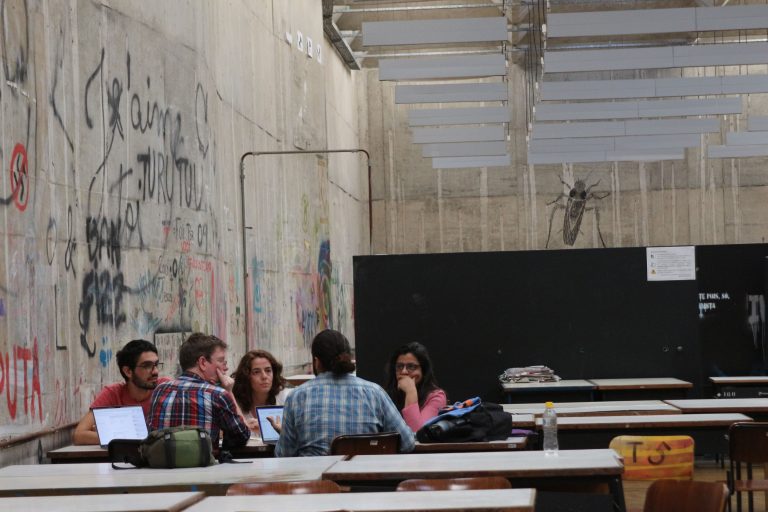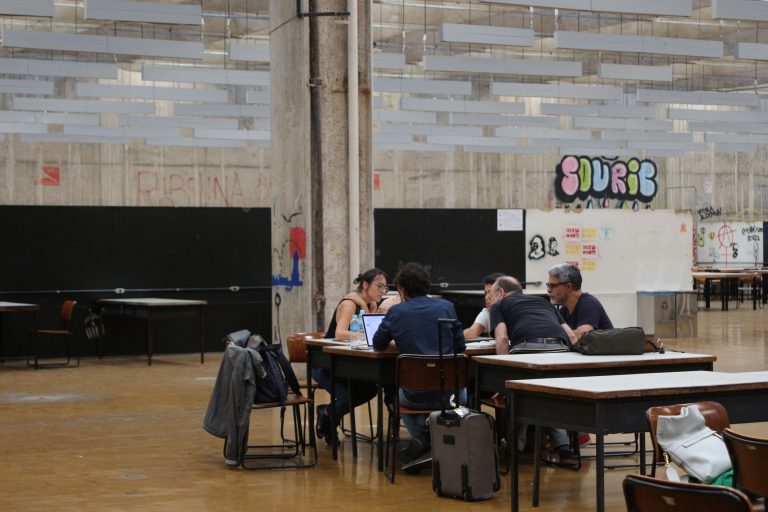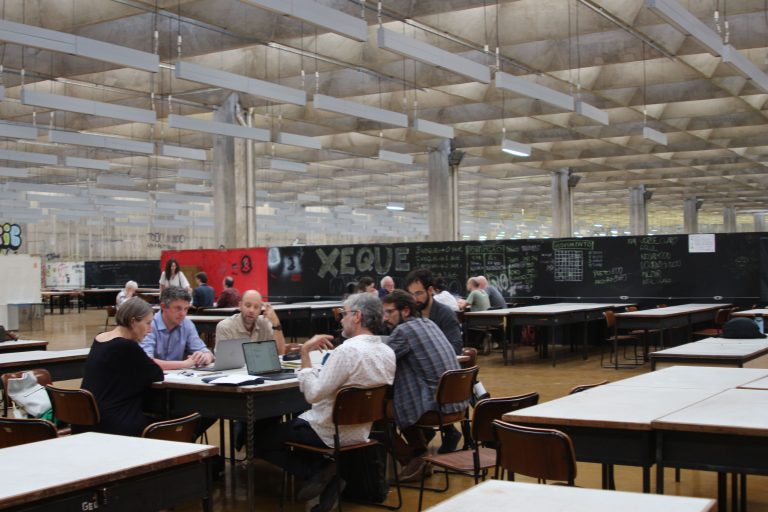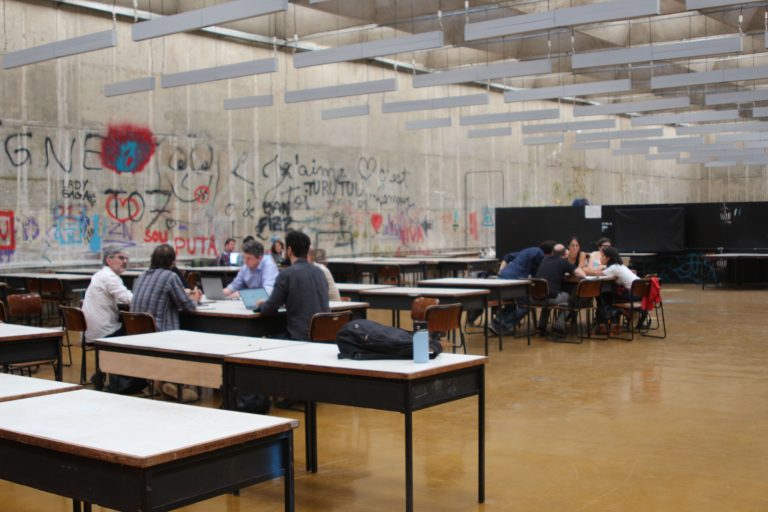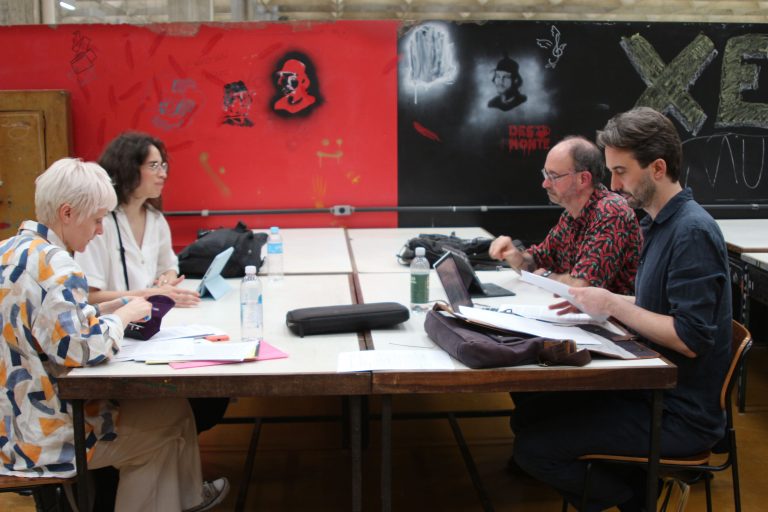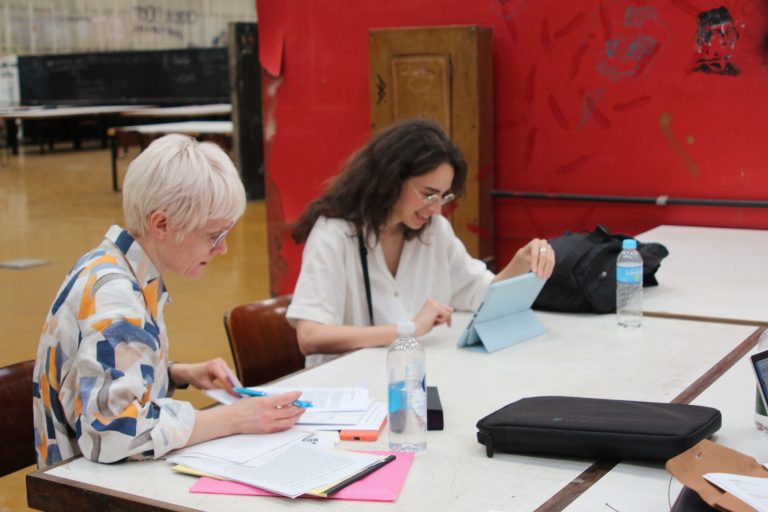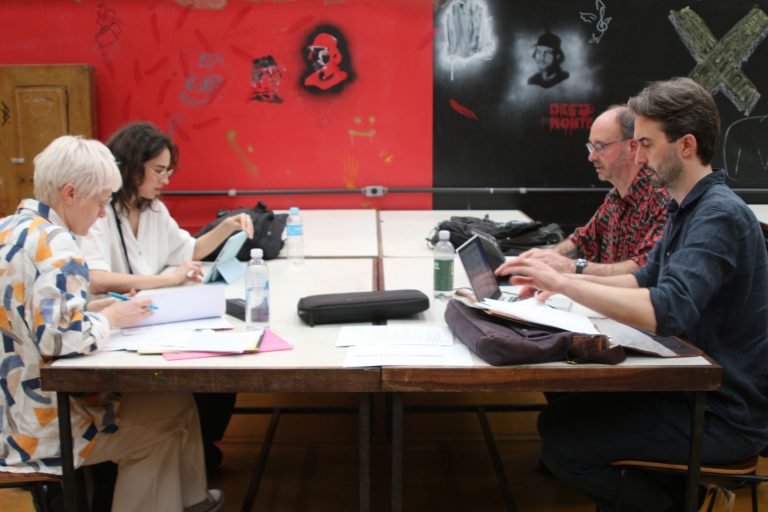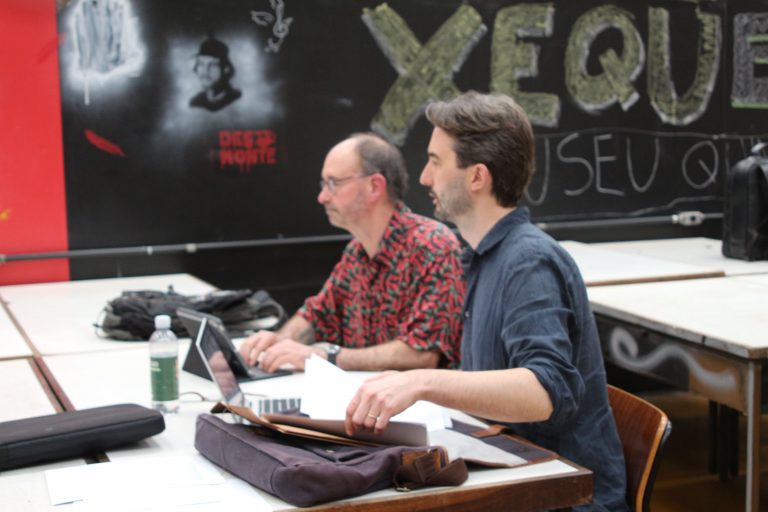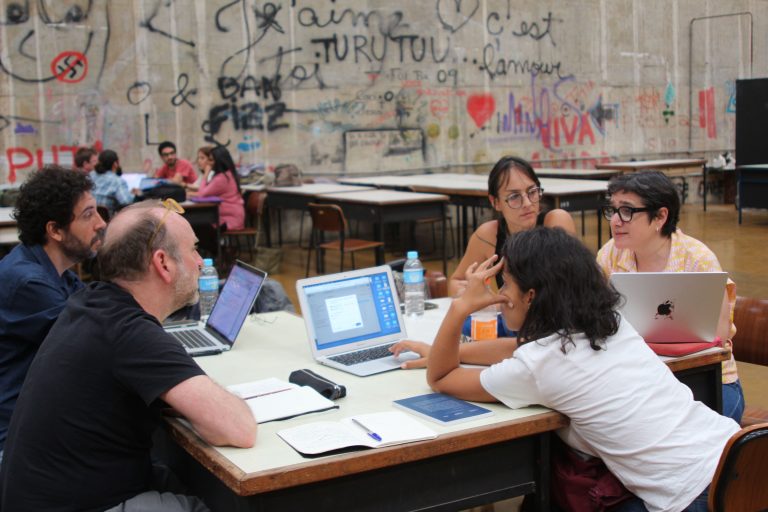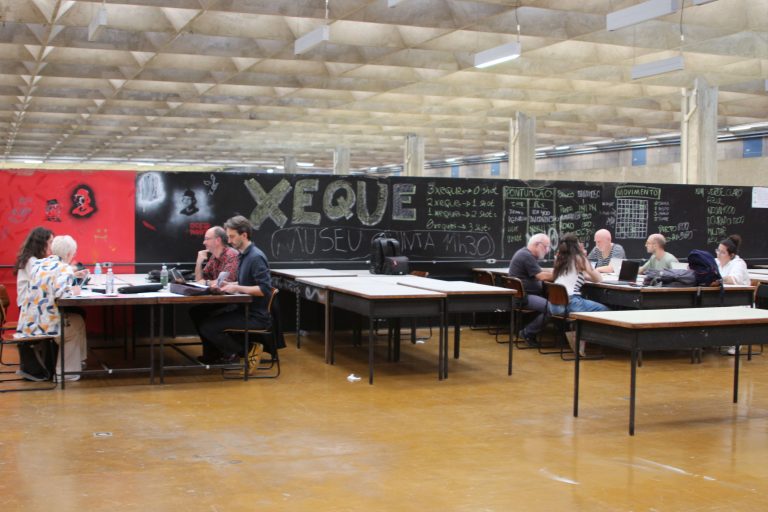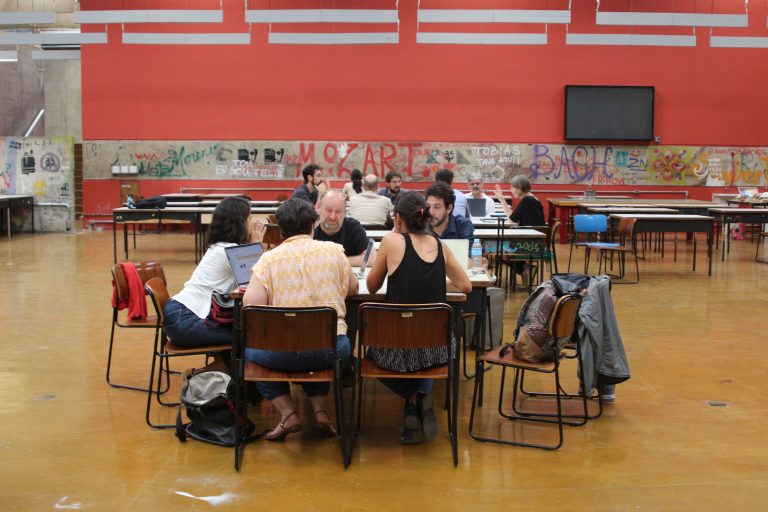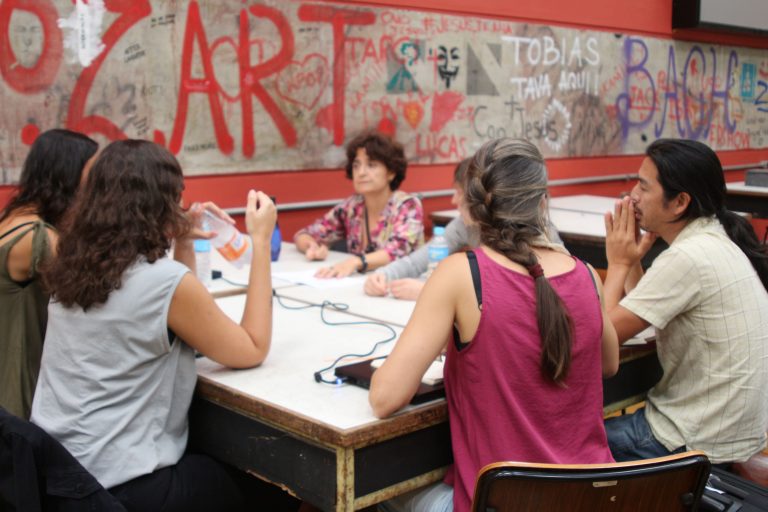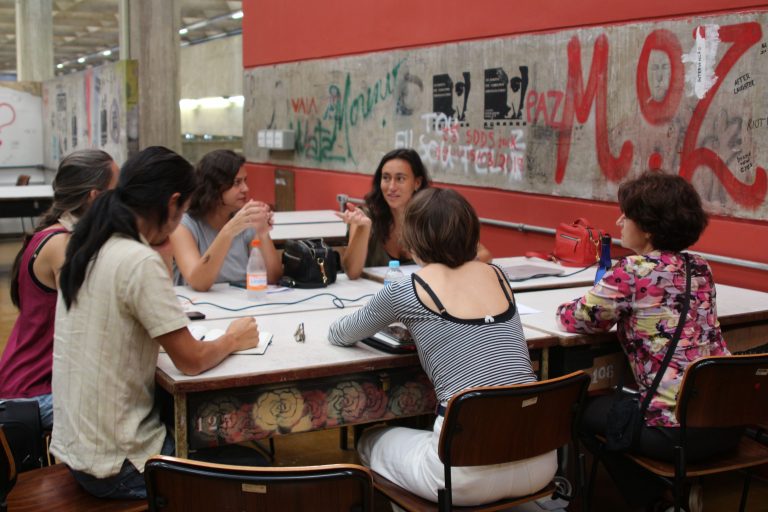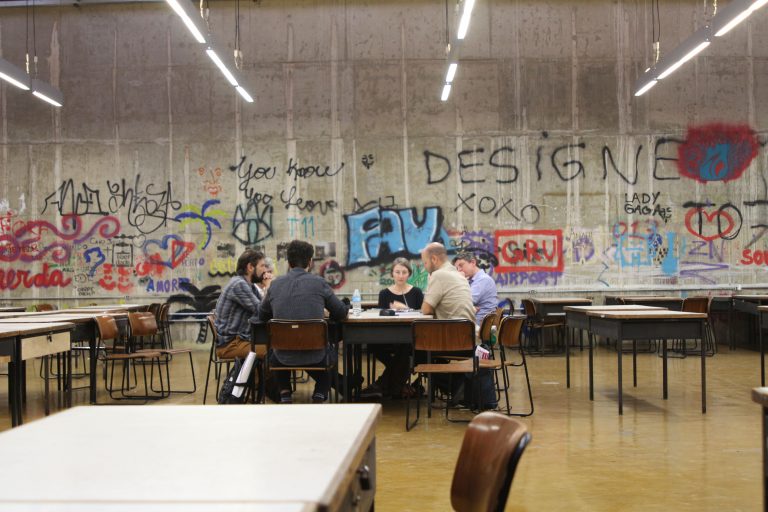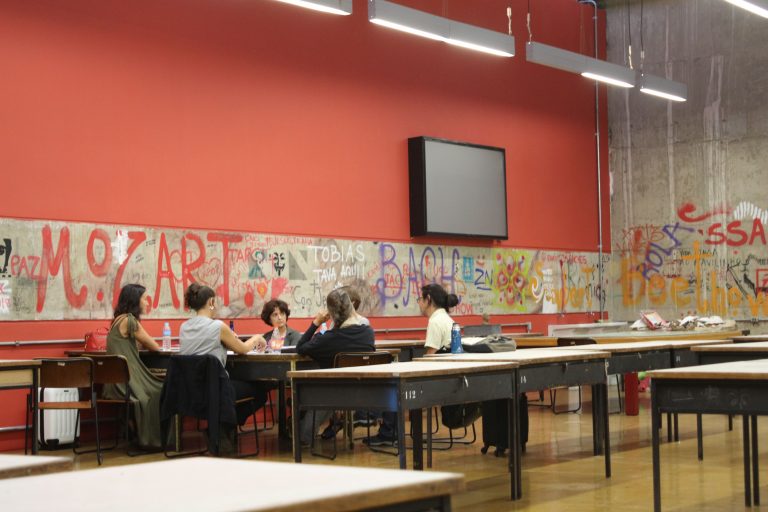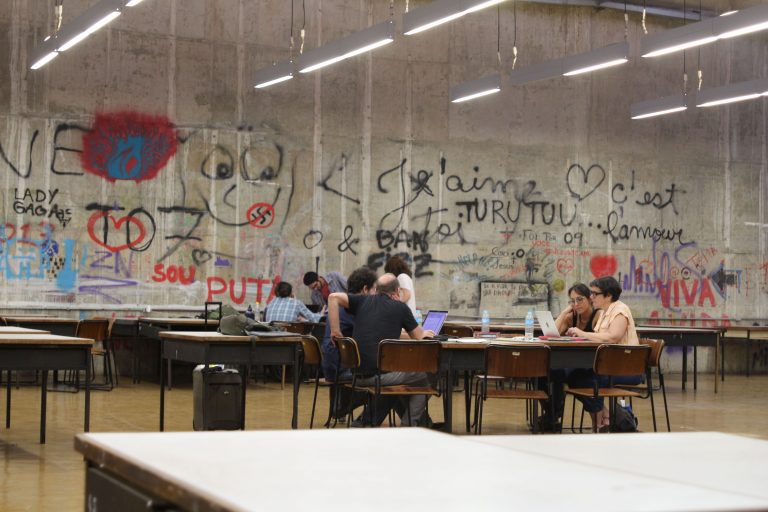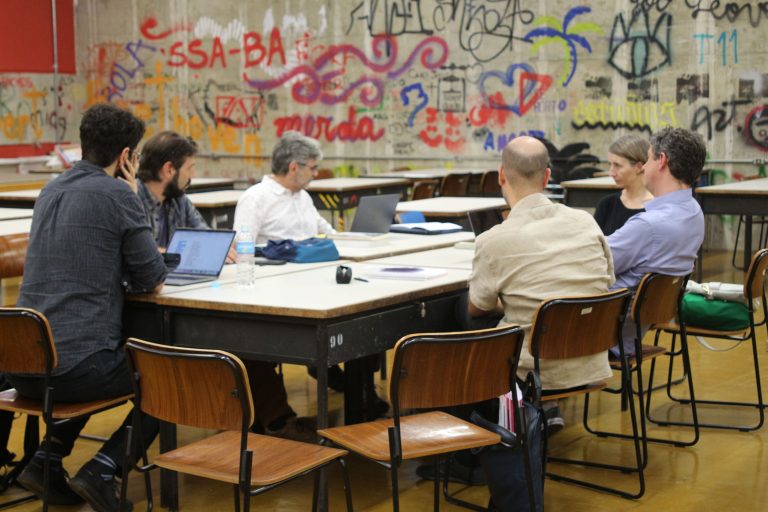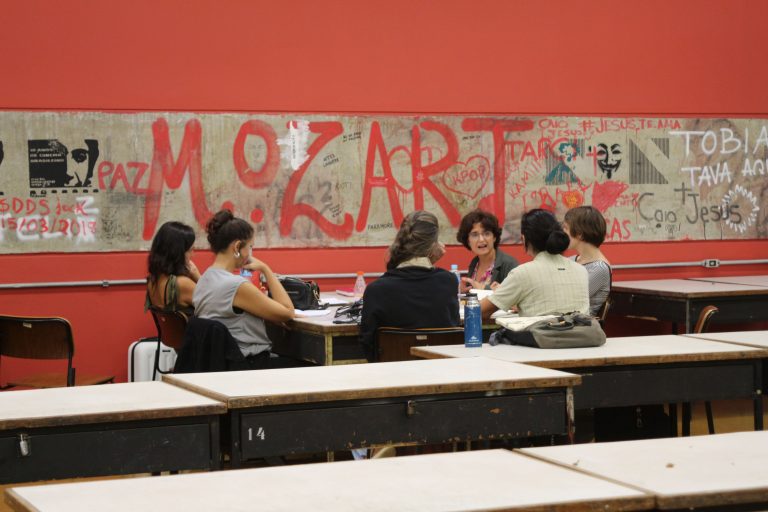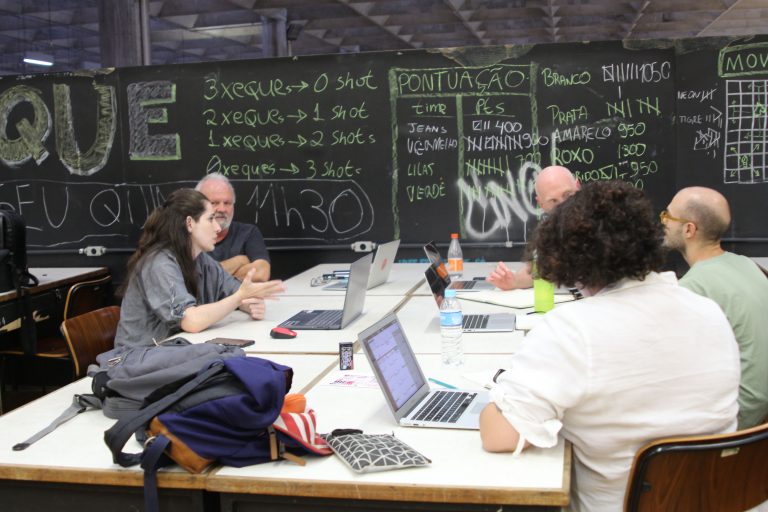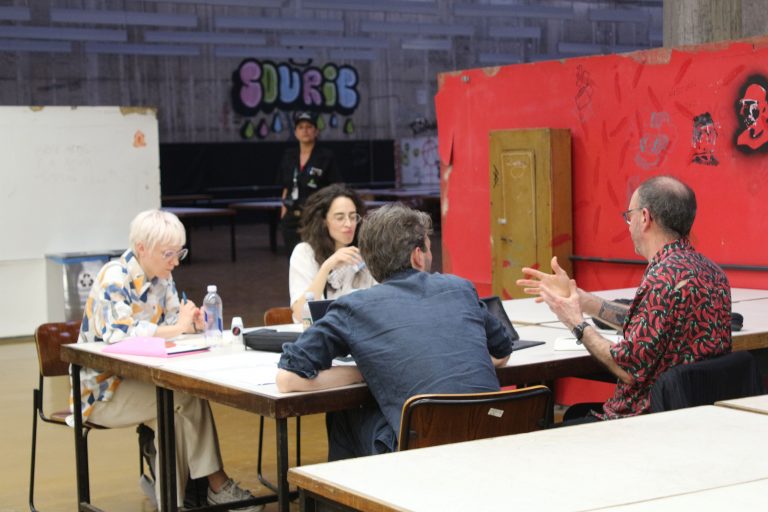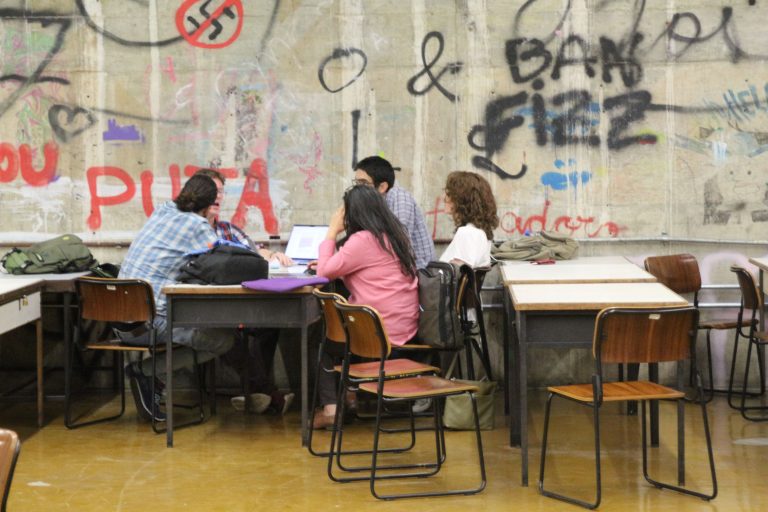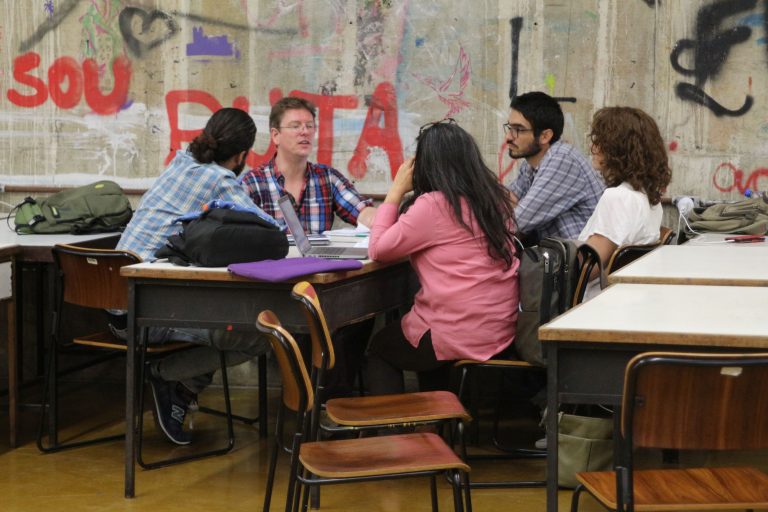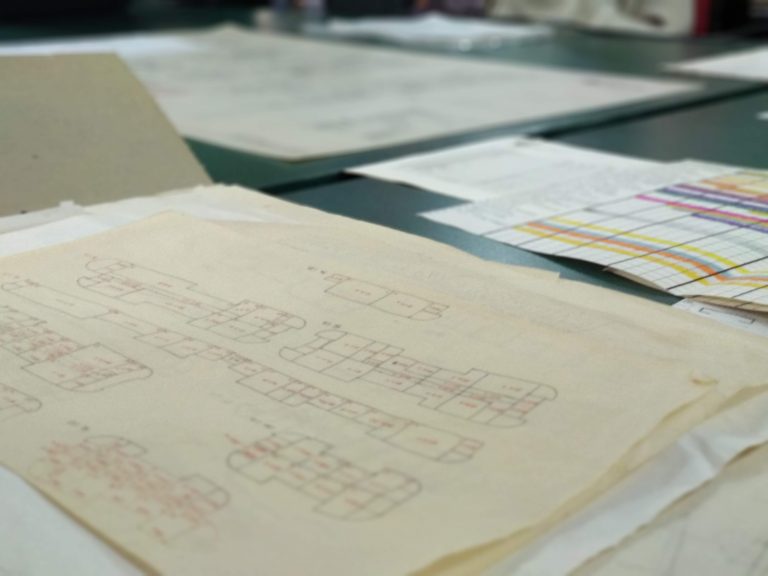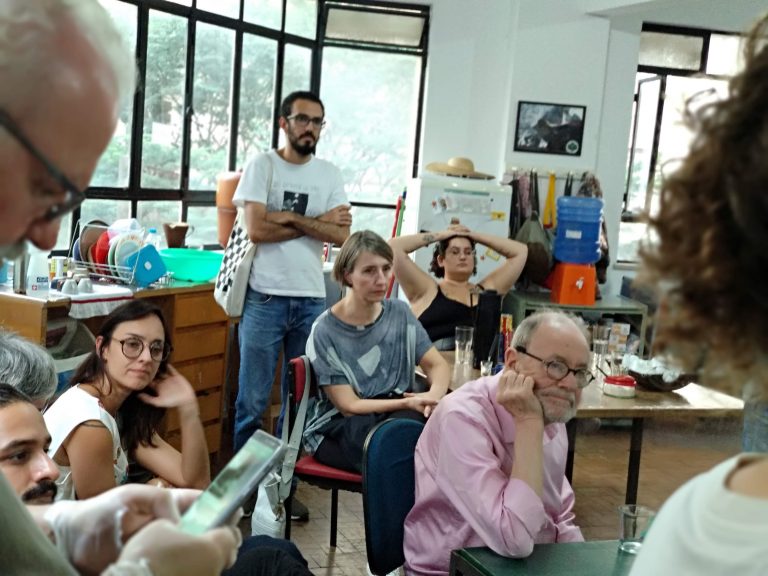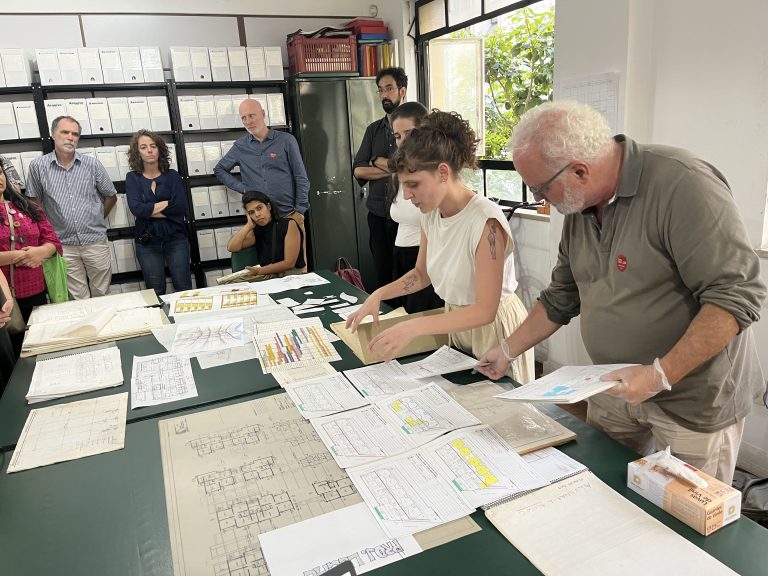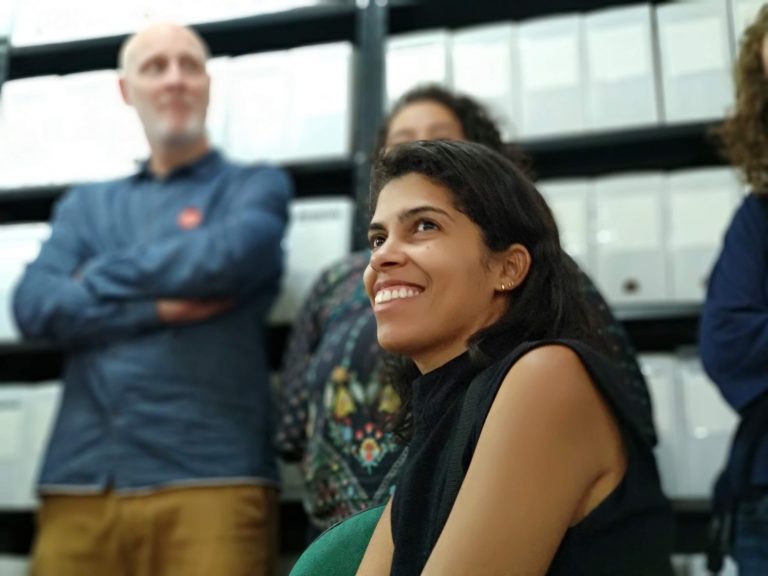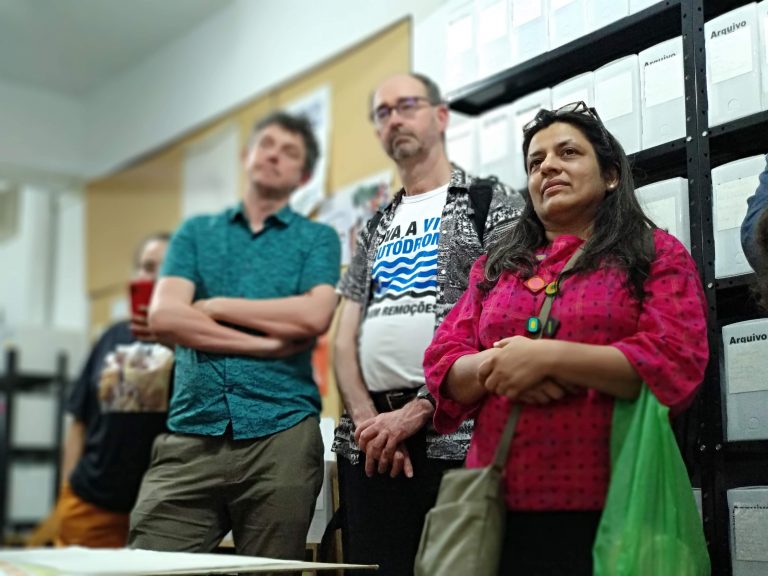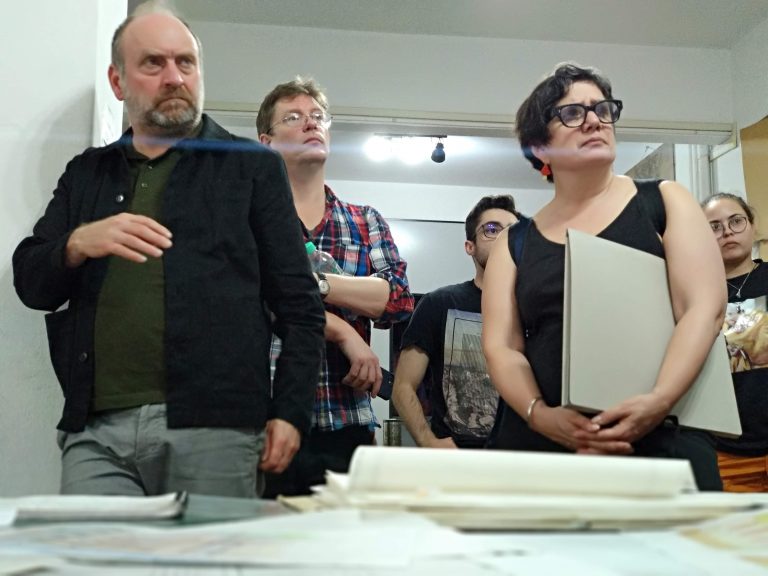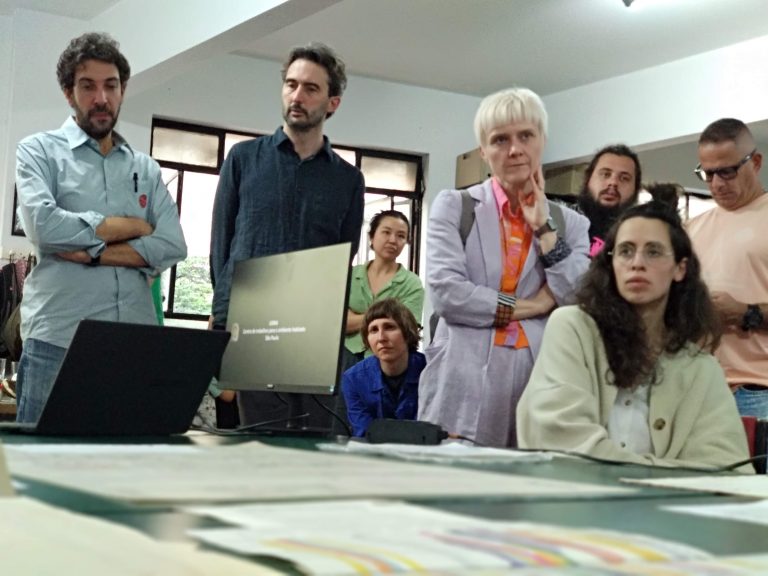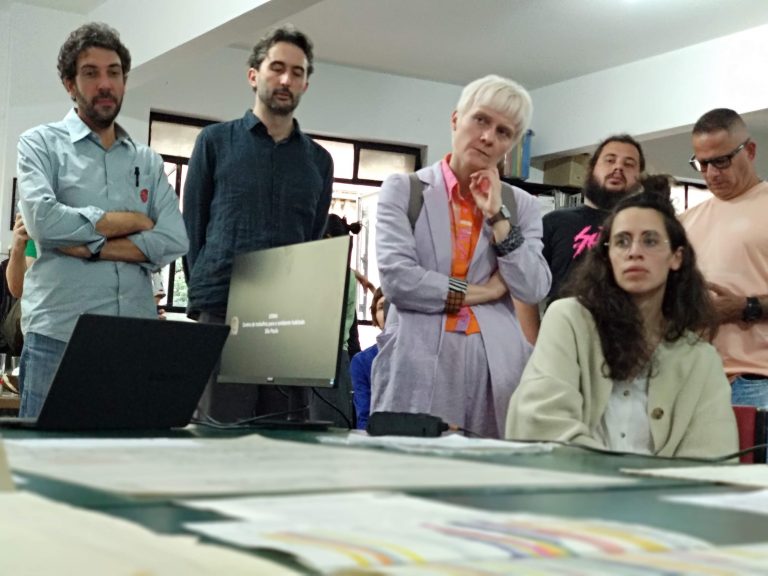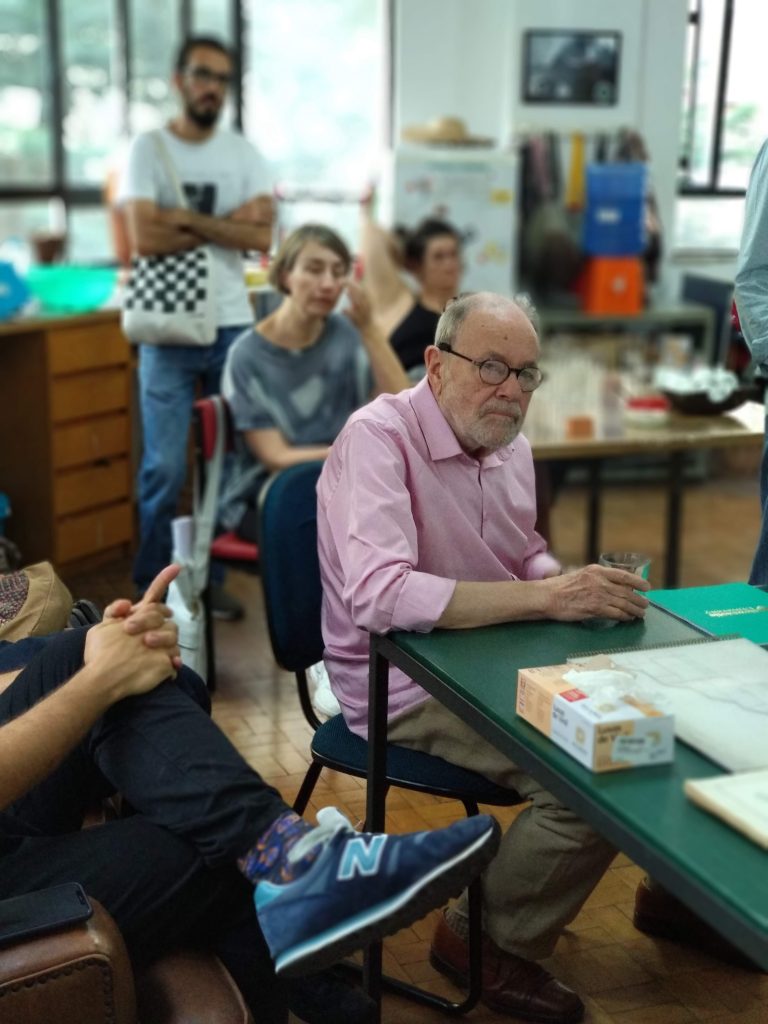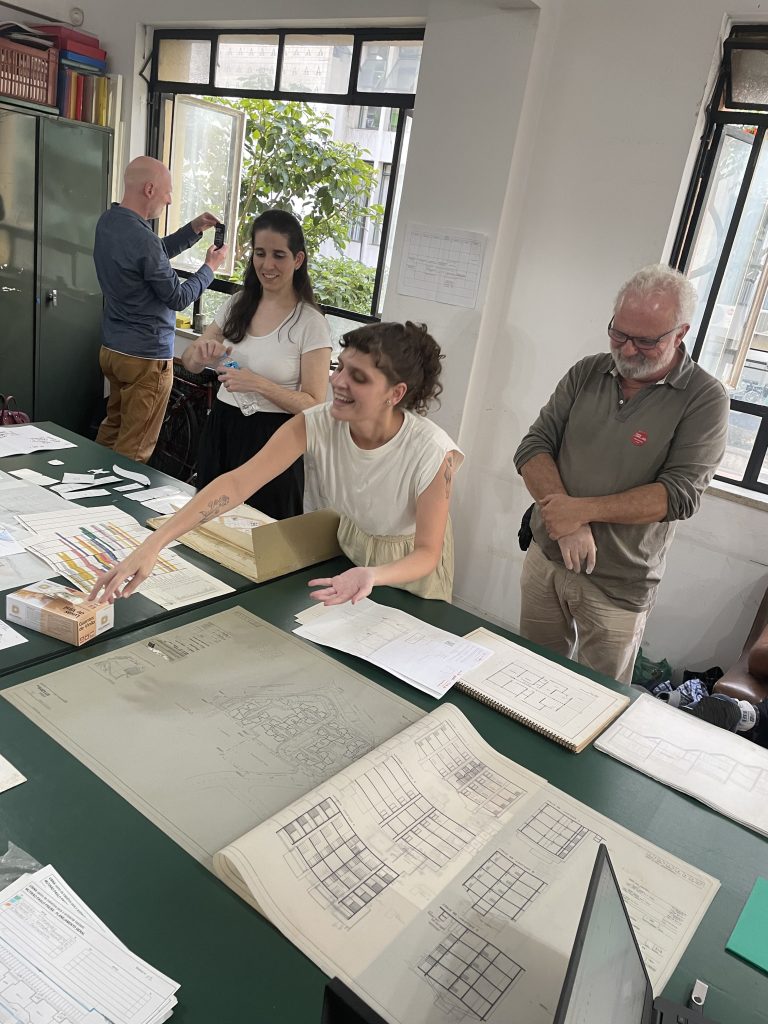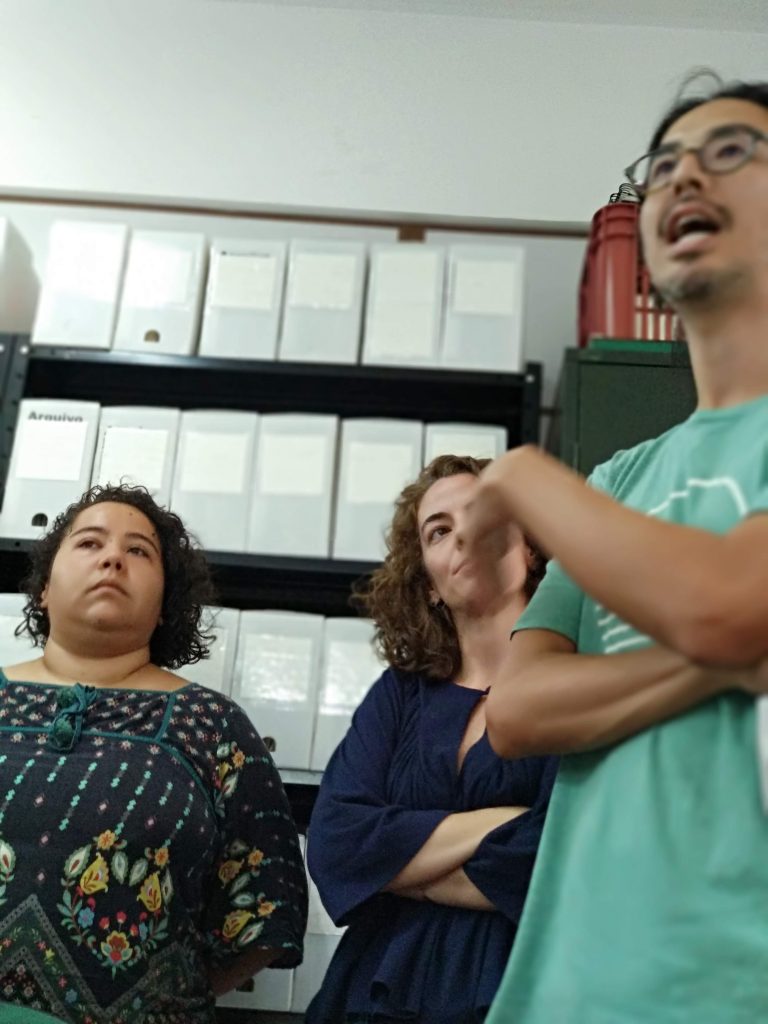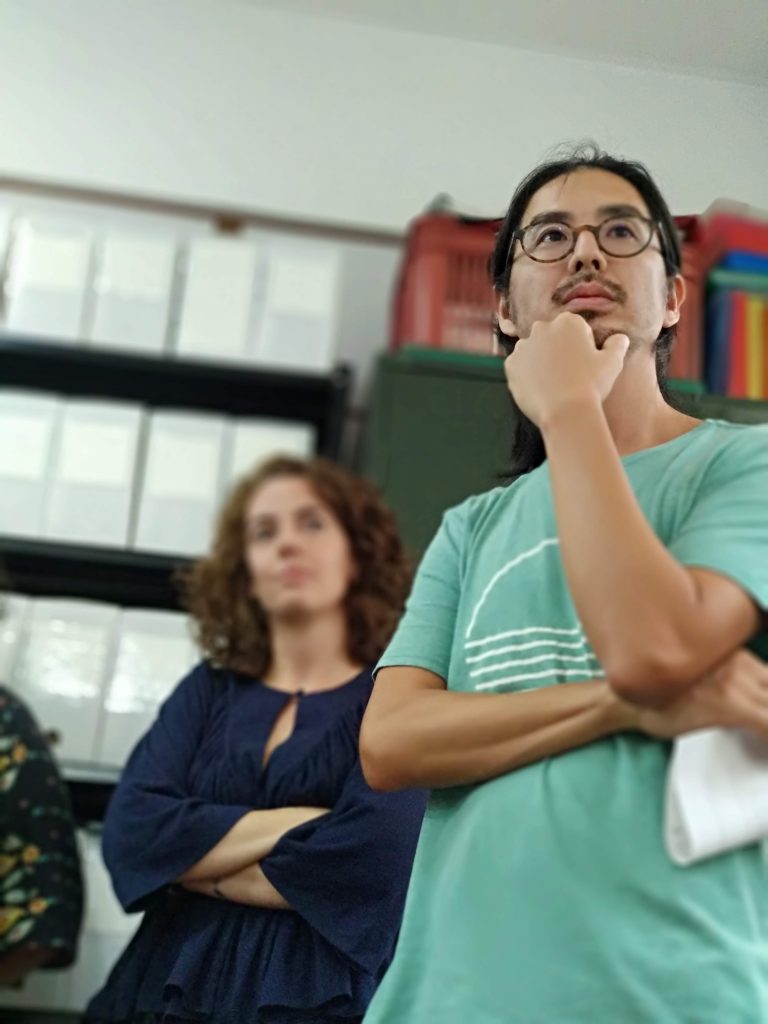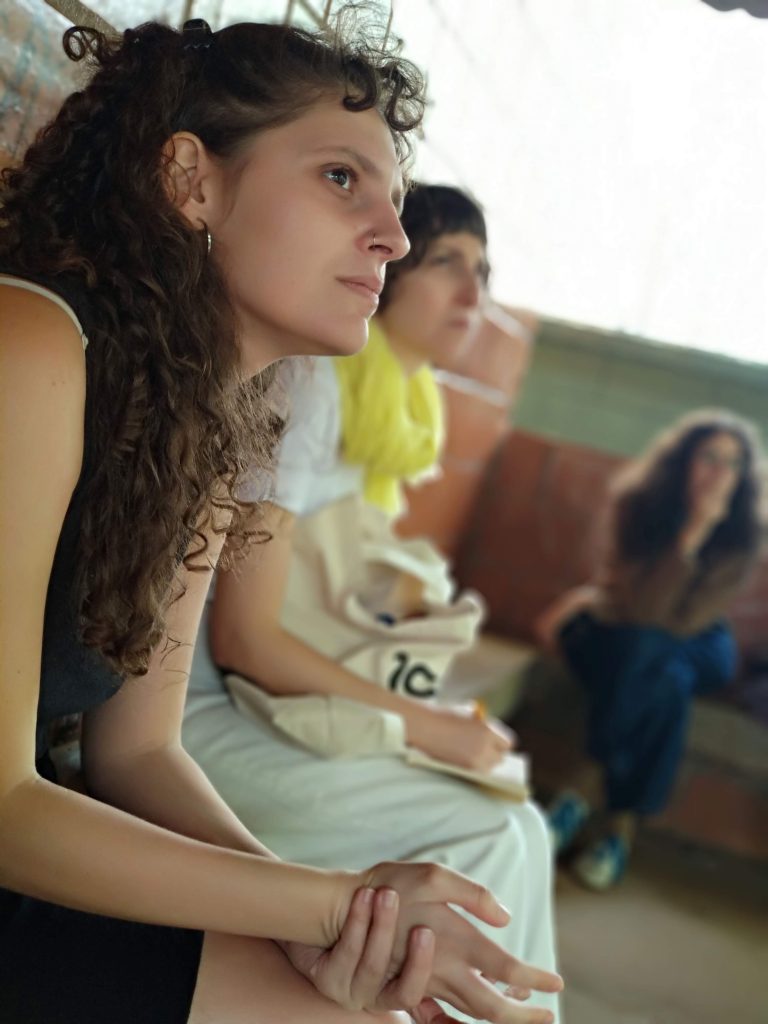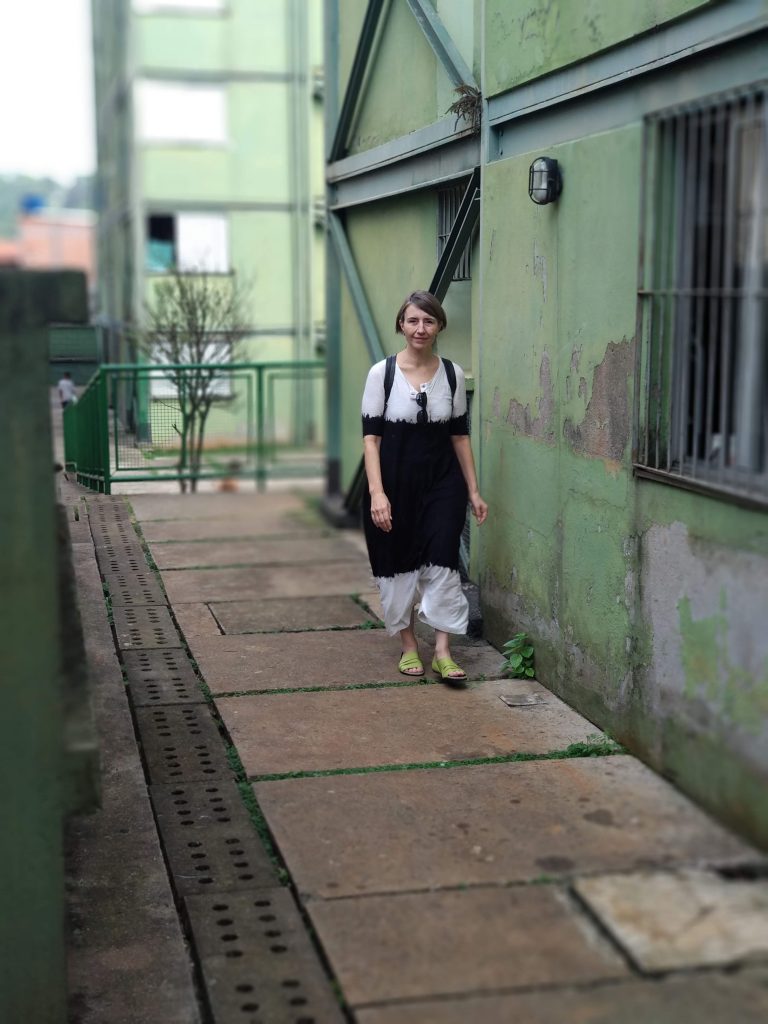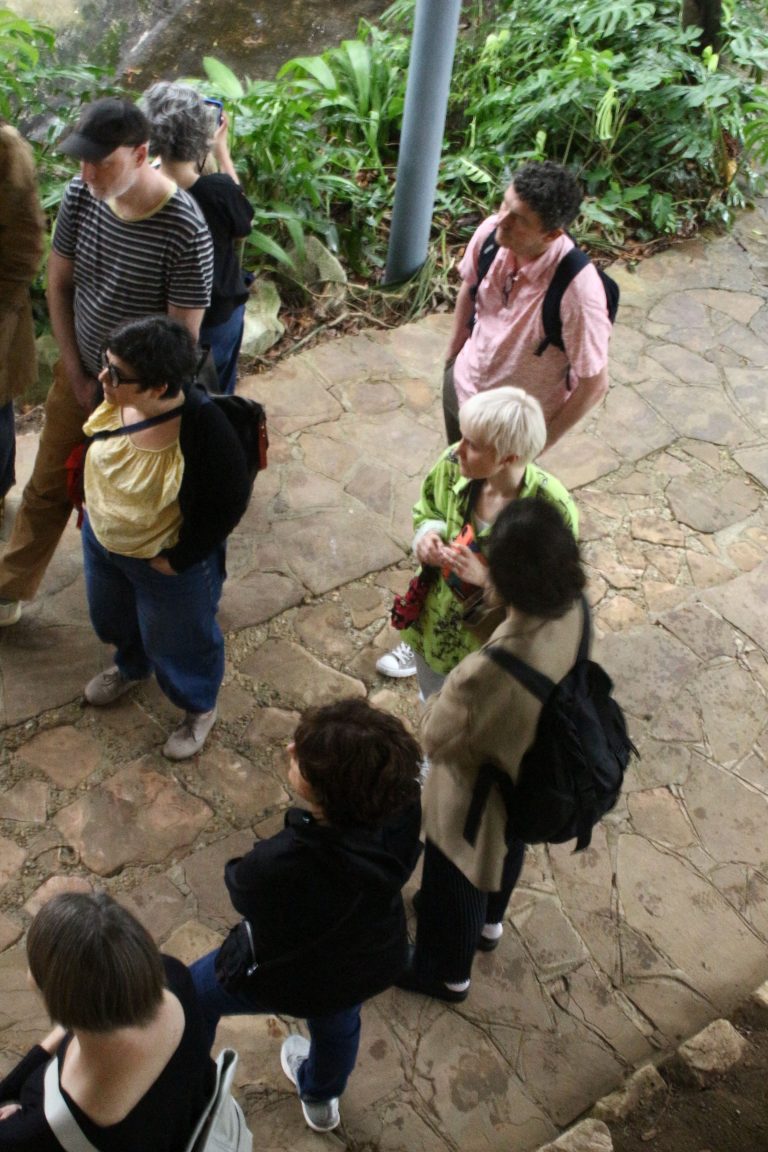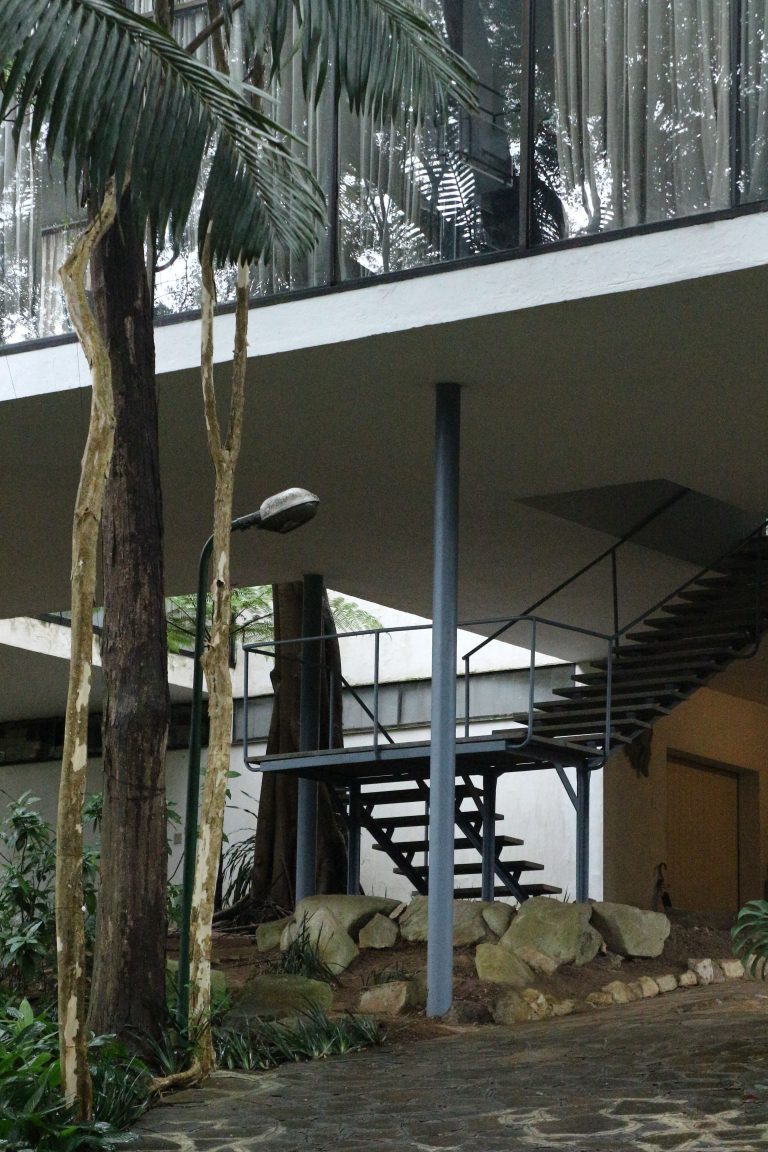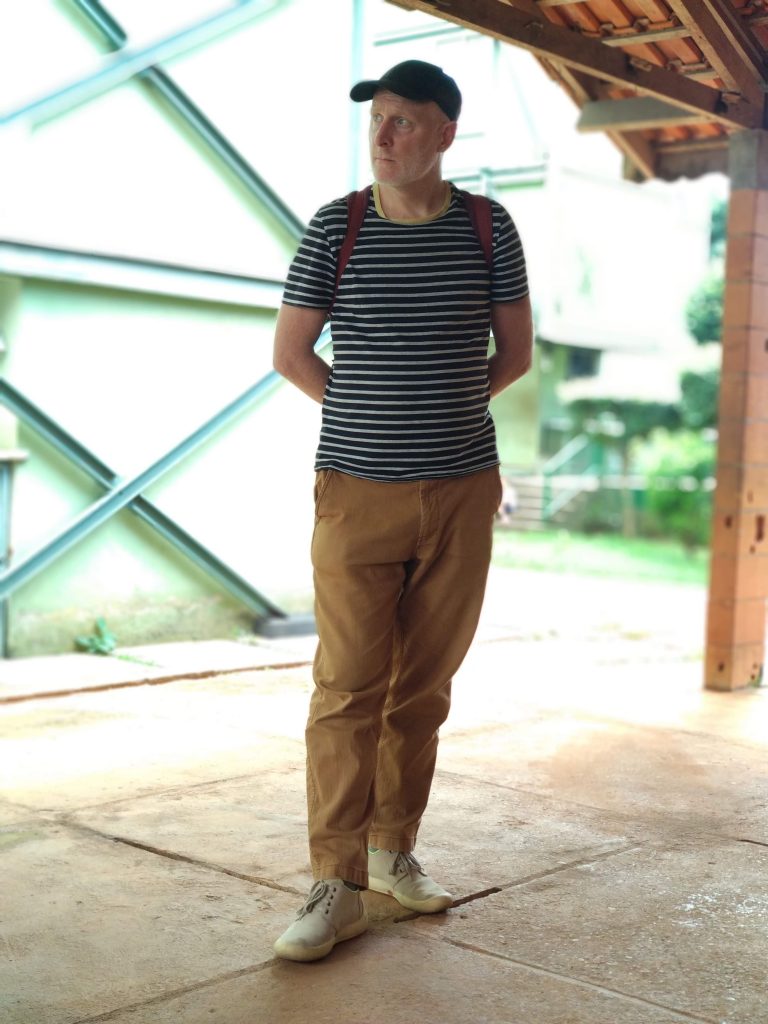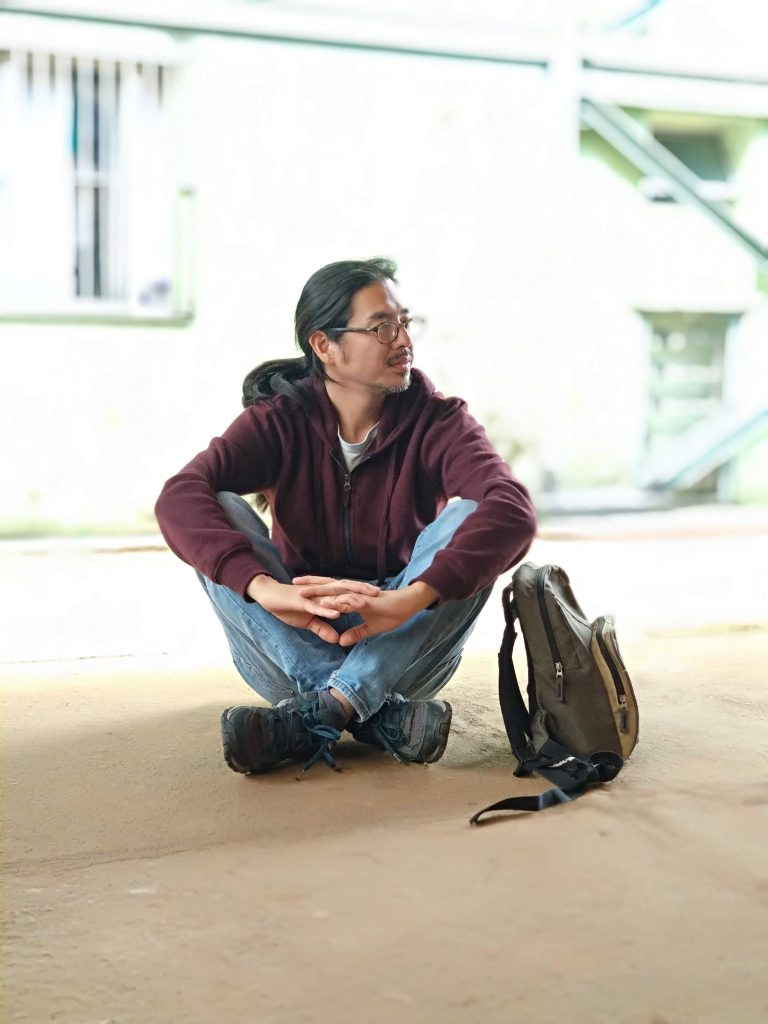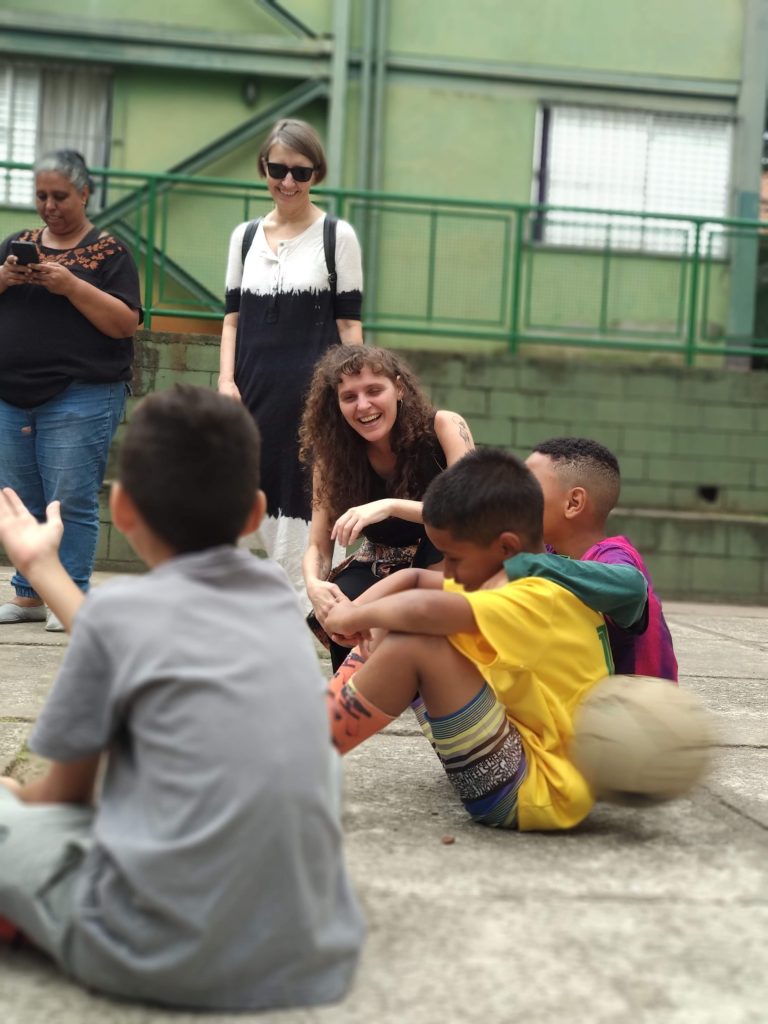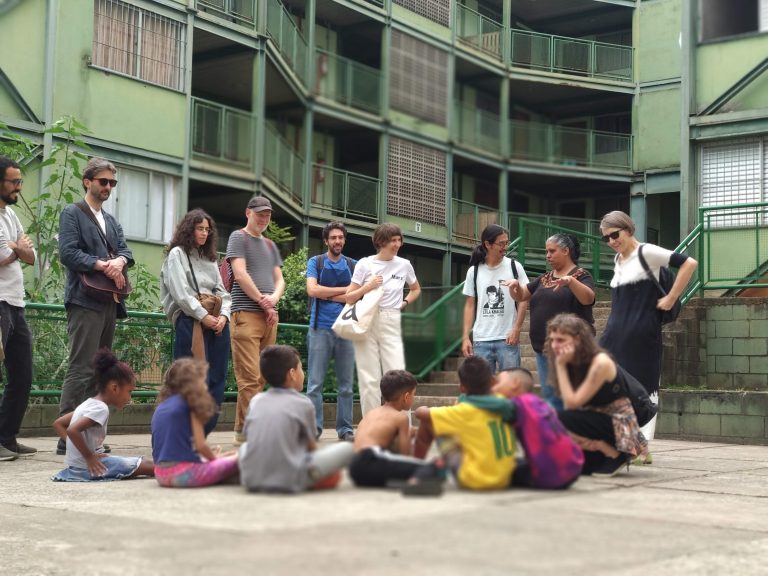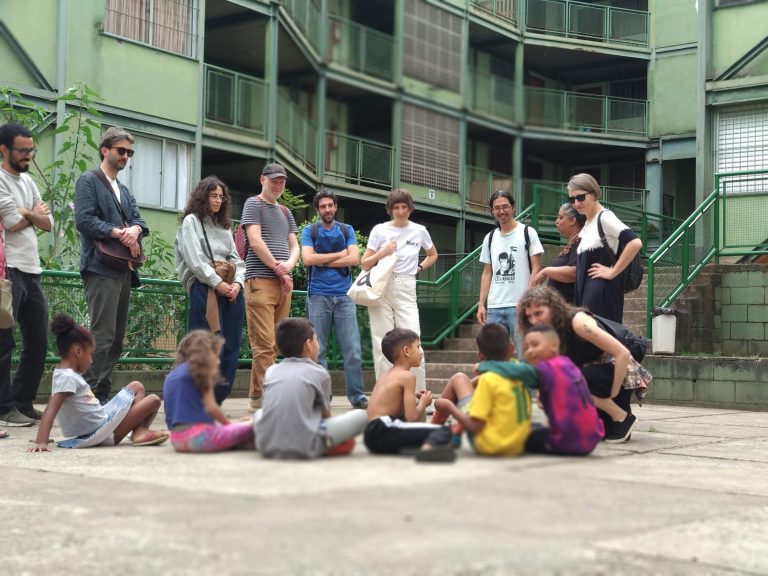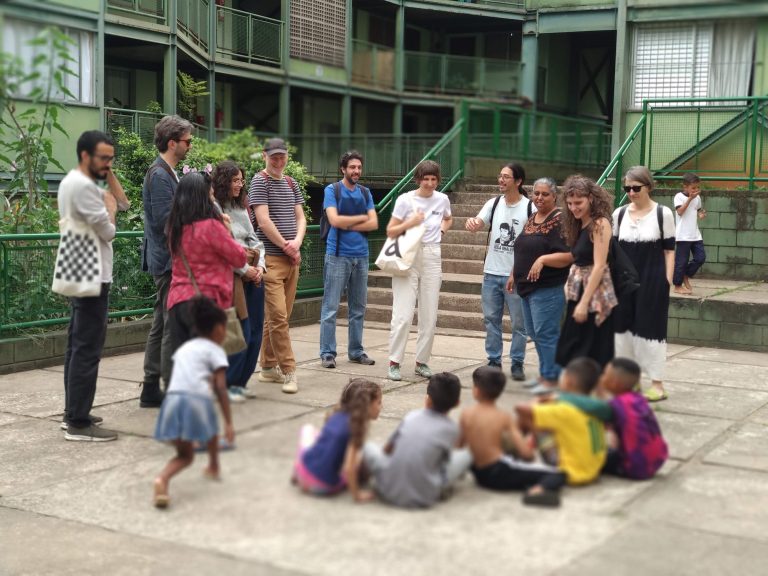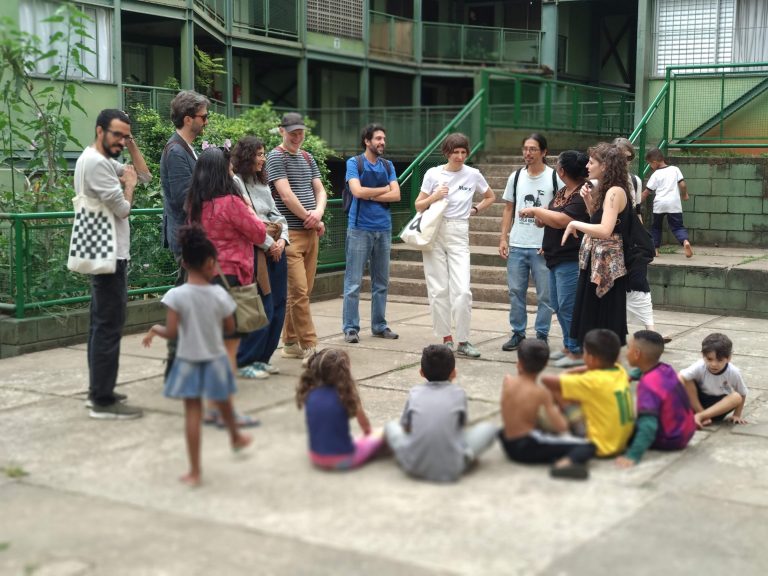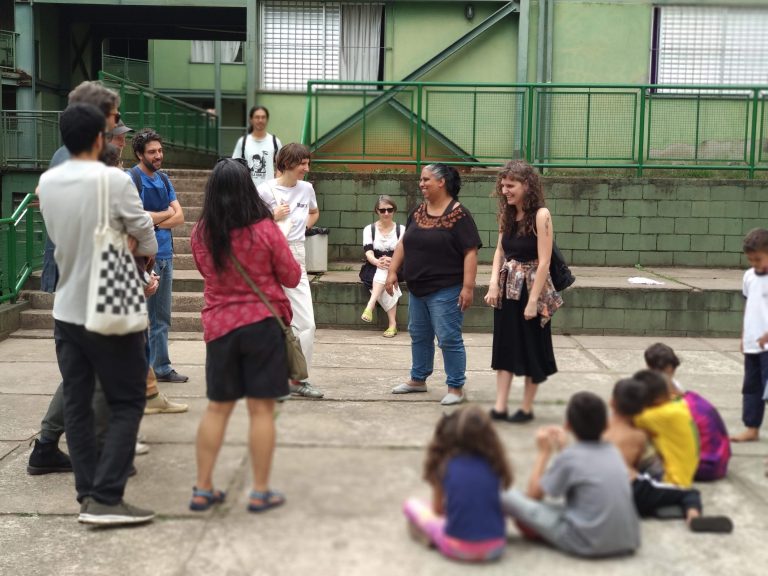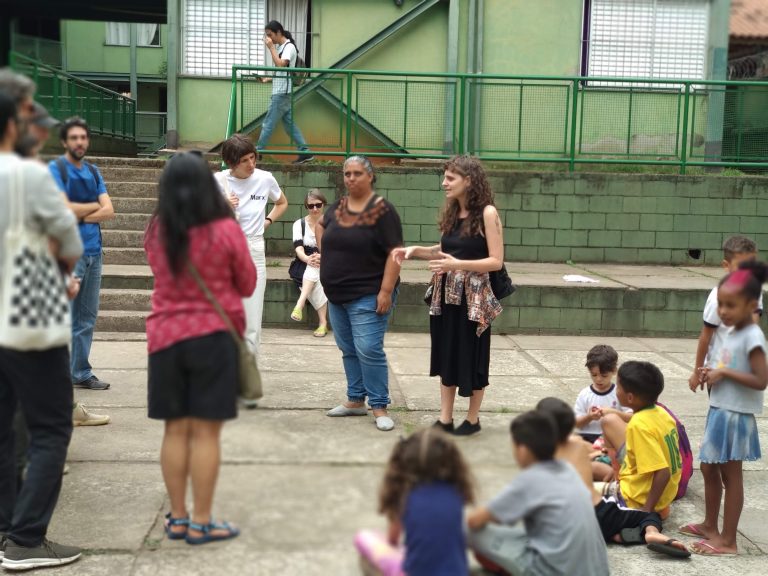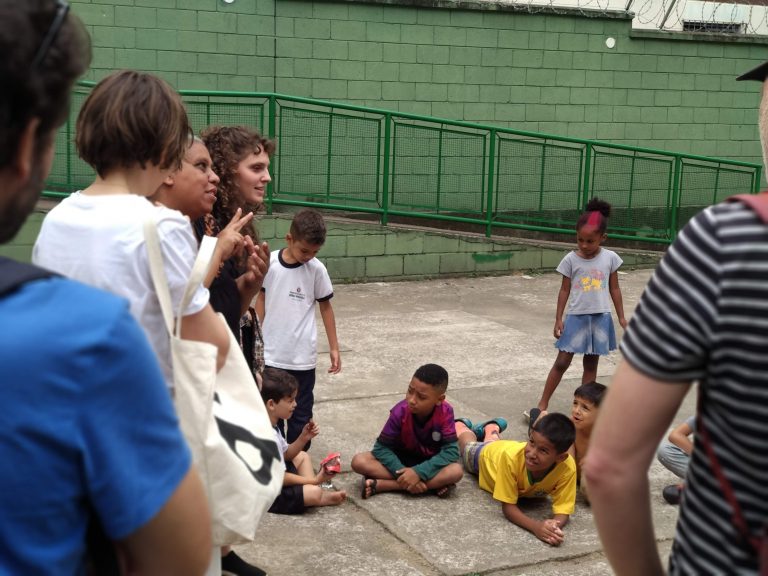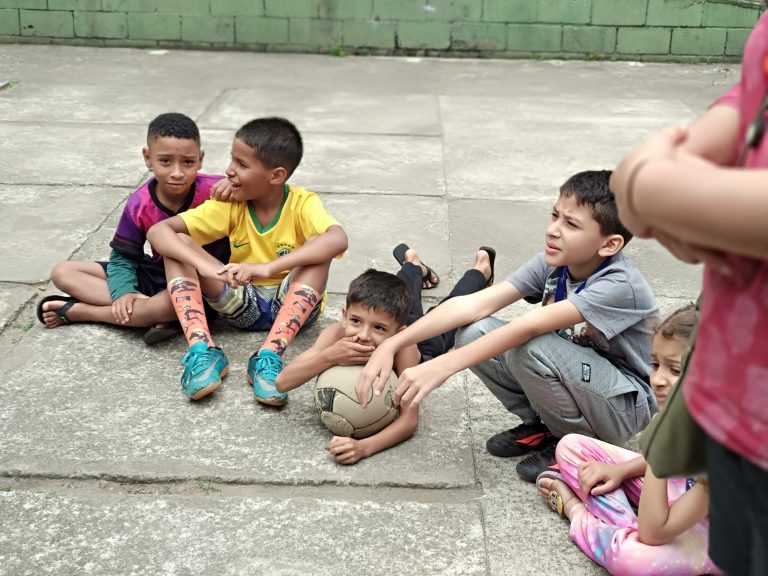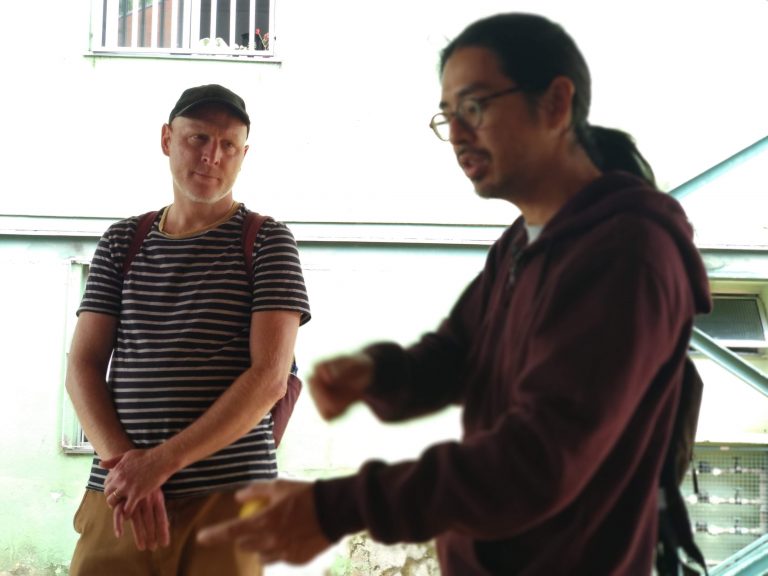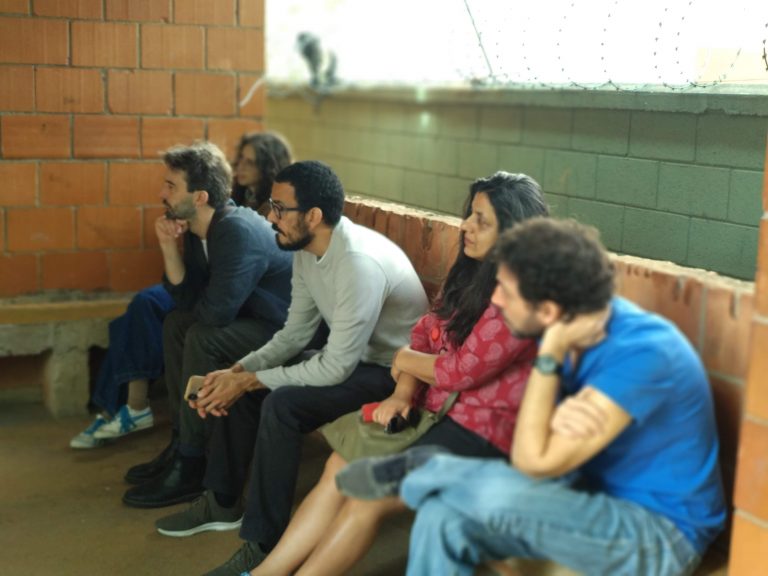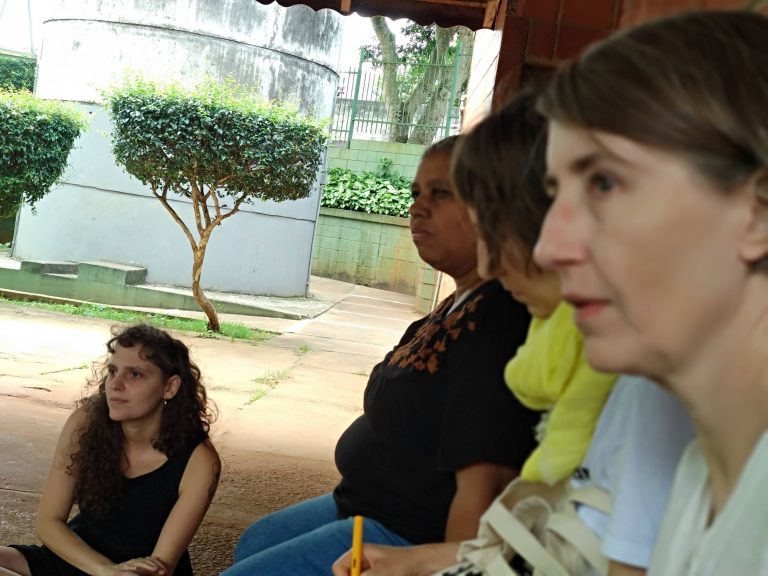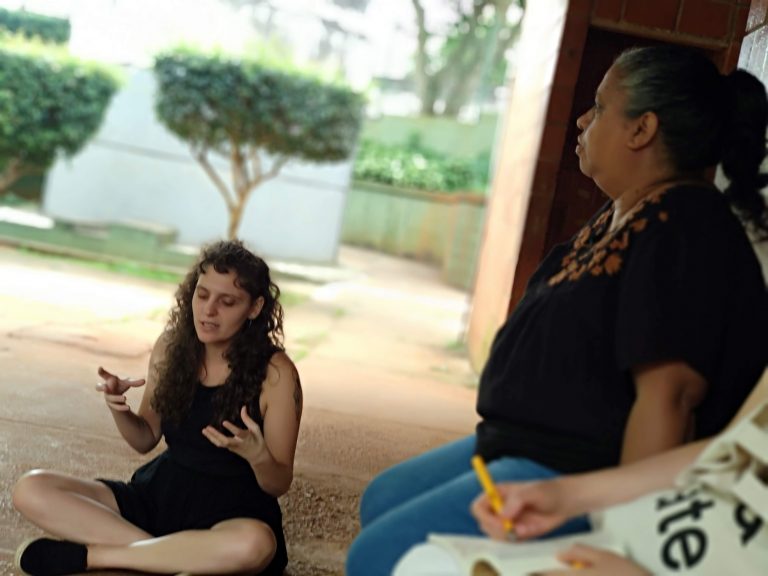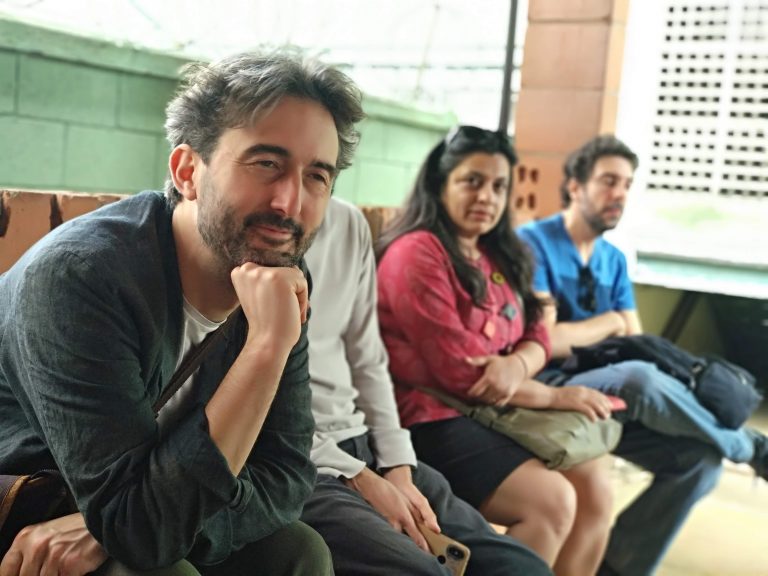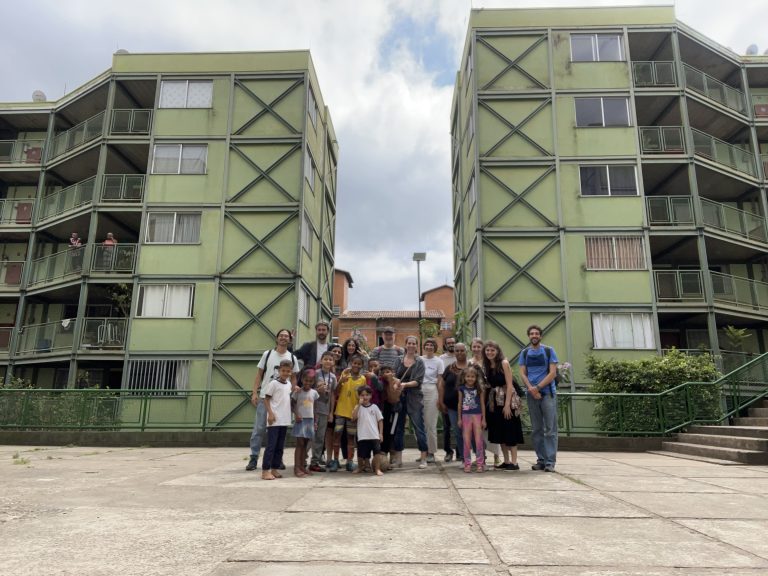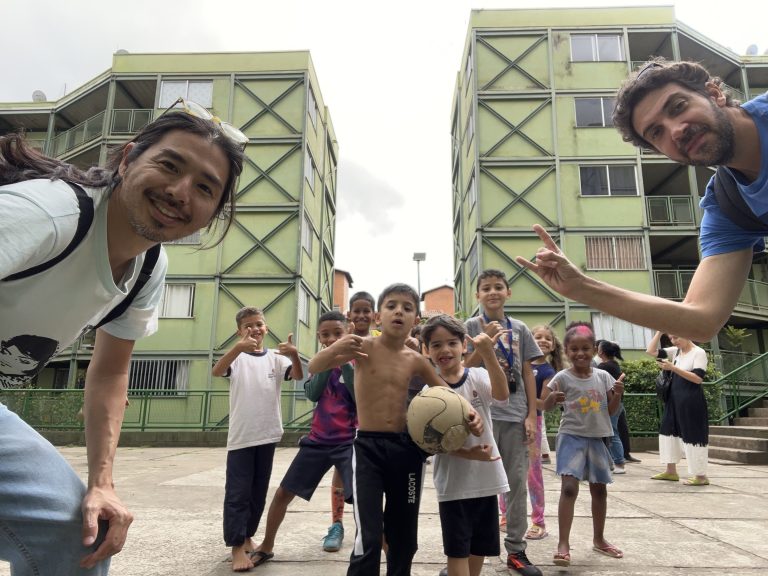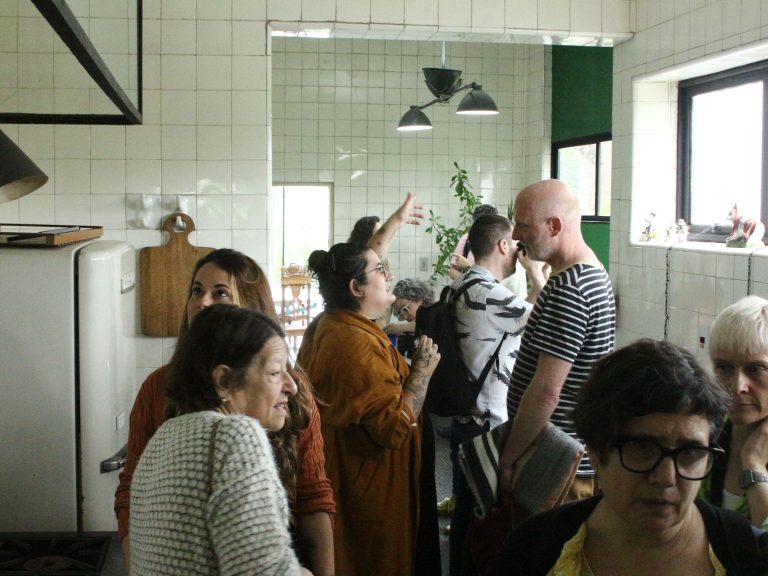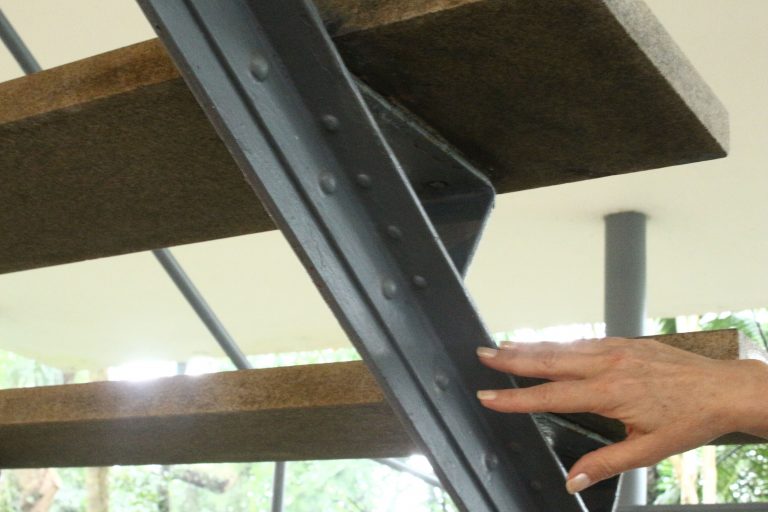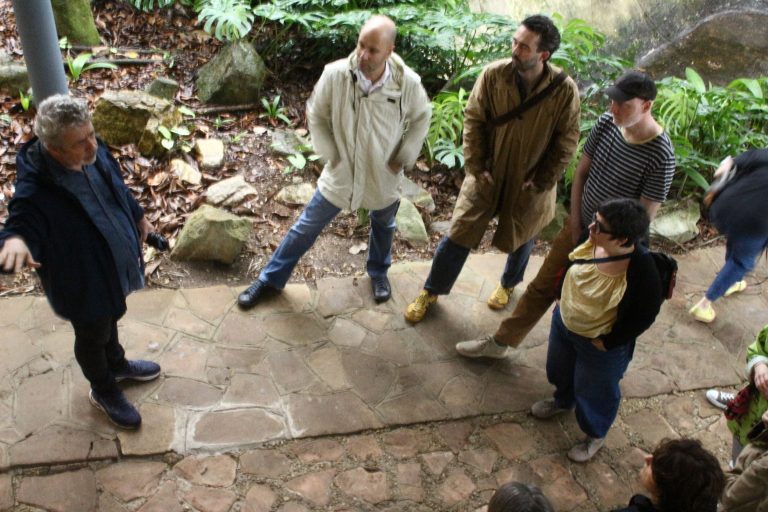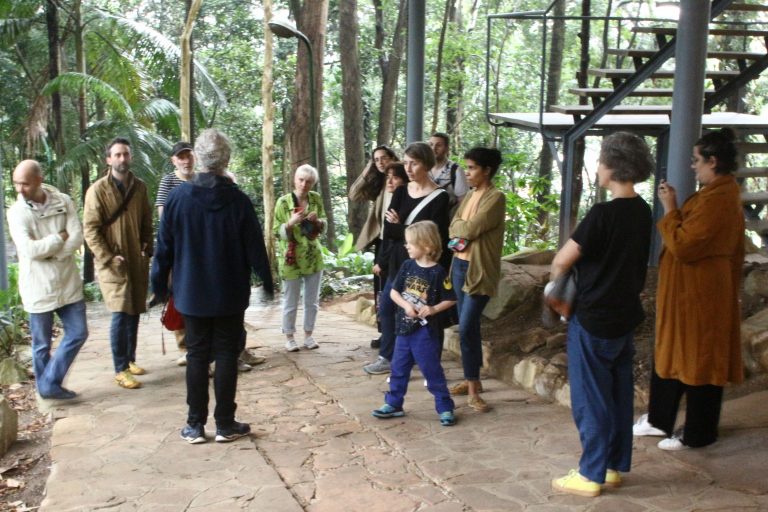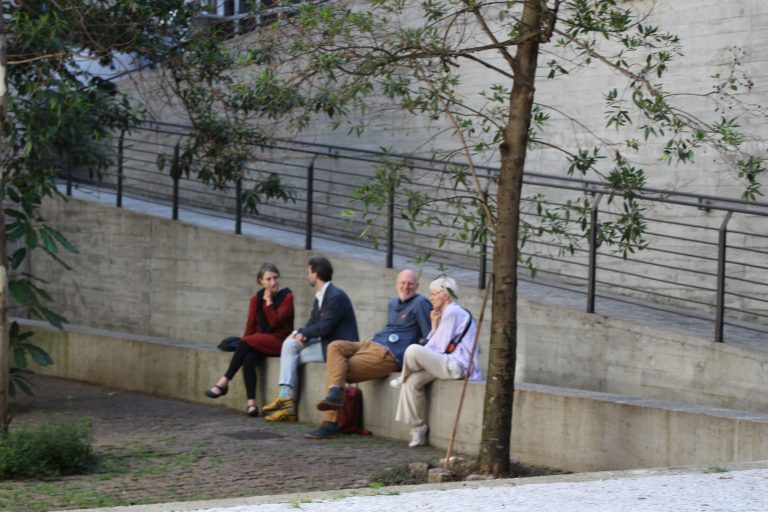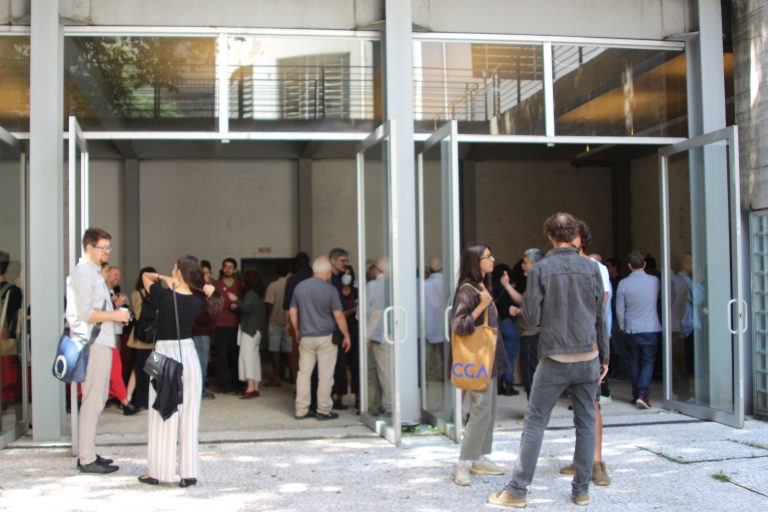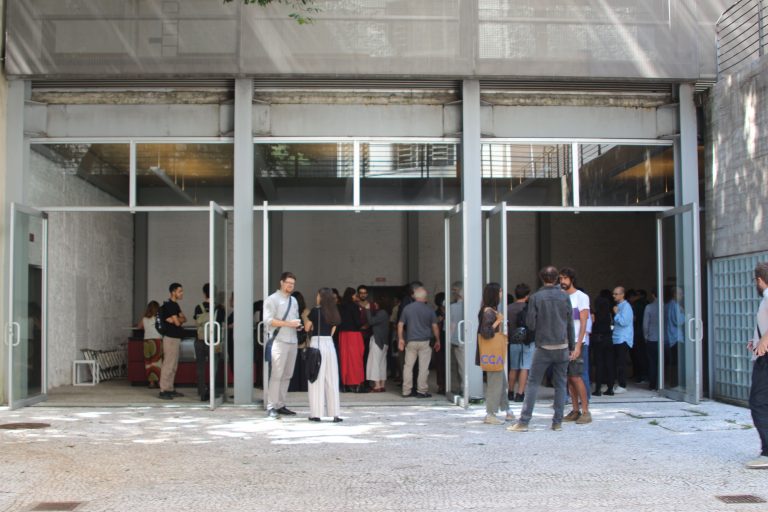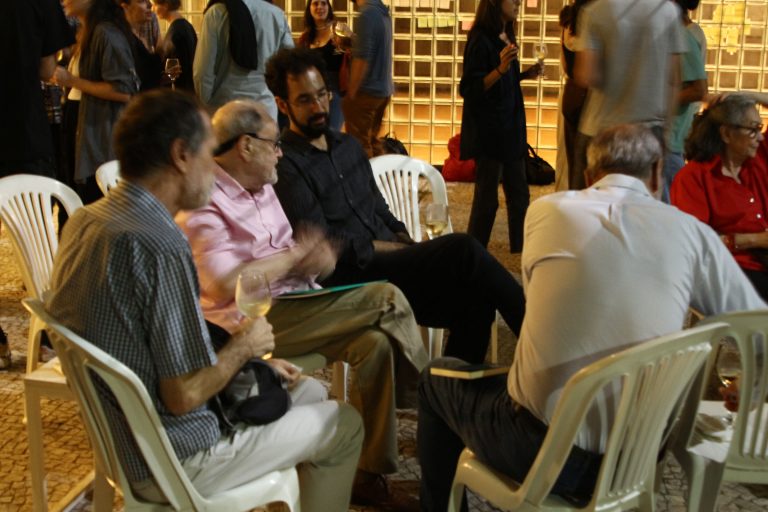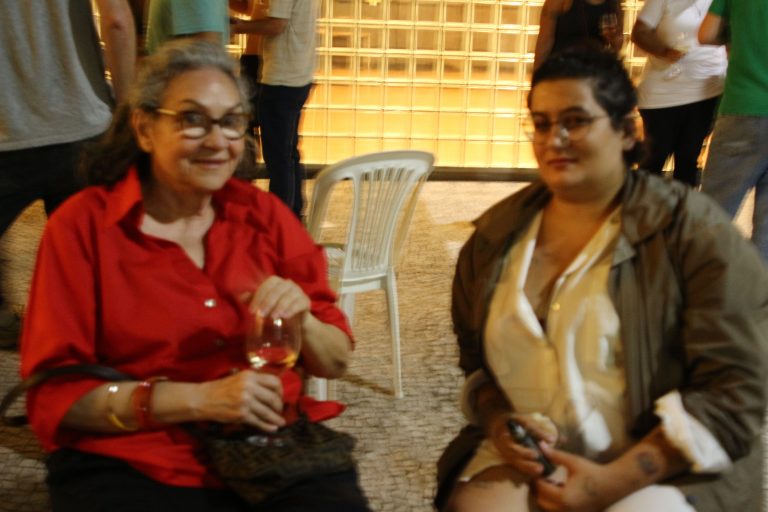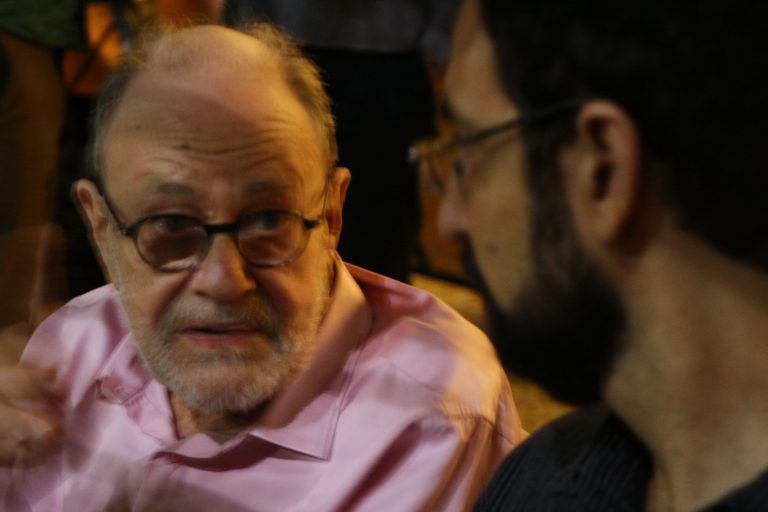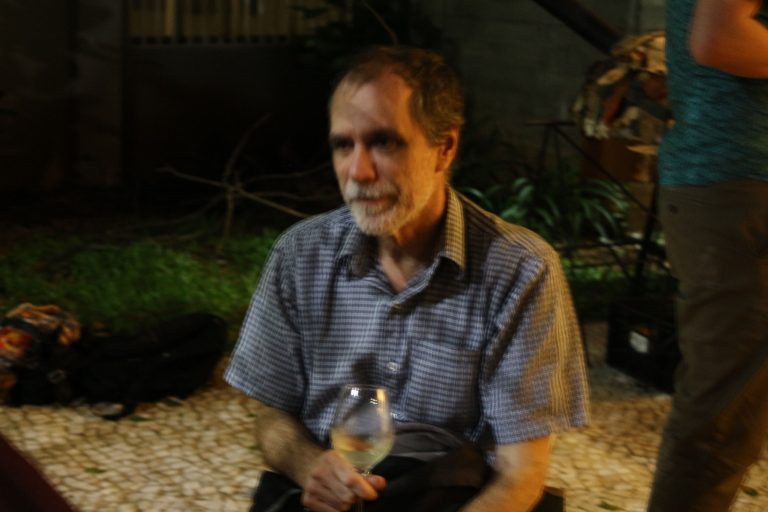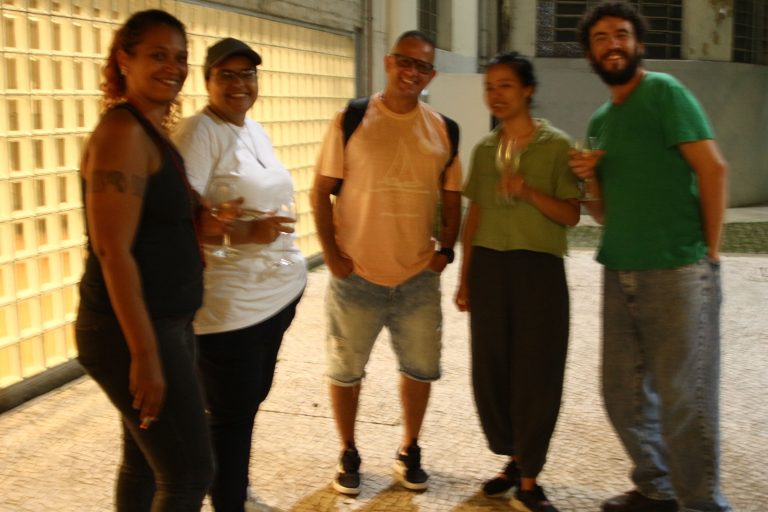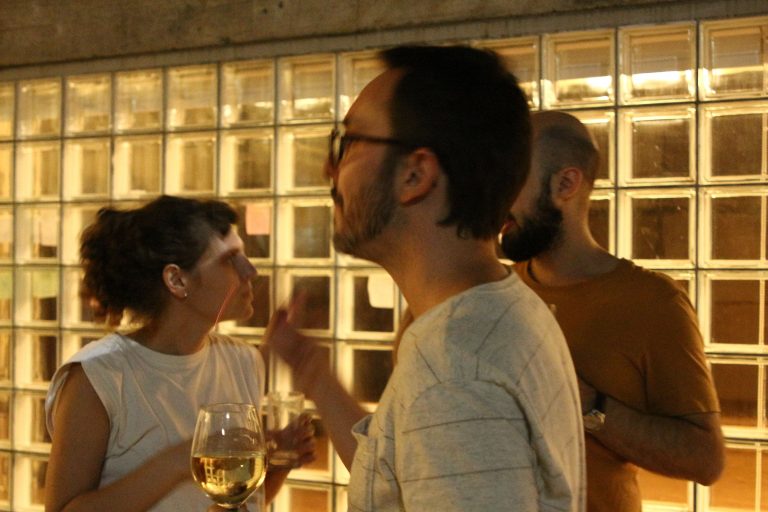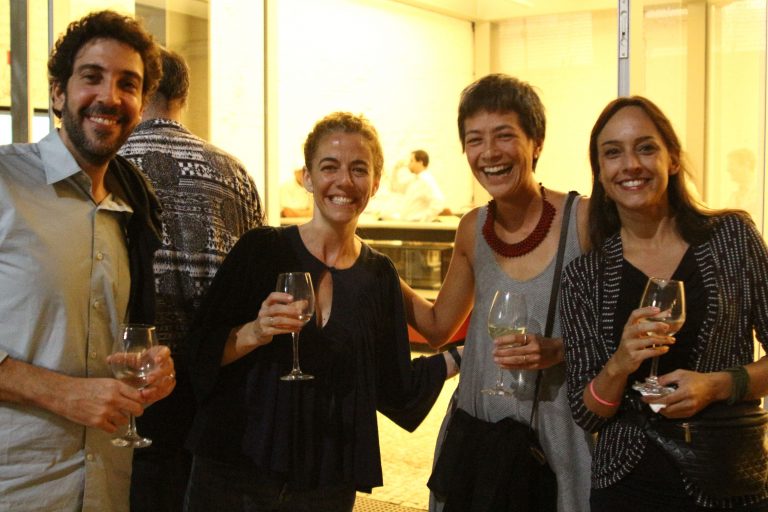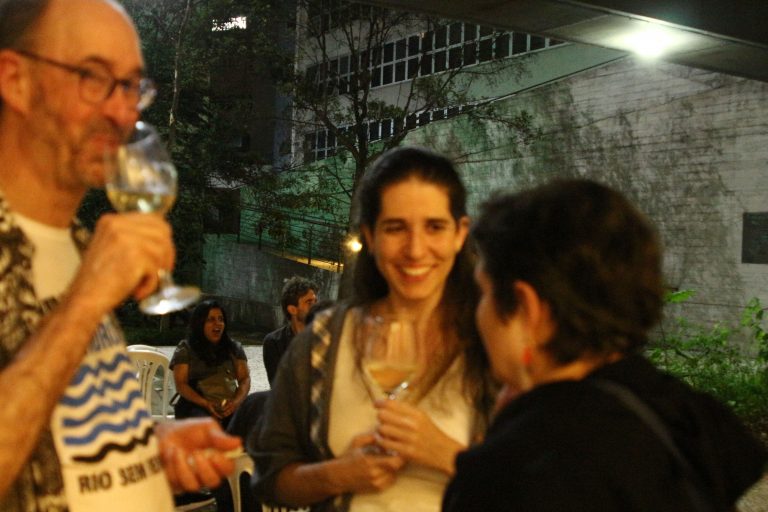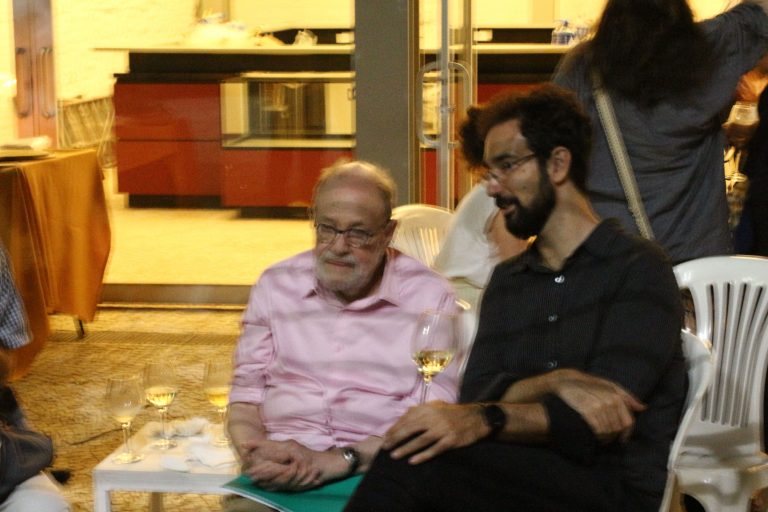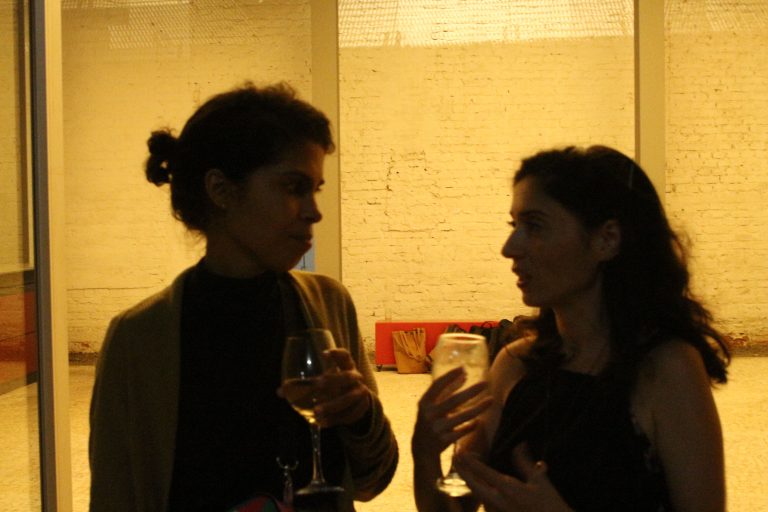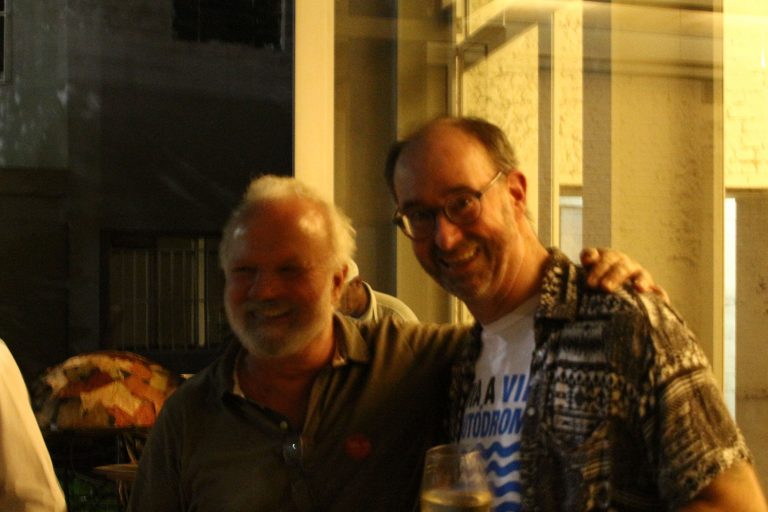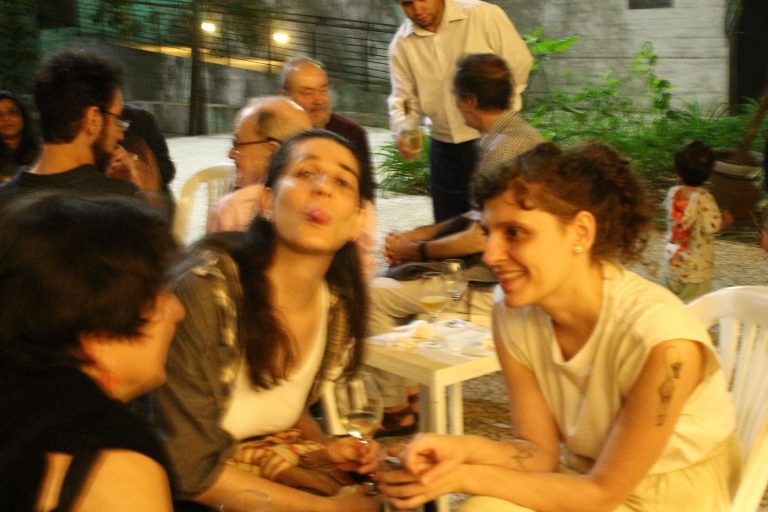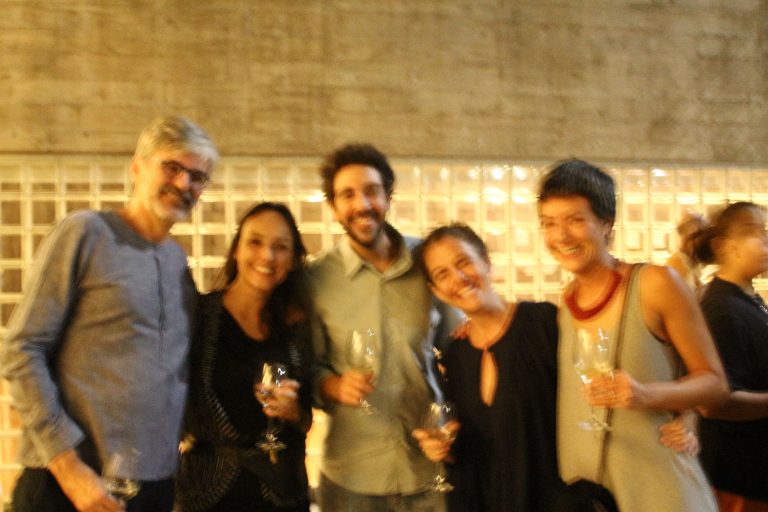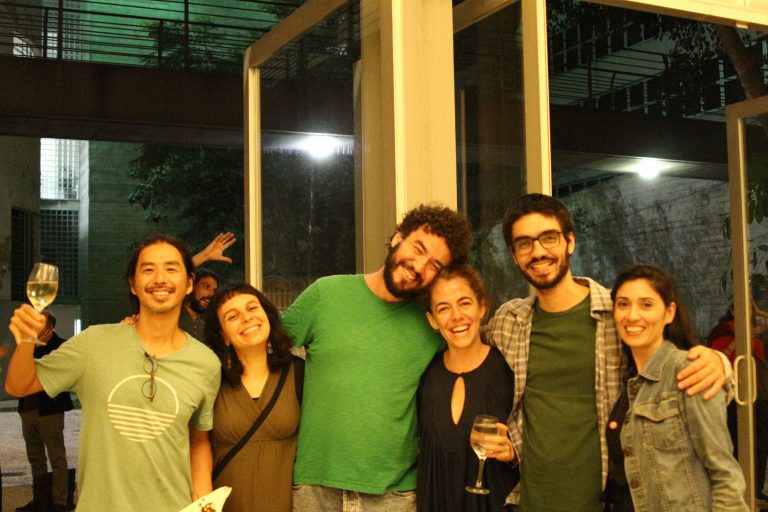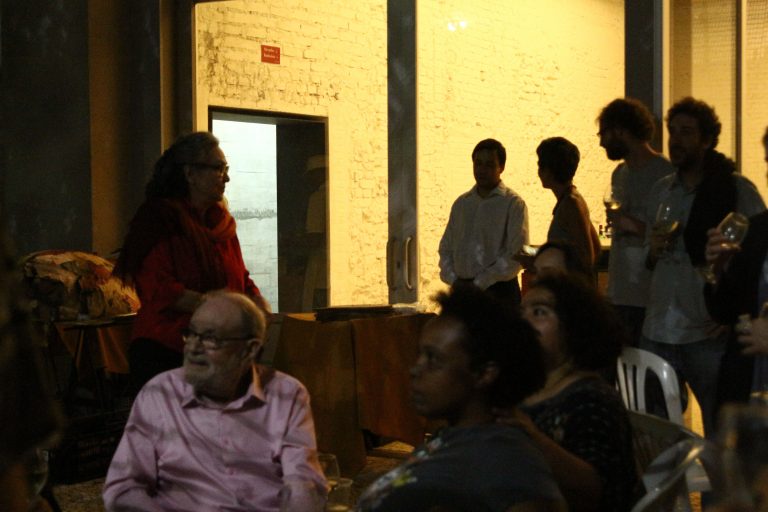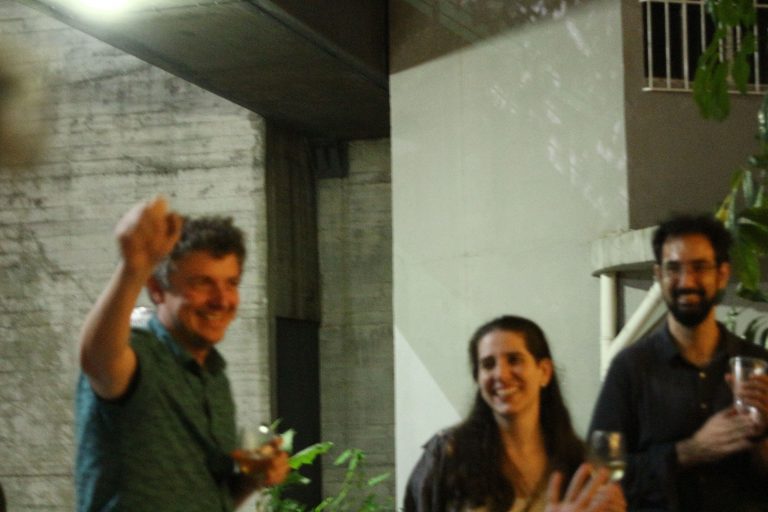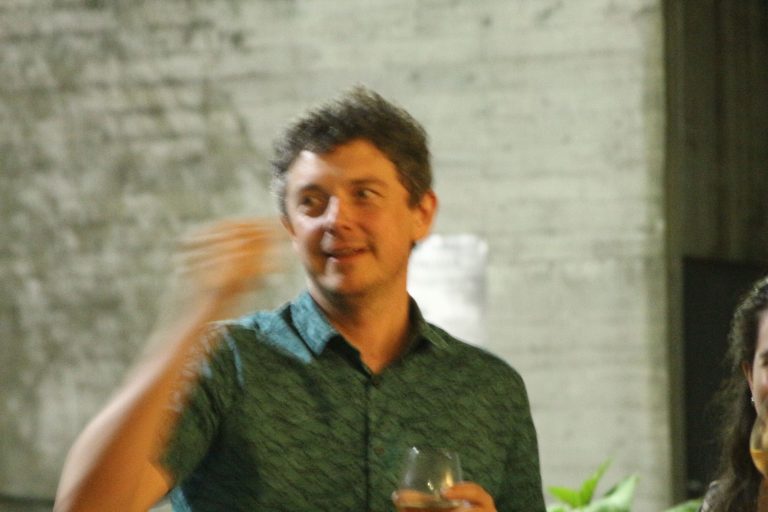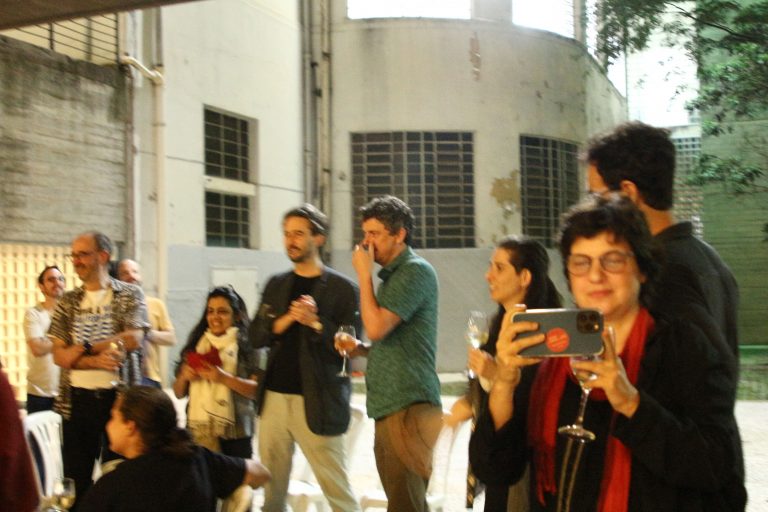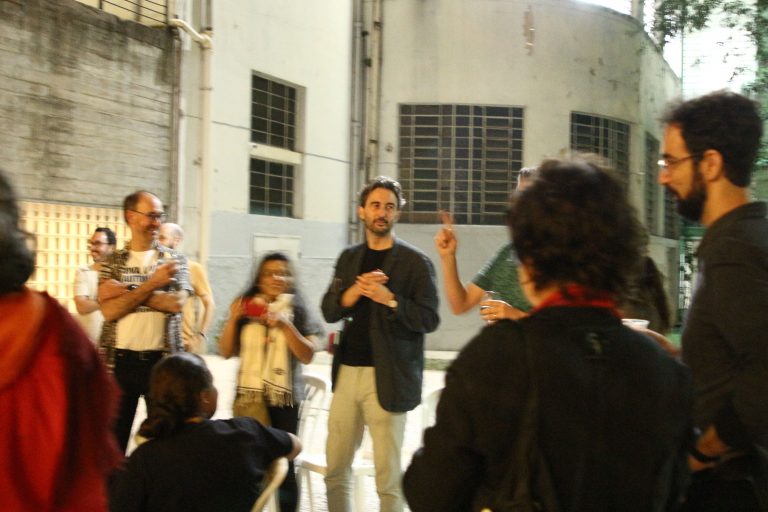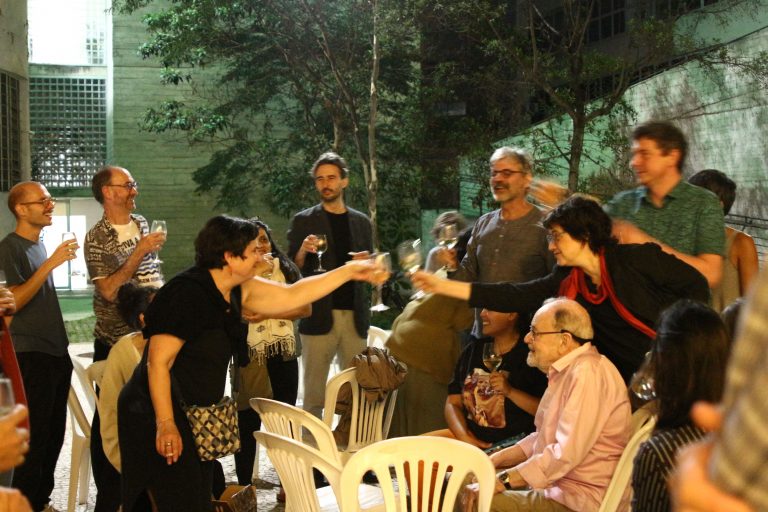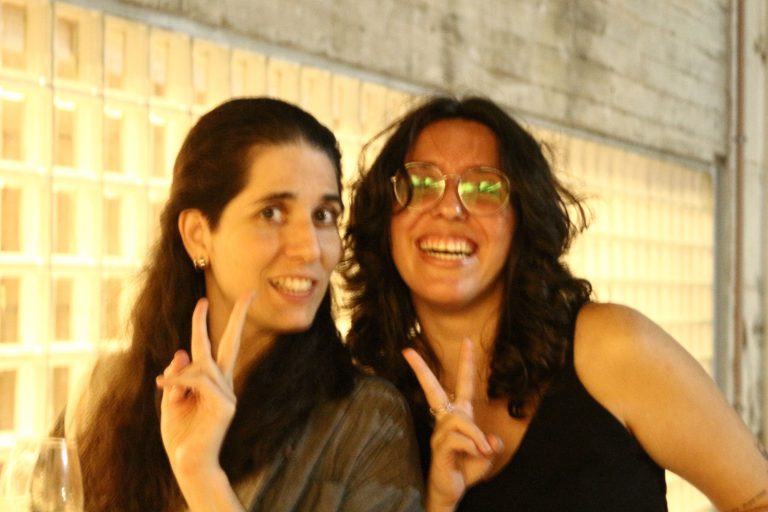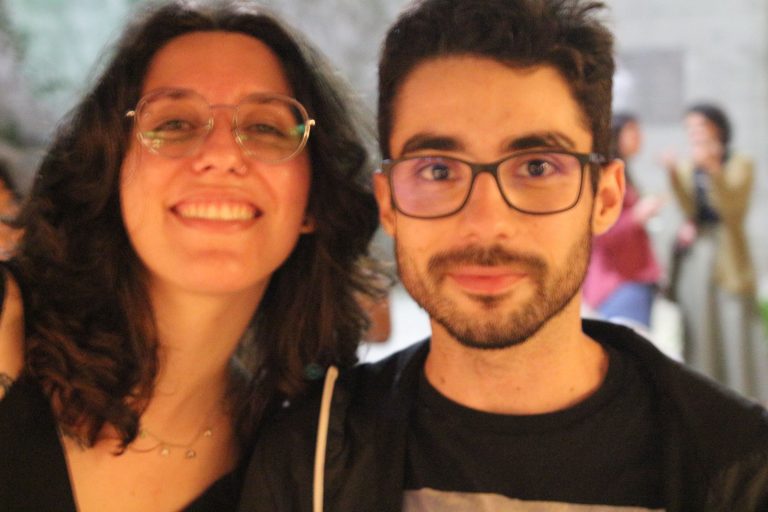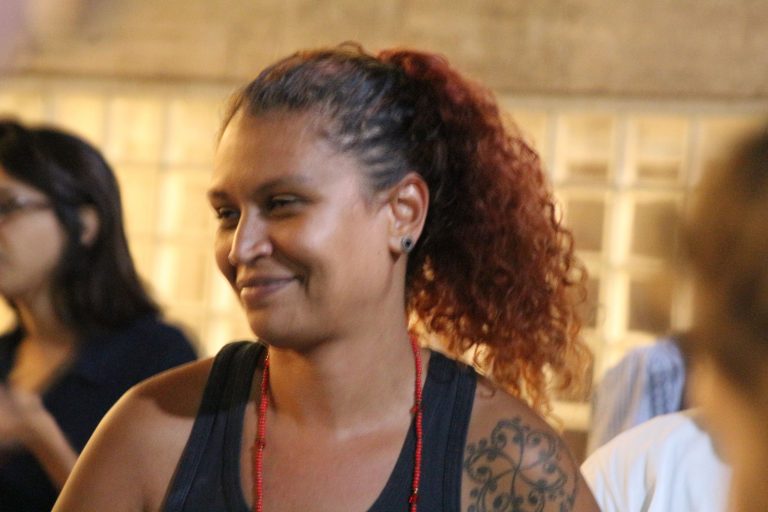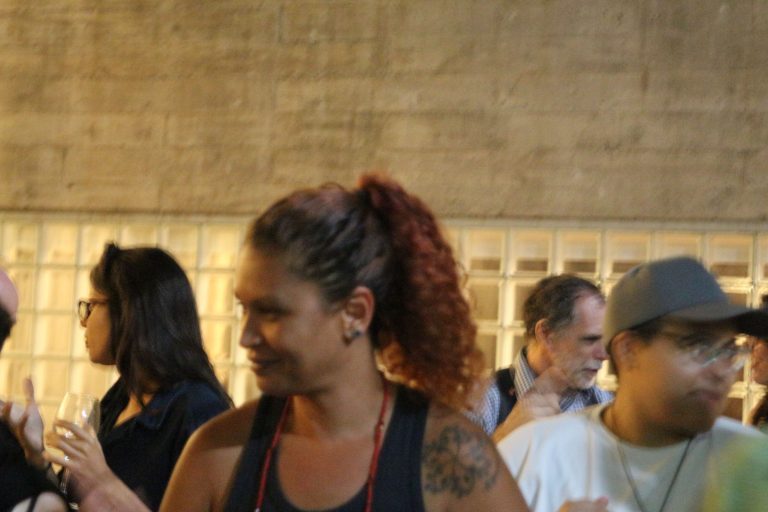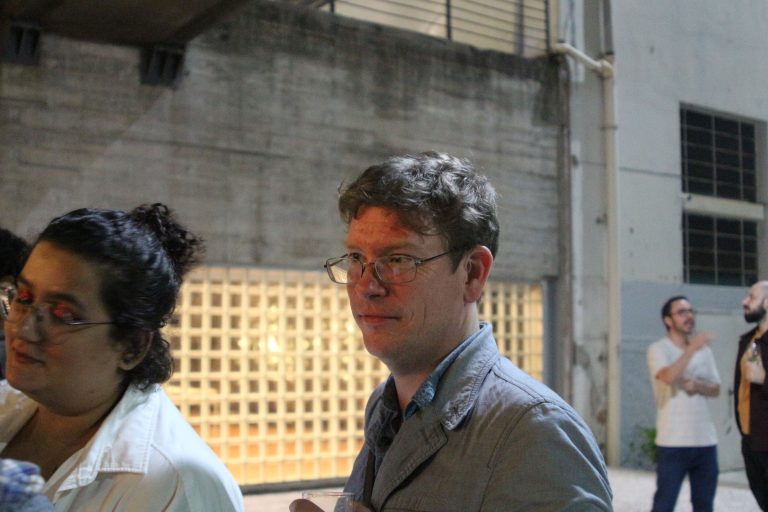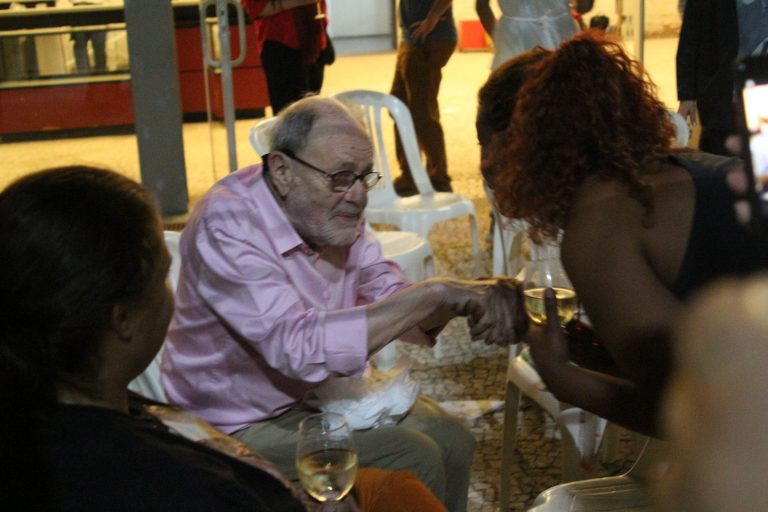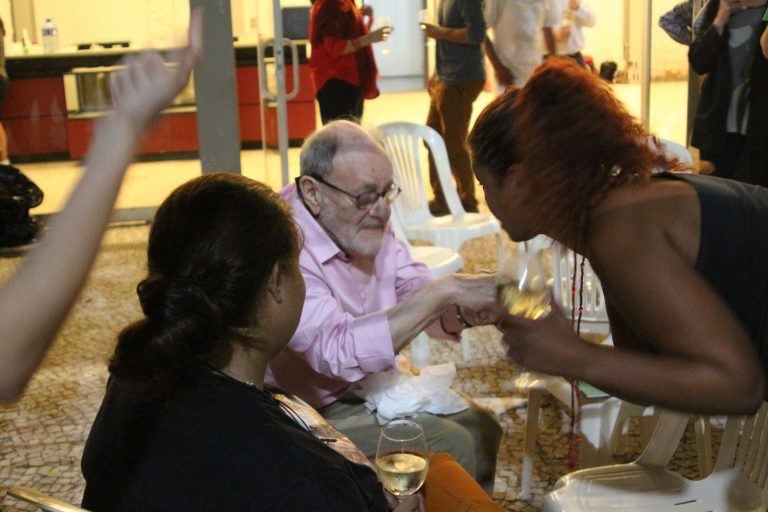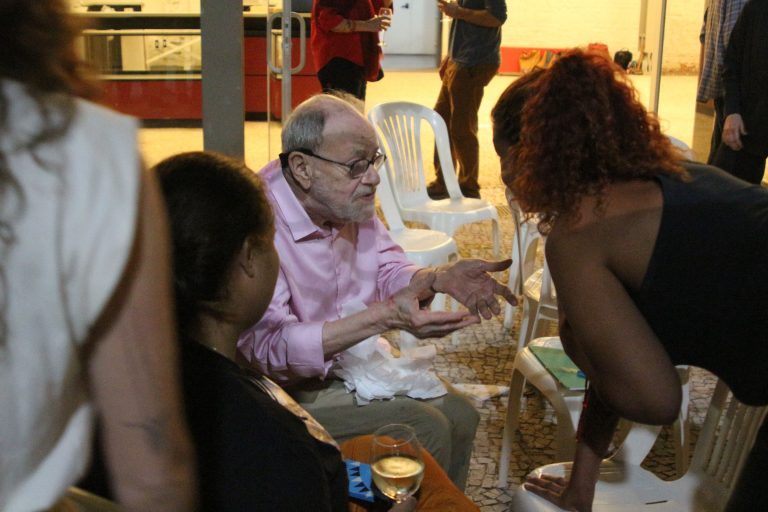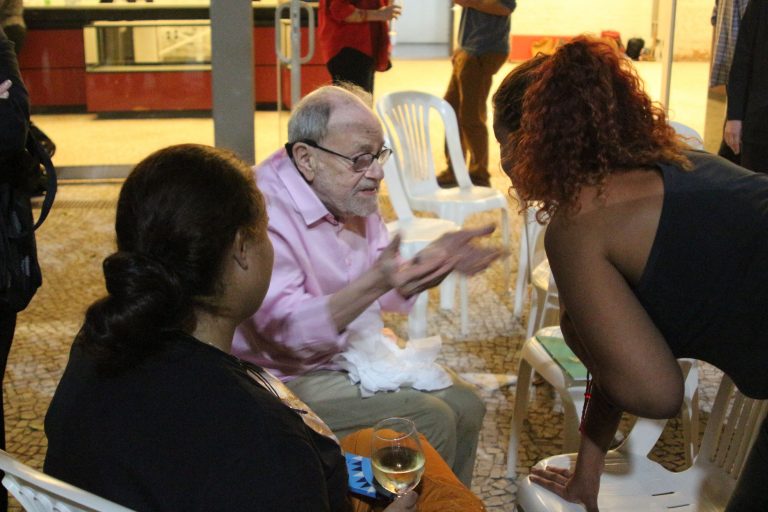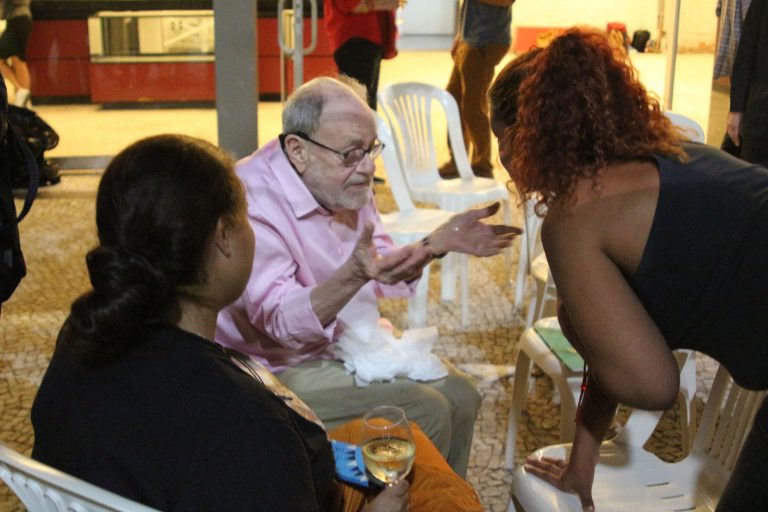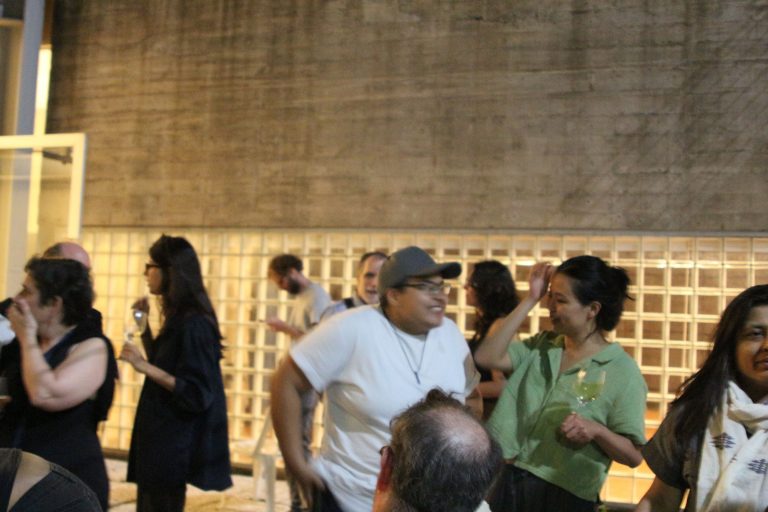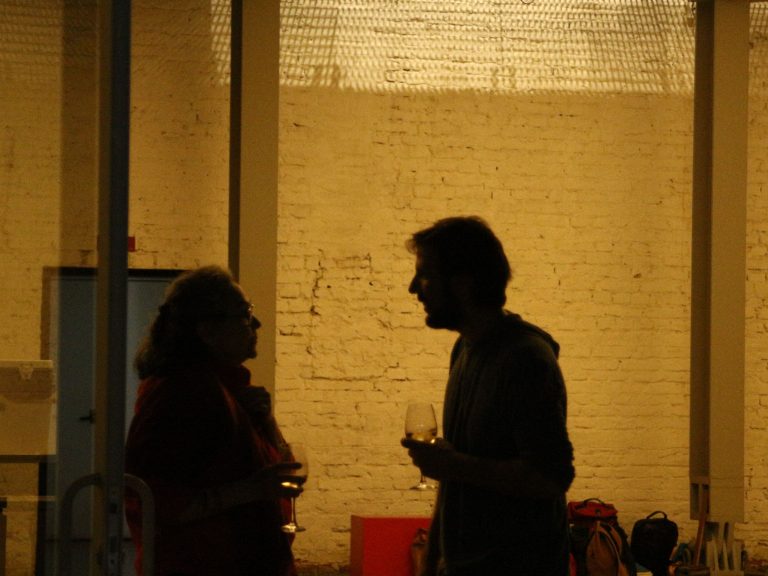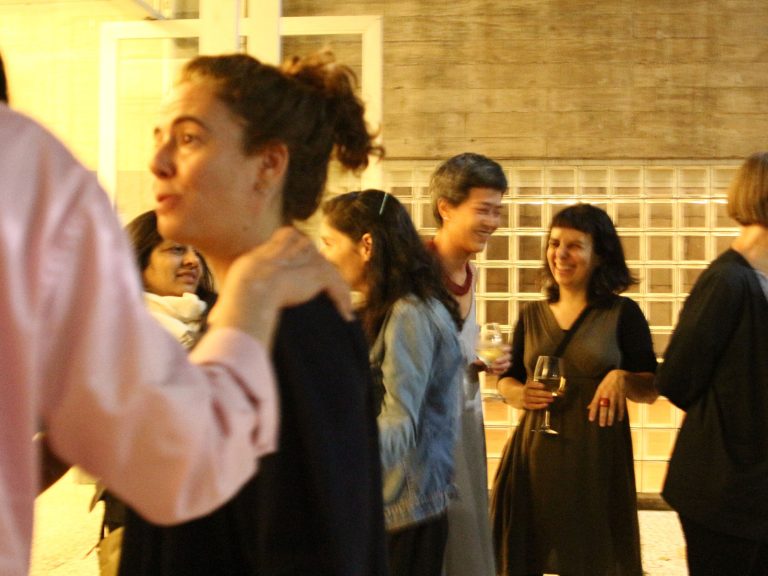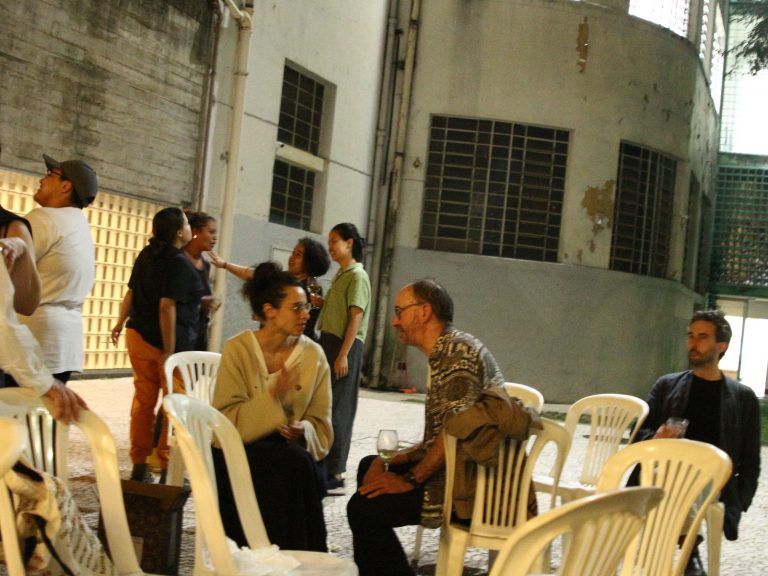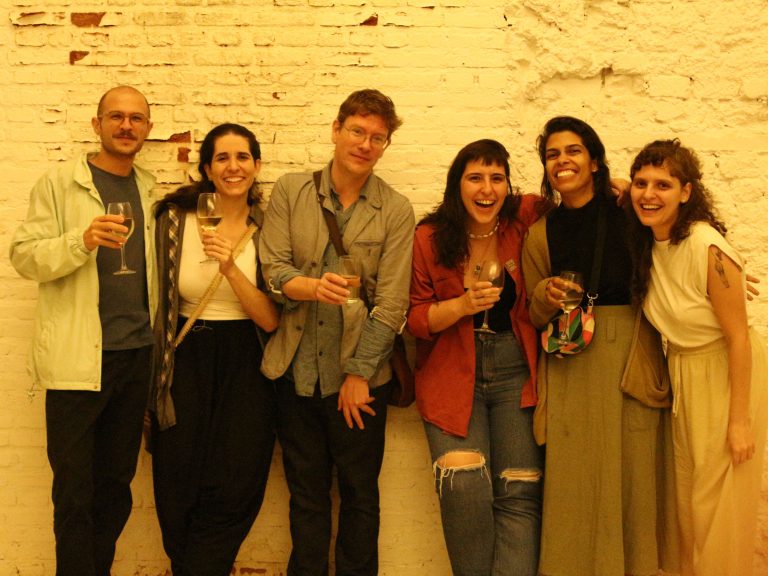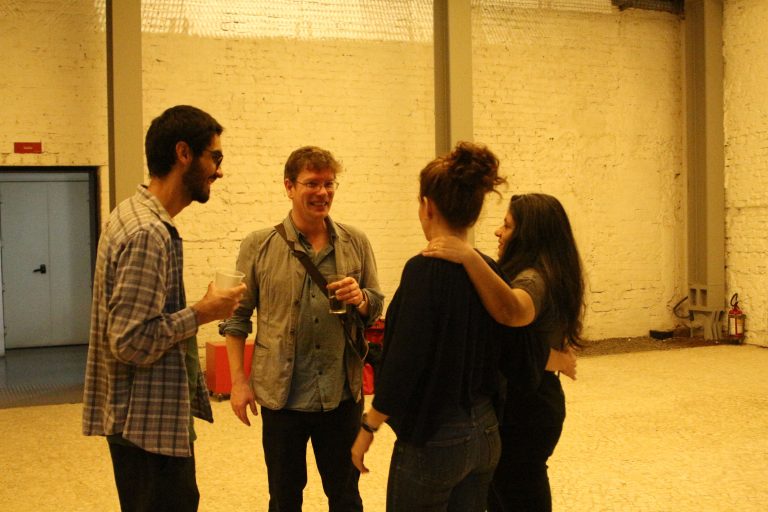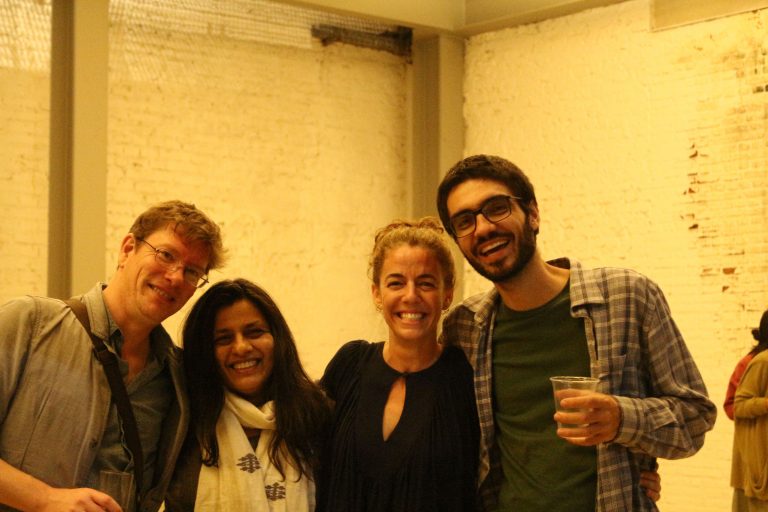WM5.work meeting n°5
In addition to the activities carried out during the International Symposium on Production Studies: Architecture, design and construction site that took place on 4 and 5 April in São Paulo, several other activities aimed at Affiliate Researchers were promoted during the week by the TFTK Core Team composing the fifth Working Meeting. This meeting in São Paulo aimed to bring together the TFTK team to organise common discussions within Production Studies, including the presence of Sérgio Ferro himself, to discuss the organisation of TFTK’s official publications, to make public the construction of this field of research, and to get to know in person some emancipatory works and experiences referenced in production studies and often cited by Sérgio Ferro. In addition to the Symposium, the programme included activities closed to the TFTK group. On the first day of the week, activities took place at FAU USP, such as the opening and exhibition of the event, planning meeting, Symposium preparatory workshop, as well as visits to the FAU building, Rodrigo Lefevre’s collection and the Canteiro Escola. Other activities were part of the meeting after the Symposium, such as the meeting for the organisation of the next event in 2024 and visits.
Opening Session
FAUUSP, Campus Butantã, São Paulo-SP
The opening session of Work Meeting #5 took place at FAU USP, with the participation of Sérgio Ferro, affiliated researchers and TFTK coordinators, as well as the presence of the school’s board of directors, João Sette Whitaker Ferreira (director of FAU USP) and Guilherme Wisnik (deputy director of FAU USP).
Visiting FAU
FAU Building
The participants of the TFTK group were able to tour the FAU USP building in the presence of Sérgio Ferro, a professor at the school before his exile in France. While touring the building, Sérgio reaffirmed his respect and admiration for the architect Vilanova Artigas, author of the building’s project, built between 1961 and 1969. João Batista Vilanova Artigas and Carlos Cascaldi designed the faculty with the pedagogical changes of the university reform in the early 1960s in mind.
Rodrigo Lefèvre’s Archive
The FAU USP Library collection has an extensive collection of original plans, including the “Rodrigo Lefèvre” collection with drawings, plans and photos of projects by Rodrigo Lefèvre and the Arquitetura Nova Group. During the visit to the college building, the TFTK group was able to visit a small sample of this collection selected by João Fiammenghi in the Technical Section of Iconographic Materials with the help of technicians Juliana Lins and Gisele Ferreira de Brito. The plans of the Boris Fausto Residence (Sérgio Ferro, Rodrigo Lefèvre, 1961), those of the Residence for Mr Bernardo Issler (Rodrigo Lefèvre, 1938-1984), those of the Dino Zammataro Residence (Rodrigo Lefèvre, Paulo Madeira, Ronaldo Duschenes, 1970), those of the Normal School and State Gymnasium of Brotas (Sérgio Ferro, Rodrigo Lefèvre, Flávio Império, 1965-66) and those of the Residence for Mr Simão Fausto at Praia da Enrique (Rodrigo Lefèvre, Ronaldo Duschenes, 1970) were exhibited. Simão Fausto at Praia da Enseada, 1961. Some photos and original publications were also exhibited, such as Ou…, nº4, jun.1971 (edited by GFAU), particularly the Juarez Brandão Lopes residence project commented by Lopes and Lefèvre; Acrópole, nº319, jul.1965, where the dossier on the work of the Arquitetura Nova Group was published. Other textual productions were exhibited, such as the famous text by Artigas, “a false crisis”; the 1st edition as a book of “O canteiro e o desenho”, 1979; the publication by GFAU (1972) of “A casa popular” (known today as “the production of the house in Brazil”); On the occasion Sérgio Ferro could comment on the execution of the projects, the details of the drawings and discuss with the group some technical issues in the production of the houses, mainly during their comparison with the projects exhibited there and the different technical and material experimentations experienced by the group.
Experimental Building Site
Right after, the group visited the “Antonio Domingos Battaglia” Experimental Building Site, founded in 1997, a place for experimental classes that provides contact between students of architecture and urbanism with the practice and environment of the construction site.
Workshops
Pre-Symposium Presentations
The associated researchers participated in a Workshop to prepare the Symposium sessions. The groups were separated based on the pre-selected themes in the Collected Edition sections. The discussions took place in the Ateliers environment of FAU USP. During the first day of the Working Meeting, the ARs participated in a Presentation Preparation Workshop. The groups met to plan their presentations for the following day and discuss the connections between them. The groups drew on the titles of the sections proposed for the Collected Edition and presented the related booklets.
2024 Conference
The Conference in 2024 was also a topic of discussion for the group. Some definitions were presented by Prof Katie Lloyd Thomas, such as dates, venues and possible formats for presentations and exhibitions. During the week the group was able to propose some possible topics for discussions during the Conference in 2024.
Visits
São Paulo-SP
The visits were part of the programme of the Meeting, some more directed to the theme of Production Studies, such as visits to the office of USINA CTAH and the work of the Paulo Freire residential complex, and others more “freely” with the aim of recognising some referential works of architecture in the city of São Paulo.
Usina CTAH Archive
During the visit to the USINA CTAH office, the TFTK team was shown some of the projects in the collection, while at the same time being able to experience the working environment of the technical consultancy. In the midst of small technical meetings, ongoing projects, planning and the entire operation of the office, the TFTK team learnt about some of the projects carried out, the methods used, and the different forms of presentation and representation. Some members of the advisory service were able to present projects in which they had participated, pointing out all the difficulties and contradictions encountered during the processes of project definition, approval and execution of the works. During the visit, Sérgio Ferro received from Flavio Higuchi, a member of USINA and TFTK, a letter prepared in 2018 during the Latin American Meeting of Community Architecture, where representatives from Argentina, Bolivia, Brazil, Chile, Mexico, Uruguay, Venezuela, Paraguay and Colombia were in favour of the reinstatement of Sérgio Ferro to his teaching staff at FAU USP as a measure of historical reparation.
Mutirão Paulo Freire
Another important visit was to the residential complex developed by USINA CTAH for 100 families in the East Zone of São Paulo through a mutirão programme. The project was the result of many struggles by the Paulo Freire Community Building Association, founded in 1988 through the Landless Workers’ Movement, linked to the Union of Housing Movements (UMM). The programme of the complex was built with the residents, including open areas, the community centre and different residential typologies.
Lina bo Bardi’s Glass House
The group also visited the residence of the couple Lina Bo Bardi and Pietro Maria Bardi, in the Morumbi neighbourhood of São Paulo, built in 1951. Today, in addition to being able to visit the garden and the interior of the house, with temporary exhibitions, the venue houses the headquarters of the Bardi Institute / Glass House.
GET-TOGETHER
Centro Maria Antônia, São Paulo-SP
One of the highlights of the meeting was the integration of the group in a pizzada in the square of the Maria Antonia Centre.

